





















































































































































































































































































MAY 17 | 2025 YAMAHA YZF-R7
MAY 31 | 2025 ACURA TLX
JUNE 14 | 2025 KAWASAKI VULCAN








































































































IN MAY, JUNE & JULY | 4PM – 10PM

entries daily | 50 points = 1 entry
JUNE 28 | 2025 GENESIS G70
JULY 12 | 2025 INDIAN SCOUT
JULY 26 | 2025 MASERATI GHIBLI























































































































































































































































































MAY 17 | 2025 YAMAHA YZF-R7
MAY 31 | 2025 ACURA TLX
JUNE 14 | 2025 KAWASAKI VULCAN








































































































IN MAY, JUNE & JULY | 4PM – 10PM

entries daily | 50 points = 1 entry
JUNE 28 | 2025 GENESIS G70
JULY 12 | 2025 INDIAN SCOUT
JULY 26 | 2025 MASERATI GHIBLI

Hugh Crisp has been a trial lawyer for 39 years, but he still feels like he’s never worked a day in his life. Being a trial lawyer fulfills both a passion and a lifelong dream for Crisp.
“Things worked out perfectly for me,” he says.
From the firm’s office in downtown Little Rock, Crisp’s work includes an emphasis on medical malpractice and catastrophic injuries. These are some of the most difficult cases imaginable, due to having to learn the medicine for each case and applying the law to the circumstances to each case.
Instances of medical malpractice are when a patient is harmed by the negligent acts or admissions of a medical care provider.
Wrongful death in a medical malpractice case is a death caused by the negligent acts or omissions of medical care providers. Recent studies show that one of the leading causes of death in the United States is medical errors, accounting for 251,000 deaths annually.
“At the Crisp Law Firm, we have a personal relationship with each individual we represent and are committed to devoting the time and resources necessary to achieve the very best results for our clients,” he says.
Such a deep-hearted commitment to the client brings about peace of mind, in addition to his many distinguishing honors that identify him as one of the best in the field of medical malpractice. Crisp is rated AV Preeminent by Martindale-Hubbell, the highest rating for an attorney practicing in the United States. He has been honored by numerous publications in Arkansas and around the South as one of the best lawyers in the field of medical malpractice, as well as peer-reviewed associations such as being a Mid-South Super Lawyers honoree for many years, and as well as Best Lawyers in America®.
The accolades and accomplishments go on and on for Crisp, all of which are rewarding. But at the end of the day, it hasn’t moved the needle on the most important things in his mind — his clients, and helping them find justice.

There’s so much to explore in Searcy! From downtown events and foodie approved eats to holiday lights and a high quality of life, our “big small town” is your perfect place for a weekend – or a lifetime. Get started at experiencesearcy.com today.

JULY 4 IN SEARCY
> Farmers Market | Saturdays
> Pioneer Village Tours | Saturdays
> United We Stand | July 4
> White County Fair | Sept 8-13
> Get Down Downtown | Sept 26-27
> Holiday of Lights | Nov/Dec









The Pulaski County School District (PCSSD) is proud to spotlight standout students at each of the district’s four high schools — Joe T. Robinson, Maumelle, Mills University Studies, and Sylvan Hills. This school year alone, 29 PCSSD students joined the “30+ Club,” a group of students who have scored 30 or higher on the ACT, putting them in at least the 93rd percentile of test takers across the country.
In addition to this impressive group, 48 rising seniors will be attending prestigious programs through Arkansas Governor’s School, Arkansas Girls State and Arkansas Boys State. PCSSD Executive Director of Communications, Jessica Duff, spoke with students to spotlight their nextlevel accomplishments.

forward to exploring scientific concepts and diving into hands-on research,” shares Mohammed. Miray, who plans to enter the medical field, hopes to move toward her future career, “This program will allow me to interact with professionals and peers who share similar interests.”
13 Governor’s School
19 Arkansas Boys State
16
31

Reese Shearon of Maumelle High attended Arkansas Boys State at the University of Central Arkansas from May 25-30. This program immerses rising seniors in civic education. Students must be nominated by an educator to attend and Reese believes his time at Maumelle High prepared him well. “It has helped me by becoming a better leader and person. I exhibited leadership by being a helping hand, serving others, and being kind in the classroom.”

Twins Mohammed and Miray Fahmi of Joe T. Robinson High are both excited to study natural science at Arkansas Governor’s School. The program will be held at Arkansas Tech University between July 6 and August 2. “I’m really looking

Mia Brooks, a senior at Mills University Studies and member of the 30+ Club, offers tips to other students who aspire to make a standout ACT score. “My advice is to take practice tests! I’ve also utilized resources like the free ACT prep courses and the prep guide. Although the size of that book is scary, it really did help me out. (Thanks, Mom!)”

Piper Owens may have been new to Sylvan Hills High this past school year, but she was able to plug in and prepare for leadership opportunities like Arkansas Girls State at Harding University. Reese learned the art of argument from her AP English teacher, Timothy Sisk, and was even able to attend another leadership camp, Rotary Youth Leadership Awards, through her school. Girls State will also support Reese’s next steps, “Going to Girls State will look amazing on college resumes, so if you plan on going to college, I recommend getting involved at school and going to things like Girls State.”
9 Arkansas Girls State ACT 30+ Club Total Seal of Biliteracy
ABOUT PCSSD
Pulaski County Special School District spans more than 600 square miles in central Arkansas and requires highly skilled and passionate personnel to adapt educational policies and personalization to 25 schools. Every school is accredited by the Arkansas State Board of Education. PCSSD has served schools across Pulaski County since July 1927.
PCSSD is committed to creating a nationally recognized school district that assures that all students achieve at their maximum potential through collaborative, supportive and continuous efforts of all stakeholders.
PRESIDENT & PUBLISHER
Heather Baker hbaker@aymag.com
EDITOR-IN-CHIEF
Dwain Hebda dwain@aymag.com
ASSOCIATE EDITOR
Mak Millard mmillard@aymag.com
EDITORIAL COORDINATOR
Darlene Hebda darlene@aymag.com
COPY EDITOR
Sarah DeClerk sdeclerk@aymag.com
STAFF WRITERS
Doug Crise dcrise@aymag.com
Alex Hardgrave ahardgrave@aymag.com
MANAGING DIGITAL EDITOR
Kellie McAnulty kmcanulty@aymag.com
ONLINE WRITER
Kilee Hall khall@aymag.com
PRODUCTION MANAGER
Mike Bedgood mbedgood@aymag.com
GRAPHIC DESIGNERS
Jamie Davis jdavis@aymag.com
Lora Puls lpuls@aymag.com
Lee Smith lsmith@aymag.com
ACCOUNT EXECUTIVES
Linda Burlingame lindaaymag@aol.com
Michelle Daugherty michelle@aymag.com
Mary Funderburg mary@aymag.com
Karen Holderfield kholderfield@aymag.com
Dana Rodriguez dana@aymag.com
Carrie Sublett carrie@aymag.com
EXECUTIVE ASSISTANT
Jessica Everson jeverson@aymag.com
ADVERTISING COORDINATOR
Taylor Farnsworth ads@aymag.com
Allison Runyon ads@aymag.com
CIRCULATION circulation@aymag.com
INTERNS
Mary LeSieur, Maci Miller
CONTRIBUTORS
Sarah Oden, Mark Carter, DeWaine Duncan, Ryan Parker
ACCOUNTING billing@aymag.com
ADMINISTRATION ayoffice@aymag.com
Vicki Vowell, CEO
TO ADVERTISE: 501-244-9700 or hbaker@aymag.com
TO SUBSCRIBE: 501-244-9700 or aymag.com
Please submit press releases & news to press@aymag.com

Joe David Rice, born in Paragould and reared in Jonesboro, probably knows Arkansas as well as anyone alive. The former owner of an outfitting business on the Buffalo National River and the state’s former tourism director, his Arkansas Backstories is published by the Butler Center.

Chris Davis was born and raised in Sherwood but now resides in North Little Rock with his wife and son. When his son was born, his wife asked for a new camera to take pictures of their little one. From there, his love of photography grew, and he is proud to be one of the contributing photographers at AY About You magazine.

Margie Raimondo blends culinary skills with storytelling. She specializes in Mediterranean cooking classes that emphasize healthy eating and has authored two cookbooks: Mangiamo and Finding Your Path Additionally, she is a filmmaker. She produced the awardwinning documentary The Soul of Sicily

Lori Sparkman, owner of Lori Sparkman Photography, has traveled the globe to work extensively with beautiful brides and grooms, fierce fitness clients, and growing families, as well as high-profile and corporate clients. She prides herself in capturing their personalities with a sophisticated and lighthearted style.

Todd Traub is a freelance writer with close to 35 years of experience in Arkansas journalism and publishing. An Air Force veteran and father of three grown children, he lives with his cat, Scout, in Cabot, where he is a world-class dabbler in cooking and exercise, a so-so trivia player, and a wildly successful gatherer of books.

Jamie Lee is a freelance photographer originally from southwest Louisiana who now resides in Little Rock. With a strong focus on portrait, branding and food photography, she loves capturing people’s stories and cultures through the lens, helping businesses build their brands visually, and showcasing the local food scene and small businesses.

Justina Parker has a bachelor’s degree in interdisciplinary studies from Arkansas Tech University in Russellville and is the creator of We Belong, a blog that features women in leadership across Arkansas. She loves people’s stories of selfdiscovery and spending time with her two boys, and she has never met a dog or potato she did not like.

Steve Lewis is a proud graduate of Little Rock Central High who moved away a long time ago. His accomplishments include jumping freight trains through the Canadian Rockies in the summer of ’97, finally getting a bachelor’s degree and surviving more than 10 years as a photojournalist before returning home to contribute to AY Media.
Subscription Inquiries: Subscription rate is $24 for one year (12 issues). Single issues are available upon request for $5. For subscriptions, inquiries or address changes, call 501-244-9700. The contents of AY are copyrighted ©2025, and material contained herein may not be copied or reproduced in any manner without the written permission of the publisher. Articles in AY should not be considered specific advice, as individual circumstances vary. Products and services advertised in the magazine are not necessarily endorsed by AY
Please recycle this magazine.








Welcome to the lazy, hazy days of summer, dear readers. The season of lakeside sitting and evening fireflies is upon us, and even though the heat can be oppressive, we hope you are out enjoying every bit of it you can with your family. These are the days where many memories are made.
The June issue of AY About You is pretty hot too. Between our cover girl, acclaimed art photographer Linda Harding, and a feature on American Idol contestant Madison Watkins, we have got your artist fix locked down.
The boys of summer are back with our annual salute to the men in our lives. This section provides tips and trends to keep today’s man looking good and feeling great. Check out our list of men’s favorite things to get Dad the ultimate Father’s Day gift, or read up on how to nudge him to take care of his health.
Also in this issue, we salute the men and women of the legal profession as we present our annual list of the best lawyers in Arkansas. In addition to that list, we meet two of the state’s newest judges to learn what it takes to don the robes and ensure all who appear get a fair hearing.
All that and much more await in the pages that follow. We hope that this issue keeps you entertained and informed no matter where your summer adventures lead. As always, we say thank you to all of our readers and advertisers who make our work so rewarding. We love telling the stories of Arkansas.

Now slather on some sunscreen, and get out there to enjoy everything our beautiful state has to offer!

Heather Baker, President & Publisher hbaker@aymag.com / heatherbaker_ar


ARKANSAS OUTDOOR EATERIES — THE RAIL YARD
Love this!! Summertime is approaching fast! We are ready for a fun season in The Yard!
The Rail Yard LR
AY SUPER MOMS 2025: BROOKE BROLO
I love this. So very proud of you!!
Pamela Fischer
STEAK STORY: HOW COLTON’S GREW FROM ITS HUMBLE CONWAY BEGINNINGS
You can always depend on good service and food at the Conway location. Maybe it’s time for a 2nd location in town.
Randy Prince
ARKANSAS’ FIRST CRISPÝ CONES TO OPEN IN SEARCY
It’s open now, and they are delicious!!!
Donna House
SWEET PARIS CRÊPERIE & CAFÉ TO OPEN FIRST ARKANSAS LOCATION
Love it! More unique dining options in the great state of Arkansas! Especially for smaller towns!
The Rockhound Boutique Hotel
AY SUPER MOMS 2025: CAITLIN BORNHOFT
Caitlin Bornhoft my bestie is SUPER WOMAN! So proud of you.
Maggie Culp
CHEF JENNIFER MAUNE TO OPEN RESTAURANT IN DOWNTOWN LITTLE ROCK
This is great news for downtown!
Brad Sweeney
KEEP THE CHANGE — NEW GENERATION OF HEALTH CARE PROS DISPEL MYTHS ABOUT MENOPAUSE
Thank you for having the conversation.
Christine Moon Eichler
Sweet Paris Crêperie & Café to Open First Arkansas Location
Top Weekend Events
Reynolds Performance Hall Reveals 2025-2026 Lineup
Food Bites: Sweet Paris, Purple Cow & More
The Joint Comedy Theater Closing, New Cabaret Theater Opening

season of



Being ready for kindergarten doesn’t mean having the right supplies and clothes. Kindergarten readiness means your child has the academic and social skills for school success. Whether your child or grandchild will start kindergarten this fall or a year from now, it’s time to focus on helping them get ready.
It’s a big job, but we’re here to help
Your family set the foundation for your child’s early learning through talking, stories and play in their first days at home.
Coupled with the foundation for learning your family set, children in high-quality early care settings have been preparing for school all their lives.
But now they need more. Your child needs your extra focus in the important months before starting school. We’re here to help.
Better Beginnings is administered by the Arkansas Department of Education.

Written by Kelli Hilburn, Better Beginnings Program Administrator
Your early education partners
Better Beginnings star-rated early educators partner with families to help you identify and strengthen areas where your child may need more support before starting school.
Kindergarten readiness tools
Online tools include the readiness indicator, reading suggestions and the Getting
Scan the code or click Kindergarten Readiness in our website footer for the tools to get started.



Ready for Kindergarten Calendar – a year-long, week-by-week guide to fun activities that can help improve your child’s academic skills.
Suggested reading helps your child learn to deal with change and develop problem-solving and social skills.
Most importantly, your child learns with you, on your schedule, through play and interesting activities.
The calendar runs from August through July, but families can begin the activities and reading right away to help your child start school with confidence.
Looking for your early education partner?
Click the orange banner on our homepage to find star-rated quality early educators that help children get ready for school through positive learning experiences.









you just can't miss!
June 7
Bathhouse Row — Hot Springs
Get ready to get wet! The annual World Championship Running of the Tubs is back and wilder than ever. Cheer on teams in outrageous costumes as they steer their bathtubs through a timed course in pursuit of the checkered flag. Set in Hot Springs’ historic downtown district, this event is fun for the whole family.
June 13
The Momentary — Bentonville
Grammy-nominated hip-hop artist GloRilla is coming to Live on the Green at the Momentary. She will play hit songs such as “TGIF,” “Yeah Glo!” and “Wanna Be.” The event will take place rain or shine.
June 15
Little Rock Zoo — Little Rock
Join the Little Rock Zoo in honoring and celebrating fathers. Bring a dad to get $2 off admission and see all the animal dads the zoo features. Take Dad for a ride on the historic Over-the-Jumps Carousel or treat him to lunch at Café Africa.
June 21
Mosaic Templars Cultural Center — Little Rock
Celebrate freedom, culture and community at the Mosaic Templars Cultural Center in downtown Little Rock. The day kicks off with a 5K run/walk and features live music, local vendors, food and activities for all ages.
June 25-28
1423 E. Emma Ave. — Springdale
Put on those cowboy boots and head to the Rodeo of the Ozarks in Springdale. From June 25 to 28, watch heart-pounding PRCA Rodeo events such as bareback riding, bull riding, tie-down roping, barrel racing, steer wrestling and more. The rodeo is complete with clowns and children’s events, so it is sure to be fun for the whole family.


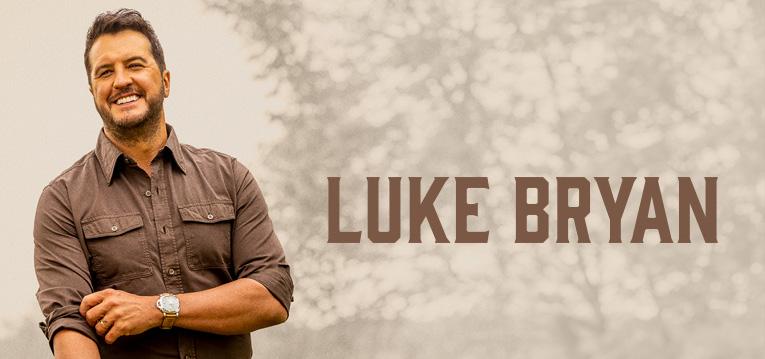









By DWAIN HEBDA // Photos courtesy of SORRELLS PHOTOGRAPHY

Arkansas, it does not take much in the way of convincing when the topic is putting in a swimming pool. One stroll outside in the peak summer months of June, July and August will quickly get most people to thinking about the delight of taking a crystal-clear, cooling dip just a few steps from the back door.
Throw in the state’s relatively slow cooldown in the fall and the quick warmup in the spring, and a pool in the Natural State is not just great in the summer, especially given the many options available to extend the swimming season to nearly year-round.
For as easy as it is to consider the benefits of a pool, however, the process of choosing a builder with the necessary expertise and requisite longevity can be a confusing process — that is, until one encounters Luxury Pool & Spa, a company with a decades-long track record of quality work and satisfied customers.
Co-owner brothers Jeremy and Shane Lawson are highly sought after in the local pool market. Having followed in their father’s and grandfather’s footsteps, there is little the duo has not seen when it comes to swimming pools and spas, no matter how basic or elaborate a customer’s wishes may be.
“We’ve been building pools in Arkansas for almost 50 years,” Jeremy said. “We build custom gunite pools that range in features from just about anything you can think of — slides, grottos, sun ledges, benches, infinity edges, you name it.
“We’re also installing pools today that are totally automated, where you can control different aspects of the pool or check the levels in the water right from your phone. Those are really popular features.”
Lawson said another change in the business of late has been the various amenities that clients are looking for that lend ambiance or atmosphere to the pool itself.


“If you came into our showroom and talked with my father about a pool 45 years ago, his questions would probably center around if you wanted a diving board or a slide or maybe even a pool light,” he said. “It was mostly rectangle pools lined with vinyl in those days. Now there are so many options, you can make your home pool almost any shape and finish you’d like.
“Sun ledges and benches set in a shallower part of the pool are really popular. That is probably the one design element that most of our customers today are talking about when they come in. We custom-build every ledge to the depth of what that customer’s wanting. Then you have the fire and water features that are really, really neat, especially at dusk, and, again, totally automated to operate.”
In addition to the quality of the work itself, the company has built its reputation on the creativity of its award-winning designs. This means staying up on the latest trends, which Lawson said include both rustic and modern aesthetics.

“I would say that probably about 50 percent of what we do is something that’s really straight-line and modern and sleek, and then probably 50 percent where they’re wanting something that looks more natural,” he said
The company pays just as much attention to quality and detail of the spas as it does in the swimming pools. No matter what the customer can dream up — from an in-ground spa that complements the swimming pool or a stand-alone unit that can help soothe the aches and pains of the day — Luxury Pool & Spa has the expertise to meet it.
“We’ve built elaborate spas that attach to the swimming pool, and we carry 20 some models of portable spas that are also very popular,” Jeremy said. “Most people love to have a spa in the winter months, but there are some folks, like me, who love their hot tub year-round too.
“We carry a wide range of hot tubs to meet just about every need and backyard, and as far as the portable models go, we can generally deliver within just a few days. We also just unveiled a new financing program that makes our portable models affordable to a wider range of customers.”
The company’s expertise does not stop with the completion of a job. Everything Luxury Pool & Spa sells and installs is backed up by some of the best warranties in the business. The company also provides winterizing and spring tuneups, servicing pools the company has built to help keep them operating in tip-top condition, and carries a full line of pool products to ensure maximum enjoyment. The experienced staff’s expert advice about pools comes standard.

We’ve been building pools in Arkansas for almost 50 years.
— Jeremy Lawson, co-owner
“We advise our customers on water chemistry,” Lawson said. “They come in and we run a computer analysis and tell them exactly how much to add of what, when to do it — all of that.”
A pool can add value to a home, not to mention provide a setting for many happy memories created with family and friends. Nationally recognized by its fellow pool builders, Luxury Pool & Spa’s reputation for quality work and high level of customer service is the client’s assurance their investment is being well spent.
“Over the years, we have been recognized by the pool industry for the quality of our business,” Lawson said. “Our retail store in Conway won the gold award among our buying group, which includes about 400 builders around the nation who vote on the awards. We have also had several other swimming pool projects that won silver and bronze national awards, and we’re really proud of that.
“Being recognized by other pool professionals is really special for us, but what’s most important is how many of our customers have come to us for service after the sale, to get supplies, and we have several clients who we have built two, three, even four pools for. What we do is hard work, it’s honest work, and it gets down to just treating people right. We build pools, but taking care of our customers is what we really do.”


What we do is hard work, it’s honest work, and it gets down to just treating people right.
— Jeremy Lawson, co-owner











By DWAIN HEBDA
One of Arkansas’ icons of outdoor living, Congo Fireplace & Patio has been supplying the Natural State with ambiance for more than a century.
General Manager Bryan Maertens, the third generation of family operators, has worked there for more than three decades. He leads a team that welcomes customers to a 20,000-square-foot showroom in Benton chockful of the latest in fireplaces and outdoor living.
“I’ve seen a lot of changes over the years,” he said. “Wood-burning appliances were our main thing starting out, and from there, we evolved into gas logs and gas products, including gas grills. I mean, we were selling gas grills back when Arkla gas was allowing customers to finance grills on their gas bill. We were bringing them in by the multiple truckload.”
Gone are the days when specialty stores were about the only place to buy outdoor furniture and merchandise, of course, but Congo has stayed relevant by hanging its hat on product selection, knowledge and uncompromising one-on-one customer service.
“You don’t have to drive more than 10 minutes in any direction these days to find a gas grill,” Maertens said. “That’s why we carry a little bit nicer, higher-end category of product that comes with service after the sale. Our merchandise is very good quality, and we back it up with a service department and warranty department that can take care of the customer for years after they make the purchase.”
Congo’s lines of outdoor furniture follow the same criteria: built to last and available in a wide range of styles to suit any aesthetic.
“Our furniture in iron and in aluminum is furniture that’s going to last a very long time,” he said. “There are some people who like the bright colors and more are looking for modern designs, but year in and year out, we find most people still want a classic look that won’t go out of style, where they can just change out the

have. We also carry what’s called reticulated foam wicker where the cushion is built on the inside of the furniture. Even with no external cushions whatsoever, it’s very, very comfortable. That’s also been pretty popular over the last couple of years.”

Maertens said just as grills and furniture have become more technologically advanced, so, too, have fireplaces, which the store offers in hundreds of configurations, many operating at the touch of a button. Just like his grandparents and parents before him, Maertens has stayed on home trends, penetrating a whole new segment of outdoor kitchens and living rooms in the process.
“We’ve always done business with home builders,” he said. “Today, if I sell 100 hundred fireplaces, 80 to 85 percent is in new construction, and 15 to 20 percent in remodels. In a lot of these larger homes, they’re putting a fireplace inside, and they’re putting a fireplace out on the covered patio. They’re also building these outdoor kitchens, which has increased demand for built-in, higher-end grill setups with side burners, double doors, griddles — all that kinds of cool features.”



Listening to Maertens, it is obvious the pride he feels in maintaining the high standards of quality and service that has brought Congo Fireplace & Patio into its second century and fourth generation of family operation with his son, Clayton, now on staff.
“I’ve visited every single hearth and patio business in Arkansas, and I am confident we absolutely have the largest display of outdoor furniture, grills, fireplaces and stoves. We’re very proud of that,” he said. “We’re very proud of our staff, some of whom have been here for years. We’re proud to have so many repeat customers, without whom we wouldn’t be here, and we’re particularly proud to still be a familyowned and -operated business.”


By CHRIS NORWOOD, AIFD, PFCI, AAF
Photos by DANIEL SEUNG LEE/AMFA

People love houseplants, and why not? Indoor plants have been shown to boost health and well-being. Not only do houseplants lift moods, encourage relaxation and promote healing, but houseplants also improve the quality of the air inside a home.
Social media sites have become inundated with “plantfluencers” showcasing walls of greenery in their homes in recent years, and I personally know several people with tons of plants, many of which have names and are cared for meticulously.
I do not claim to specialize in plant care, since I mostly deal with cut flowers, but I know a thing or two about incorporating plants into a home decor scheme. Back before large retailers with garden centers such as Lowe’s and Walmart became popular, most people purchased their houseplants from florists and nurseries, and Norwood-Day Floral Co. in Little Rock maintains a selection of houseplants for our customers.
Succulents are some of the hardest houseplants to keep in stock, since they seem to fly off the shelves every time we get them in. I think that is because they are so low maintenance. Succulents need barely any water, do not require a large amount of soil, and can flourish in most any kind of light.
Because they are so easy to care for, they are a mainstay in homes and offices. I often see them displayed on coffee tables because they have a low profile and do not impede conversation. I recommend planting succulents in shallow, sleek containers to complement the plants’ smooth leaves.
Everything about succulents screams contemporary to me, from their clean lines to their monochrome color palette. That is not to say there is not plenty of variety to be found in the shapes and colors, which vary from rich greens to grayish hues and burgundies.
I recommend planting succulents in shallow, sleek containers to complement the plants’ smooth leaves.
In my opinion, one of the best ways to display succulents is to layer lots of different varieties and textures to create a pave look. Stringof-pearls are a personal favorite, since I love any plant that has a good drape.
Succulents can also be planted at the bases of orchids to provide additional interest.
Although outdoor events generally call for decorations with more
As with any home accent, plants are the jewelry that tops off an outfit.





color, succulents can be a great addition to ultramodern designs, and they withstand wind better than other options. Succulents can even be incorporated into outdoor wall art.
By the way, succulents are also fun to paint. Alcohol-free plant dyes can be used to paint designs or fully recolor some plants, and succulents are great candidates for painting because of their smooth texture.
A note about the succulent wedding craze from a few years back: Succulents are not as
popular in wedding designs as they used to be, but we still receive requests for them occasionally. I like to make them the focal point of bouquets composed of only greenery.
Succulents are not the only houseplants in vogue, of course. One plant that is really
in fashion right now is the zamioculcas zamiifolia plant, also called the ZZ plant, another low-maintenance option. It does not need a lot of light or water and has shiny green leaves that make it a staple among interior decorators. Be warned — the plants are slow growers, so it takes a long time to grow a small plant to a large size.
The spathiphyllum, or peace lily, is another popular low-maintenance houseplant. They are easy to care for and add a pop of green to any room. Also, peace lilies let their owners know when they are thirsty, because their leaves droop. When that happens, I recommend watering the plant and then laying it on its side to help the leaves perk up fully.
Just because a houseplant is leafy does not mean it has to be a boring shade of green. Dieffenbachia, or dumb canes, have color on their leaves, and pothos come in a variety of greens and browns. Then there are crotons, which are wonderful for fall decorating because of their orange, red and gold colors.
Ivy comes in variegated varieties that add interest to the leaves. However, I consider ivy to be more of a high-maintenance houseplant, and I personally believe they do better outdoors on a patio, where they can receive natural light and hydration. They also tend to get mites if they are kept inside in low light.
Light is a major consideration when choosing houseplants, and it is important to pick plants that are suitable for the light levels in a home. Lifestyle is another consideration. Those who do not have a lot of time to care for plants might do best with a ZZ or a cyclamen. Peace lilies are a good middleof-the-road option for those who can water plants once or twice a week.


There are many, many kinds of houseplants out there, so do not get discouraged if it takes a while to find the right fit. Garden centers, online experts and gardening apps can all be great resources for newbies, along with social media groups for plant lovers.
Also, do not hold back when it comes to containers. Simple basics have fallen by the wayside in favor of whimsical designs that might include faces or other features. There is no limit when it comes to how artistic the vessels can get.
As with any home accent, plants are the jewelry that tops off an outfit. Try placing a few plants around the house today, and see how they benefit not only a home’s design but the well-being of its inhabitants.
Chris Norwood and Christina Day-Essary are co-owners of Norwood-Day Floral Co. in Little Rock. For more information, visit norwood-day.com.
SPONSORED CONTENT


By DOUG CRISE


TThere is no cuisine in America — possibly the world — that hangs so tightly to the past. Southern food, its origins and its evolution were born out of upheaval, necessity, agriculture, poverty, growth and sheer demand. On a micro scale, it is the product of strong family ties. Walk into a Southern food restaurant — or even a family’s Sunday dinner — and there will be stories about each and every recipe being passed down generation to generation. Through food, the past becomes the present.
There is, perhaps, nothing that drives that point home quite like fried chicken. Every Southerner, it seems, has a preferred way of breading and frying their birds or, at the very least, has strong allegiances to restaurants that nail their version of the recipe. For restaurant owners looking to succeed with a Southern menu, fried chicken represents a magical key. Nail it, and people will come.

he stories are what make Southern cooking different. It was my greatgrandmother’s recipe because she had a restaurant in Little Rock before I was born.
— Holly Hayes owner, Holly’s Country Cookin’
Holly Hayes, owner of Holly’s Country Cookin’ in Conway, knows that. Her restaurant reaches back three generations for fried chicken, a recipe that has kept her business booming for decades even as Conway grows and the city ramps up its dining options.
“We’ve done it this way the whole time,” Hayes said. “It was my great-grandmother’s recipe because she had a restaurant in Little Rock before I was born. My great-aunt grew up in her restaurant and got me started. It’s the same recipe, and it’s just been a hit. It’s a generational recipe.”
Generations are also at play at Cache Restaurant in Little Rock, where chef Payne Harding whips up fried chicken weekly for the Friday lunch crowd. The addition of fried chicken began with Little Rock business magnate and Payne Harding’s father, Rush, who harbored a fondness for the blue plate specials of his native Clarendon.


“It’s one of those things that’s just near and dear to his heart,” said Courtney Wellborn, general manager at Cache.
Randy Wolfinbarger understands. He runs the Best Western Inn of the Ozarks in Eureka Springs, which houses local favorite Myrtie Mae’s Cafe. The restaurant’s namesake, Myrtie Mae, made a name for herself in the 1920s by offering her fried chicken to summer tourists.
“Myrtie Mae’s name came about in 1992 when we remodeled this restaurant,” Wolfinbarger said. “We were looking for something that was indica tive of the history of this property. How the name and connection came about was her property ad joined this property, and she cooked chicken din ners out of her house before the restaurant was opened on this property.”
Today, what the restaurant calls Myrtie Mae’s Famous Ozark Fried Chicken is available as a two- or three-piece meal, and both locals and tourists annually beat a path to the front door.
“Fried chicken has always been on the menu,” Wolfinbarger said, “even back in the menus I found from the early days, when you could get a fried chicken dinner for 35 cents.”
sparks debate. There is seemingly not much to fried chicken — bird plus batter plus fryer equals deliciousness — yet almost everyone has their goto option, whether it be a favorite recipe or a favor-

Southern cuisine sparks stories, but it also
The restaurant’s namesake, Myrtie Mae, made a name for herself in the 1920s by offering her fried chicken to summer tourists.
Fried chicken recipes, whether in home kitch ens or busy restaurants, are a closely guarded se-


Fried chicken has always been on the menu, even back in the menus I found from the early days, when you could get a fried chicken dinner for 35 cents.
— Randy Wolfinbarger Best Western Inn of the Ozarks
cret. With so many places and so many options for customers to indulge, no cook worth their salt is going to completely tip their hand, but there are a couple of pages in Payne Harding’s playbook that he is willing to share.
“One of the things we do differently than most people is we fry at a lower temperature so you don’t get that real dry texture,” Wellborn said. “It keeps the moisture in the chicken. We don’t brine. I do know we do a wash, and then there’s the house seasoning that goes on the chicken, and then for the flour itself, it has some seasoning, but most of the seasoning is placed directly on the actual chicken, not sitting on top of the batter.”
Fried chicken’s appeal is in how it can be endlessly tweaked, especially when it comes to herbs, spices and brines, but the people coming into her restaurant for a chicken fix are drawn by something far deeper than a list of ingredients, Hayes said.
“I want to say it’s probably customers remembering how their grandmothers made it,” Hayes said. “I mean, the way we fry our chicken is probably the way everyone remembers how their grandmothers did it or how their mothers did it. That’s kind of what we’ve stuck with. We haven’t done anything fancy with it. We’ve just done it the way our grandmothers did it,
and I think people can relate.”
Yet nostalgia alone is not enough. The restaurant business is a grinder, especially when competition is at a high level. Wolfinbarger knows that for a tourist haven such as Eureka Springs, customers are spoiled for choice, and there is a distinct difference between relying on memories and resting on one’s laurels.
“We can say that it’s because we’re all smart and everything,” Wolfinbarger said, “but really, what it is, it’s getting the right people into your facilities, your crew, because they’re the ones who are going to keep it going day in and day out. I’ve been operating this property since 1979, and it’s always been about taking care of the people you have working for you.”
That brings up another aspect of Southern cooking. Marketing is important and always will be, but food in the South — especially fried chicken — calls back to a time when the best marketing tool was word of mouth. People share recipes with their friends and neighbors and, at the same time, share recommendations for restaurants.
Since adding fried chicken four years ago, the Friday traffic at Cache has soared to the point where Wellborn cautions those who may fancy arriving for a late lunch. It did not take long for word to spread around Little Rock that Harding
was offering up his own version of his father’s favorite meal from his youth, and it is not uncommon for the Cache kitchen to have no leftovers from the Friday lunch crowd.
Wellborn said the plan remains to keep fried chicken as a Friday lunch item, seeing as how it contrasts with a dinner menu that offers more “knife-and-fork dining.”
“The chicken is something that they’ve always done and always done so well,” Wellborn said. “We’ve always poked around with it. We tried brunch chicken and waffles just to enter it into the scene at Cache. It’s not really our cuisine style, but it’s so wonderful. It’s so great that we wanted to make sure it was something we could offer to everyone at least on Fridays. I would like to say that most every Friday, we sell out of chicken.”
Wolfinbarger thinks a big part of Myrtie Mae’s success stems from tourists asking locals for the best place to grab a bite. Those locals often offer up Myrtie Mae’s, especially when it comes to chicken.
“We’ve done it both ways,” Wolfinbarger said. “First, there’s word of mouth. Secondly, as your demographics change, we cater to the local people, who are basically our mouthpieces out there.”
Hayes’ chicken has been a mainstay in central Arkansas since 1999 to the point now where much of her business comes from repeat diners recommending her restaurant to first-timers. To keep people coming back, Hayes said, consistency of experience is key.
“Good teamwork, for one,” Hayes said. “Everybody’s working together and treating everyone like family. Whether it’s your customers or your employees, you just want to treat them like family.”
Wellborn said the staff at Cache, from Harding on down, remains gung-ho on serving fried chicken, but it will likely remain a Friday lunch event for the near future.
“We played around with different ways to play it for dinner and try to get it on the menu,” Wellborn said. “The problem is that our lunch at Cache is very casual. We try to keep it easy for people because if they’re coming in for business, we have offerings for that. If they’re not, we don’t want them to feel they’re not in a place where they can be comfortable and enjoy a good lunch and keep going about their day.”
Food trends come and go, but fried chicken’s appeal is as old as America itself. Methods and offers vary, but in Arkansas, there is always something for everyone.
“Once you have a good piece of chicken, it’s hard to forget it,” Wolfinbarger said. “I know there’s a lot of restaurants in the state of Arkansas that offer fried chicken, and a lot of people still want to fool with it because of the oils and things like that. It’s not a simple dish, and it’s time consuming to prepare when you’re doing it fresh for each order. It’s probably the longest thing on the menu to prepare, but it’s still doing well in the South. I think our location in the South is why you still see people doing it. You go north, and very seldom do you see fried chicken.”

Food trends come and go, but fried chicken’s appeal is as old as America itself.
Methods and offers vary, but in Arkansas, there is always something for everyone.

By MARGIE RAIMONDO
Whipped feta is quick to prepare and can be customized with various garden top pings, adding a fresh Mediterranean touch to any appetizer or meal. Serve on toasted crostini with roasted fruits and vegetables, or experiment with various combinations.
Ingredients
• 1 block of sheep milk feta cheese (about 200 grams)
• 1⁄2 cup Greek yogurt (preferably full fat)
• 2 to 3 tablespoons extra virgin olive oil plus extra for drizzling
• 1 tablespoon lemon juice
• 1 tablespoon lemon zest
• 3 tablespoons fresh herbs
• 1 garlic clove (optional, for added flavor)
Ingredients note: This recipe can be adapted to be vegan by using vegan cheese and yogurt.

Instructions
1. Prepare the feta: Break the block of feta into smaller chunks and place them in a food processor.
2. Add remaining ingredients: Add the Greek yogurt, olive oil, herbs, lemon juice and garlic to the food processor with the feta.
3. Whip the feta: Blend the mixture until smooth and creamy, scraping down the sides as needed. If the mixture seems too thick, add olive oil or a spoonful of yogurt to achieve the desired consistency.
4. Serve: Transfer the whipped feta to a serving dish. Drizzle with extra olive oil and garnish with your choice of toppings.
• For a thinner consistency: Add more olive oil, Greek yogurt, or a splash of water or lemon juice while blending.
• For a thicker consistency: Use less yogurt or add more feta to create a firmer texture.
• Make ahead: Whipped feta can be prepared and stored in the fridge. The dish often tastes even better after sitting for a few hours as the flavors meld. Stir well before serving.
• Granny Smith apple + crushed pecans + honey
• Honey (or hot honey)
• Grilled peaches (or just sliced peaches) + balsamic glaze
• Sliced avocado + lime zest
• Grilled chicken + sliced tomatoes + balsamic glaze
• Prosciutto + basil + fresh cracked black pepper
Marinated tomatoes + thyme+olive oil

Culinary tip: If using a spray gun, lightly spray olive oil to avoid adding too much oil. Otherwise, use a pastry brush to add sparingly.
Ingredients
• 1 pound cherry tomatoes
• 1 tablespoon extra-virgin olive oil (sprayed or brushed on the tomato)
• 1⁄2 teaspoon kosher salt
Instructions
1. Preheat oven to 400 F.
2. Leave tomatoes whole.
3. Lay tomatoes in a single layer on baking sheet.
4. Roast at 400 F for 30 minutes or until the skins soften and begin to burst.




Ingredients
• 1 pound strawberries, sliced
• 1/2 tablespoon extra virgin olive oil
Instructions
1. Preheat oven to 350 F.
2. Toss the strawberries in olive oil.
3. Spread strawberries on a baking sheet.
4. Bake until strawberries are pretty soft and the juice they have released has become syrupy, about 30 to 40 minutes.





At Advanced Physical Therapy, we express ourselves with care and understanding, and our team values relationships above all else. We intentionally listen to our patients’ ambitions and aspirations and build connections to help heal holistically. We believe in putting others first and exemplify that in how we interact. Our expectation for ourselves is to give our patients 100 percent to restore them to wellness – nothing less.

By MAK MILLARD
hether perusing the wine list on a dinner date, picking cocktails at an evening outing or simply staring down endless rows of options at the liquor store, no man wants to be caught lacking in know-how when it comes to libations. One need not become a sommelier or master distiller to know his way around a bottle, though, because a grasp of the basics is more than enough to hold one’s own. Alcohol aficionado? Maybe not. Confident ordering drinks and proud to pour for guests at home? Absolutely.
Wine has few competitors when it comes to the depth and breadth of options, styles, labels and customs. Even those with a favorite or go-to bottle might be hesitant to branch out on account of the sheer number of paths available. Thankfully, that pressure is more imaginary than not. In fact, the one piece of wine-related advice Tina Post of Post Winery in Altus gives above all else is simple.
“Relax,” she said. “Drink what you like and not what you think you are supposed to prefer.”
Approaching the wine shelf as an experiment rather than a pop quiz can make it easier to explore. Perhaps a particular fruit wine or varietal looks intriguing, and from there, shoppers can narrow down a winery, state, country or region they might like to take for a spin. Keep in mind, however, that a high price is not necessarily a sure hallmark of quality or compatibility with personal tastes. Post’s advice was, first of all, to not overthink it.
“Find a comfortable price point, a label that you think presents well and something not too old — no more than three years,” she said.
The way a wine holds up through the years depends heavily on the type of wine, the winery’s own practices and proper storage techniques. A cabernet chock-full of tannins might develop smooth, delicious flavors over the course of a decade. By contrast, a pinot grigiot made to be light and crisp with, say, grapefruit overtones, set aside for the same amount of time, is only setting future drinkers up for disappointment. Different still are ports and sherries, fortified with brandy; Post said they hold for many years, and the actual year they were bottled becomes less important.

does not know the preferences of their party members, it is a good idea to offer up a selection, such as a dry white and red alongside a sweeter option. Spritzers, meanwhile, can be a suitable alternative for those less keen on vino. Post recommended a blackberry bubbly water topped with a few splashes of merlot or a peach or lemon bubbly water topped with pinot grigiot. One can even mix wine with juice, as Post does with its muscadine wine and juice lineup.
Serving temperature also makes a difference in the drinking experience. Dry reds tend to shine served between 50 and 65 degrees Fahrenheit, Post said, while whites are traditionally served at a cooler 45 to 50 degrees. Put a red in the fridge for 20 minutes to take it to cellar temperature. Leave a white in the fridge for closer to 30 minutes, and take it out 20 minutes prior to serving.
“Wine is a living thing and changes every year, whether in a tank or in a bottle,” she said.
With more experience, a wine drinker may discover a love for older, drier and less fruitforward wines, but overall, Post said, people tend to enjoy wines in which the varietal notes and aromas are still detectable. In that case, she recommended whites such as pinot grigiot, sauvignon blanc, chardonnay, niagara, muscadines and any lower-alcohol bubbly wine, such as Post’s own Blue Parachute and Strawberry Fields, as well as the moscato.
There are a few good rules of thumb one can fall back on if truly at a loss for where to start. In the fall or winter, Post recommended sipping cabernet sauvignon, chardonnay, and port or sherry. In spring and summer, she pointed to merlot or Beaujolais, pinot grigio or a lower-alcohol frizzante. Champagne is an appropriate choice regardless of the season.
When it comes to serving guests, if one


The whiskey aisle can be just as daunting as the wine shelves for the uninitiated. One thing to keep in mind is that many labels use the same distilleries, even if they have differing processes from there. Armed with that knowledge, if one finds oneself enjoying a certain label, finding out which distillery is behind it can give him some direction as to what to try next.
A few brands, such as Warfield Distillery & Brewery in Ketchum, Idaho, intentionally buck the trend in favor of a product all their own. Warfield whiskey is mashed, fermented and distilled entirely in-house, giving the operation more control over all of the variables that go into making a quality spirit. The distiller’s lineup of spirits, including its Warfield Organic Whiskey and Warfield Local Whiskey, came to Arkansas last year by way of Steve Landers Jr.’s company, Interstate Holdings.
“We use only quality ingredients,” said Alex Buck, Warfield cofounder and master distiller. “It’s a very clean process from start to finish.”
Warfield starts with certified organic two-row, or pale, malts and certified organic crystal malts before employing two 1,000-gallon copper whiskey stills made in Scotland. The Local is aged for six to eight months in new barrels made of charred oak, while the organic American
whiskey spends at least three years in recycled bourbon barrels. In addition to enjoying pure water sourced from the Rocky Mountains, Buck said the altitude and weather fluctuations in Ketchum contribute to a kind of “speed-aging,” allowing the spirit to pull as much flavor out of the barrels as possible.
As with wine, it is all too easy to be lured in by the visual appeal of an expensive whiskey only to be let down later. Buck recommended taking a more measured approach to narrowing down the field. Get multiple whiskeys at different price levels — keeping in mind one’s budget, of course — and try each at its original, out-of-the-bottle proof. Then cut each sample with a splash of water, exploring the way the flavors develop and open up. Now for the part that makes it officially — technically — research and not just drinking: Take notes about what one likes and dislikes about each bottle. Setting aside some time to discern personal preferences will get one much farther than simply springing for whatever is on the top shelf, he said.
Gin, another Warfield specialty, has garnered more than its fair share of detractors over the years. Many people’s disdain for the spirit stems from experiences with the piney, juniper-forward London Dry gin, Buck said. A different style, called New American, dials back the juniper in favor of more floral and botanical notes. That shifted emphasis can make a more pleasant experience for those turned off by London Dry.
Warfield’s Organic Gin, likewise made with clean, organic ingredients and a scientifically spotless process, is a kind of happy medium between the two styles. That has allowed Buck to bring many certified gin haters back into the fold while still pleasing aficionados, who gave the spirit a silver medal at the San Francisco World Spirits Competition.
“I literally tell people, ‘If you drink this and you hate it, you can spit it into my face,’” he said. “I haven’t had anyone do that yet.”
Warfield gin also serves as a good jumping-off point for those venturing deeper into the gin aisle. If one finds themselves drawn to the juniper notes, perhaps it is worth picking up a true London Dry next. If the sage and citrus elements are more pleasing to the senses, other plays on the New American style are likely a more worthwhile endeavor. Those willing to experiment a touch farther can try the brand’s barrel-aged gin. Warfield’s organic gin goes into an former-bourbon barrel for six to eight months and comes out transformed, notes of citrus, cloves and baking spice coming to the fore.
“It’s fascinating to me that you can have two products [with] the exact same ingredients and come out with two completely different flavors,” Buck said.
The slightly darker, multidimensional libation can now do double duty. Barrel-aged gin still excels in gin-based cocktails, Buck said, while serving as a substitute for whiskey in others and continuing to be a solid solo sipper.
A person’s taste or distaste for vodka and moonshine often hinges on a less-than-ideal first — or second or third — impression. Regardless of what filled the punch bowls and solo cups of one’s youth, however, it is worth getting to know higher-quality iterations of the two spirits. In the case of vodka, turning to the liquor’s roots can be a great way to restart the relationship on a more positive note.
“Vodka is a mixing spirit,” said Danny Bradley, owner of Crystal Ridge Distillery in Hot Springs alongside his wife, Mary. “For years, it was called a neutral grain spirit. … In order to be vodka, [it] had to be odorless, colorless and tasteless.”

Those characteristics have fallen away somewhat due to the rise of craft distilleries, forays of which into flavored vodkas now proliferate on liquor store shelves. Operations such as the Bradleys’ traffic in the traditional stuff. Crystal Ridge distills its vodka 10 times, making it as pure in ethanol as possible. Hot Springs’ water also adds to the quality of the final product, and Crystal Ridge filters even that down for additional purity.
Taking on whatever flavors it comes up against, the right vodka can be made to perform on all manner of occasions. The most popular pick at the Crystal Ridge tasting bar is a lemon drop martini, Mary said, and Danny’s personal favorite is lemonade combined
with vodka and muddled strawber ries. The distillery also sells mixers for the at-home bartender and canned cocktails for convenience outdoors or anywhere a glass is unwelcome.
“We don’t have to over come bad vodka to begin with, so we use much less sugar than our competitors,” Danny said.
There is no reason to forego flavored vodkas com pletely, however. The Brad leys pointed to their peers in West Helena at Delta Dirt Distillery, where the products are distilled from sweet pota toes. In that case, retaining a bit of flavor is necessary to let the ingredient shine through. Once reacquainted with the merits of vodka in its original form, exploring unique tastes such as those at Delta Dirt allows drinkers to discover just how much flavor they prefer in their own libations.

flavorings abound, and Mary added that Crystal Ridge uses pure cane and beet sugars rather than high-fructose corn syrup, in addition to eschewing added dyes.
A high-quality moonshine can likewise hold up to a number of applications. The 120-proof Mule Kick tends to go over well with tequila drinkers, and flavored versions such as peach, pineapple and strawberry find a welcome home in margaritas. Moonshine also functions as an alcoholic canvas in a different way thanks in part to the rising popularity of do-it-yourself setups. Hint: A bottle of the spirit paired with an at-home whiskey kit makes for an easy birthday or Father’s Day gift.
Moonshine is a slightly different story. Spa City and moonshine peddlers everywhere owe much to the Prohibition-era renegades running backwoods stills, but that illicit history also made for a wildly inconsistent spirit. Even today’s above-bar iterations can retain some of the eyebrow-singeing character of their predecessors, putting many people off of the spirit for good.
“It’s just the perception,” Mary said. “A lot of people come in and [say], ‘I tried that once, and it tastes like gasoline.’”
While Crystal Ridge does nod to that storied past — its recipes for Temperance Punch and Prohibition Punch can be found online, among others — its original Mule Kick moonshine benefits from the advent of new technologies and precision distillation techniques. The distillery uses a mash bill of 60 percent wheat, 20 percent corn and 20 percent sorghum grain, Danny said, and the wheat content makes for a softer flavor that does not need to be compensated for with additives. It is on this side of the house that

While pondering the spirits one can keep handy at home, it is a good idea to invest in a few tools that make whipping up and serving cocktails a breeze. Men can expand the arsenal as their tastes and preferences evolve, but the basic setup should include a cocktail shaker, spoon, jigger and strainer, as well as access to ice. The jigger is especially important, Buck noted, because it ensures accurate measures of alcohol in the final drink. Overpouring while eyeballing shots can throw off all the other flavors and will just make for wasted ingredients.
As far as accoutrements go, bitters, vermouth, tonic water, and a selection of liqueurs and juices are enough to cover a variety of concoctions, not to mention giving one plenty of ingredients to experiment with. Simple syrup is easy enough to make and, combined with finishing touches such as cherries and olives for garnishing, any at-home drink can feel like a more upscale beverage straight from the bar.

After all that taste-testing, one should have a pretty decent idea of what bottles they would most like to keep handy both for guests and personal use. Versatile vodka is a home-bar workhorse, as is whiskey, while a barrel-aged gin can be an interesting pick for both gin and whiskey appreciators in attendance. It might even be worth keeping a few favorite flavors of moonshine around. If manageable, Post said, a selection of different wines is great to have. She also recommended boxed wine, such as her company’s St. John’s Merlot. Not only is the wine a great value, but the bag inside keeps oxygen away and helps maintain freshness every time the drink is served.

America’s most iconic motorcycle maker is refining tech, style and power in its hot-selling Road Glide. Known for its classic Sharknose bagger design, this iconic bike blends tradition with modern comfort and connectivity, featuring advanced engineering and a suite of intuitive technologies. The aerodynamic mo torcycle boasts a liquid-cooled Milwaukee-Eight 117 engine that produces 130 feet per pound of torque, while reduced weight makes handling more responsive. Cast wheels and improved aerodynamics complete the performance package.
Middle aged man does not live on en gine alone, which is why the Road Glide packs so much technology. A crystalclear 12.3-inch TFT Display comes standard, as do several ride modes and other tweaks to set the bike to one’s liking. In-fairing speak ers deliver loud, clear and crisp sound for cruising the open road or parking at a rally.
Take a test ride at any of Arkan sas’ Harley-Davidson dealerships in Little Rock, Conway, Eureka Springs, Jonesboro or Fort Smith.





Living below your means is the foundation of wealth. Be careful not to fall into the trap of “lifestyle inflation,” where your expenses only grow with your income. Instead, aim to increase savings and continue keeping expenses lower than earnings. Avoid bad debt, and pay off high-interest debt aggressively — especially credit cards. Debt can be used strategically, such as in the case of student loans or mortgages, but should be implemented with caution.
• Pride: Do not let your sense of masculinity get in the way of seeking advice from mentors, advisors or trusted friends. Asking for help can mitigate preventable mistakes and save you from headaches in the long run.
• Procrastination: It can be costly to put off tasks such as saving for emergencies or investing. A three-
to six-month fund can keep you from relying solely on credit cards or loans in a crisis — remember the advice above regarding debt. Also, time in the market is better than timing the market, so investing even small amounts earlier can help you reap the benefits of compound interest.
Early preparation is key when facing life’s expected and unexpected events. Strengthen your emergency fund to account for additional expenses related to children and family life. Discuss financial goals and budgets with your significant other, and make a plan to manage debt, update legal documents and save for retirement. Do not forget to work with your tax professional to understand how these and other changes impact deductions, tax credits and filing status.
Sponsored Content
Leaving a financial legacy for your children involves more than passing down money. One of the most critical steps is to create a will or trust to ensure assets are distributed according to your wishes. Planning ahead in regard to estate taxes and paying off debts can reduce your children’s financial burdens after your passing.
A good legacy is not just about leaving assets but also imparting wisdom. Teaching children how to manage money, invest wisely and understand the value of hard work can go a long way. In every case, open communication about the financial legacy is essential to ensure your children understand the plan, its purpose and their role in preserving the family’s wealth.
INVESTMENT ADVISORS Little Rock — 501-671-6690 Rogers — 479-845-6220 wealthpath.net


Be it hosting a derby party, winding down after a day in the mountains or simply making a fine impression, a gentleman should always have a signature cocktail at the ready. With the right ingredients and a touch of craftsmanship, even a simple drink can speak volumes. The Triple Crown Rush, crafted with Warfield Organic Whiskey or Warfield’s Local Whiskey, is one such drink.
Rooted in timeless tradition yet elevated by modern sensibility, Warfield Distillery in Ketchum, Idaho, offers more than small-batch spirits. It offers a taste of the West distilled with organic grains, mountain water and the kind of attention to detail that defines a gentleman’s palate.
THE TRIPLE CROWN RUSH
• 2 ounces Warfield Organic Whiskey or Warfield Local Whiskey
• 0.75 ounce fresh lemon juice
• 0.75 ounce honey syrup
Honey Syrup (3:1)
Combine 3 cups honey with 1 cup water.
Warm and stir until fully blended. Store chilled.
Shake well and strain over a large cube in a heavy-bottomed rocks glass. Garnish optional; conversation inevitable.
Why it works: The richness of Warfield’s whiskey — smooth with a hint of rye spice — meets the brightness of lemon and the soft sweetness of honey for a drink that is bold, balanced and worthy of the winner’s circle.
Whether toasting to tradition or making one’s own, a gentleman should always pour with purpose — and drink with distinction.
BRENT BIRCH, executive director
Little Rock Technology Park
Husband to Mollie
Father to Reid and Fuller
Stepdad to Emma and Hayes
Ibelieve relationships are the crux of success in the workplace, home or community. A man’s desire to maintain quality relationships serves as a motivator to be a better person in all phases of life. That takes being around good people doing good things versus the opposite. Quality relationships take a ton of work; if you aren’t prepared to put the work in, don’t take on the relationship, the job, the family, etc. You’ll know when the timing is right for each.
Honesty, gratitude, loyalty and diligence all come to mind as crucial building blocks to strong, productive relationships. Rising through the ranks in whatever line of work one chooses while navigating being a good family man requires tremendous discipline, patience and effort, especially with the firstborn, as there is no playbook on juggling everything and no two situations are the same. One key is not letting work spill over into family time and vice versa. A tough day on the job shouldn’t carry over to the dinner table. There’s a time to be a husband and dad and a time to be a lawyer, banker, electrician or welder.
GREG HATCHER, founder
The Hatcher Agency
Husband to Lee
Father to five/grandfather to five
Ihave learned I have to do things each and every day to maintain balance. For me, the answer is to get up every morning and work out and pay myself first before I do anything else. When you work out, you get your endorphins going, you get time to set your day, see your day, and, most importantly, you de-stress yourself from all the stresses that are going to come at you so that when they come, you will handle them with grace and patience.
You also have to know the answer to questions before they’re asked. For example, I am not missing my kids’ events for any work event. I’m not going to say I’ve never missed something, but for the most part, those events are off-limits. It’s just like if somebody asked you to do something and you had surgery, you wouldn’t do it because you’ve got surgery scheduled. If my kid’s got a game at 6 tonight, I’m not going to miss it because of X, Y or Z.
For me, at the end of the day, I load all my work up that’s not done in a plastic box, and I go home. In other words, I limit myself on hours at the office. Working at home doesn’t make Momma mad, but working at the office and being up there all night wouldn’t go over well. Always ask yourself, “On my death bed,

We’ve all done things we regret; the trick is not to make a life of regrettable choices. We’ve all seen both sides of that coin either growing up, with our kids or [with] their friends. A good person on a bad path can be turned around by first choosing and becoming dedicated to “do right.” That is often followed by evaluating who you surround yourself with and separating from those who influence poor decisions. Most of all, remember a decision or action doesn’t have to be permanent; don’t let one slipup send you spiraling.

would I have been glad I spent my time doing x?” I do work a lot, but I don’t miss things. Making it all work is rooted in another commandment of mine: Don’t waste time. People waste so much of the day. They’re inefficient. That’s why they’re having trouble and struggling. If I’m riding a stationary bike for my workout, I’m also returning emails and getting my day organized. I’m not watching TV — or I’m reading the paper online while I’m riding the bike. If I’m driving, I save all the phone calls I need to make for the 45-minute commute; I don’t do them at the office when I can only do office things.
A lot of it is really being organized, and the busier you get, the more kids you have, the smarter you’ll get at that because you have to be.
JUSTIN BILSON, teaching pastor Fellowship Bible Church Husband to Sharita Father to Harper and Hampton Grace
The most important elements to a man’s character, I believe, are humility and discipline. Every man should walk in humility, and when I say humility, I am not speaking of this false sense of humility that is masked as pride or that is really just low self-esteem in disguise. True humility is expressed through self-awareness and contentment. In other words, I am humble because I know who I am and who I am not. I am not trying to be anyone other than who I was created to be and, therefore, see no value in comparing myself to others because I am at peace, focused on running my own race.
We also need to be men of discipline because we cannot succeed without it. Every day, I must choose to be disciplined in what I think, what I say, what I watch, where I invest my time and in who I allow into my circle. These are just some of the areas that can either lead to our success or our demise, which is why we must commit to be disciplined.
People always talk about balance, but I say a healthy life is built on healthy rhythms and
We need to be men of discipline because we cannot succeed without it.
not balance. Balance is this idea I can hold all things together equally at the same time, and that is not realistic. I believe we are called to live a life of rhythms, and rhythms ebb and flow, twist and change throughout the various stages of life. When our rhythms are healthy, we can successfully manage ourselves and how we respond to life challenges. There are many conflicting messages about who and what we should be as men in the world and where to find our identity. I would say don’t take your cues on manhood from the culture. Take your cues from your creator. I can only find my identity when I go back to the one who made me because I am made in the image of God, and he defines who and what I am. He has given me an example to follow in his son, Jesus Christ, sent into the world to die for my sins and to be my example of what a godly man looks like. My faith in God is and will always be my guiding light, comfort, wisdom and strength through every high and low of life.

GABE HOLMSTROM, executive director Downtown Little Rock Partnership Husband to Katherine Father to Gus
What you think is important today may not necessarily be important tomorrow, and it certainly won’t be in 5 or 10 years. I remember reading somewhere that it is not worth worrying about what others might think of you because the fact is they don’t. That’s true.
There’s no such thing as a good excuse. When you mess up, remember tomorrow is another day to wake up and try again. Identify someone in your life to talk with, be it a friend, family member, mentor or a professional therapist. You will quickly find you are not the first person to experience a setback in life.
When you mess up, remember tomorrow is another day to wake up and try again.

JIM KEET, restaurateur
JTJ
Restaurants
Husband to Doody
Father to Cassie, Chase, Jake and Tommy Grandfather to Hawkins, Holden, Margaret and Dashiell

I’m a big believer that hard work teaches a lot of great lessons.
We are a true family-owned business, and what brought us together from day one was wanting to be the very best at what we do. My sons and I all share the conviction that we don’t want to be second-best in anything. I think for anyone who wants to work with their kids, that’s where it starts, and from there, thank heaven, we have all just worked very hard and have been successful.
I’m a big believer that hard work teaches a lot of great lessons. Each of my kids was required to start working when they were 13, and they have carried that on to the grandkids, two of whom are working in our restaurants. Those work experiences give them a taste of what it’s like to serve others, care about quality and to do a lot of other things that are good life lessons, regardless of what business they go into.
Any man who wants to build a career must be willing to dive in headfirst, learning by trial and error and from both successes and failures. That creates a personal culture and a habit for everything you will do in your life. People really notice that, and it’s contagious; in our case, it set a wonderful example to our staff about what it’s like to really care about what you do and to accept nothing but the best in yourself and the folks you surround yourself with.
People often ask me the secret to being in business with family. I think it takes absolute transparency and full disclosure on the front end about what it entails to be in business with each other. Family dynamics are one thing, but being in business together introduces a whole new set of challenges, and you have to really understand those things. If you don’t, there could be hard feelings or really disruptive things within the family that are super negative.
In our case, we have been very fortunate. We’ve always had a great relationship with all of our kids, and that carried over to work. I really think the love and devotion that they have for each other is unmatched. Everybody works hard, we collaborate, we love each other, we respect each other’s intellect and decisions, and we rely on that to move forward with a unified front.
STEVE STRAESSLE, head of school
Catholic High School for Boys Husband to Ann Father to Jacob, Abby, Sam, Jed, Kate and Kaela

Failure does not define you as a man; what you do after you fail does. I tell my students school is the proving grounds for life in that it offers multiple opportunities for selfassessment. A young man must ask himself regularly, “What am I doing right?” and “What can I do better?” Then take action. Youth provides opportunities for mistakes without permanent disfigurement of the soul. When you find that you’ve dug yourself a hole, the first step in getting out is always the same: Put down the damn shovel. It’s easier to find the ladder when your hands are free.
Balance is a key ingredient to any successful marriage or fatherhood, and a young man needs to understand that everything flows from the home. To be a successful professional or a scratch golfer or a deadeye duck hunter yet neglect the people closest to you creates hollow victories at best. Jobs are necessary. Social and physical excursions are necessary, but they reach their full potential when we’ve done the work at home first. That means we’ve started the day being a good husband and a good father. Social media’s entire reason for being is to distract and lead one into shallow waters. Therefore, a man must seek the cool, refreshing depths that a good home and good job can provide.
How to build a reputation? Do the work. Be present. Make sure we exist in a way that people notice when we are not there. Most of all, make sure our integrity is on full display at all times. The most important element of any man’s character is to never allow himself to be a bystander. A life well lived takes action. Passivity is the enemy of success and allows evil to propagate. To that end, this cardinal rule we teach the boys at Catholic High is embodied in a sign I hung in the cafeteria: “Thou shalt not be a victim, thou shalt not be a perpetrator, and, above all else, thou shalt not be a bystander.”
Balance is a key ingredient to any successful marriage or fatherhood, and a young man needs to understand that everything flows from the home.

Orthopedic issues can affect individuals regardless of gender. While there are some differences in the issues most commonly treated between men and women, there are also factors that impact both sexes, such as aging, obesity and overall health. Dr. Scott Smith has been in practice 23 years at Conway Orthopedic & Sports Medicine Center. While he and his partners treat osteoporosis more often in women, Smith said the clinic sees more men with traumatic injuries resulting from physical occupations, sports and aggressive activities.
“I would say there are more men who have physically demanding jobs, and so that can affect their ability to return to work soon after surgery,” Smith said. “Sometimes they’re off work or must be off for longer just because they do more physically demanding jobs.”
Despite those differences, the clinic performs an almost equal number of joint replacements on men as on women. Much of that is a result of aging, which leads to more joint replacements than any other factor. While there is a genetic component to joint weakness, Smith added that the clinic also treats more patients with joint problems who are obese, a condition that affects men and women alike. New weight loss medications have had a significant positive impact in that area.
“I have seen patients become eligible for joint replacement surgery after losing weight, which reduces the wear and tear on knee and hip joints,” he said.
Joint replacement procedures themselves have also benefited from medical advances. One such innovation is the MAKO robotic-arm assisted surgery system, which has allowed orthopedic surgeons at Conway Regional to perform hip and knee replacements that are more precise than with traditional methods. The MAKO system combines robotics and artificial intelligence to assist surgeons throughout the procedure for enhanced accuracy and patient comfort. Smith has been performing MAKO robotic surgery for the past six years.
“MAKO provides more precise positioning and sizing of the implant relative to the patient’s anatomy, and we’re getting improved outcomes doing surgery this way,” he said.
Contrary to popular belief, it is no longer the case that patients have to stay in the hospital for several days following a joint replacement, Smith said. In fact, some patients stay only one night, and others leave the hospital the same day. Many times, patients start therapy the same day as surgery. While therapy is an important factor in recovering from a hip or knee replacement, it is far from the only one.
“Most important is motivation, including mental health and general health,” Smith said. “In general, healthy patients recover faster than those with multiple health conditions.”
Not every joint issue requires replacement, either. Age is a major factor, and the clinic recommends replacements in cases of advanced arthritis and when there is severe bone-on-bone pain. When caring for younger patients who are still able to function with arthritis, Smith and his partners work to delay replacements for as long as possible. If the condition becomes
so extreme that it limits patients’ ability to work and provide for their families, however, he will recommend younger patients consider a replacement.
One way to avoid having a joint replacement is to be healthier in general. There are also several nonsurgical treatments for relieving aches and sore joints, such as anti-inflammatory medicine, rest and physical therapy. It is important to listen to one’s body and understand one’s limits, Smith said, especially during exercise.
Smith and his partners at the orthopedic center treat a variety of other ligament, tendon and joint injuries. The most common are wrist and hip fractures, anterior cruciate ligament and collateral ligament injuries in the knee, plus rotator cuff issues. Surgical or otherwise, the long-term benefits of treating an orthopedic issue go far beyond the affected limb.
“There is also a positive effect on their general health,” Smith said. “If you can’t remain active and exercise and get out of the house every day, it can lead to other health problems, like weight gain, high blood pressure, heart disease and diabetes. It’s not just fixing a joint.”
The Conway Orthopedic & Sports Medicine Center has provided comprehensive orthopedic care since 1988. COSMC has been voted among AY’s best orthopedic groups and best sports medicine clinics for several years in a row.
We are getting improved outcomes doing surgery using the MAKO system.
— Dr. Scott “
Conway Orthopedic & Sports Medicine Center 550 Club Lane, Conway 501-329-1510
Conway Regional Health System conwayregional.org
501-506-2747
Conway Regional Health System
Less stigma surrounds men’s mental health, but there is still more work to do
By SARAH DECLERK

“Isolation is so prevalent, and it perpetuates symptoms of depression particularly.”
— Kellee McCoy

Although men face less judgement when it comes to mental health these days, they still have a long road to mental wellness. According to the Anxiety & Depression Association of America, nearly 1 in 10 men experience depression or anxiety, but less than half receive treatment, and more than four times more men than women die by suicide each year.
“Isolation is the killer,” said Kellee McCoy, founder and CEO of Argenta Counseling + Wellness in North Little Rock. “Isolation is so prevalent, and it perpetuates symptoms of depression particularly.”
It can be difficult for men to recognize they are experiencing anxiety and depression. Instead, they may say they are stressed, tired or overworked. Sometimes, men may notice physical symptoms of mental illness, such as cardiovascular or gastrointestinal issues, without understanding the mental health problems behind them.
“We don’t really use the word ‘depression.’ We don’t really use the word ‘anxiety,’” said Brian Mears, founder and CEO of Alleviant Integrated Mental Health. “We use words like, ‘My chest is hurting. I think I’m having a heart attack,’ but really, it’s an anxiety attack. We use words that characterize physical illness, not brain illness.”

David Sullivan, director of Napa Valley Counseling, estimated only 25 percent of patients at the practice are men, and most visit because they are attending couples counseling or because someone suggested they seek treatment.
“It seems like most men who come to me, it’s because someone suggested that they come, and so I think we need to communicate that to them, that it’s OK to give attention to your mental health,” he said. “You don’t have to wait until somebody suggests that you go get help.”
Because men are raised not to talk about their feelings, depression and anxiety among men often manifests as irritability, anger or substance abuse, he added.
That can be difficult for men, who have often been taught to “suck it up” or “tough it out” rather than addressing their emotions. McCoy said he wants men to know reaching out is not a sign of weakness but strength.
“There are studies that show that men are inhibited from seeking help, and the theory is that it’s due to societal pressures of what masculinity is, of what strength is,” he said. “There’s this idea of, with men, many times, ‘I don’t want to be weak, and depression is weakness. Going to a counselor is weakness,’ and it’s just not. A strong man — and woman — understands his resources and utilizes them.”
However, the providers agreed the stigma surrounding men’s mental health has subsided in recent years, partly due to more people seeking treatment for mental health issues during the COVID-19 pandemic
“A strong man — and woman — understands his resources and utilizes them.”
— Kellee McCoy
“What’s the No. 1 question that therapists ask? ‘How does that make you feel?’” he said. “I have so many men sit on my couch and say, ‘I really don’t want to talk about my feelings,’ and so we try to work around that and give that some time and allow them to express their concerns, but sometimes I’ll reframe that with, ‘What do you think about that? What are your thoughts related to that?’”
Men may also shut down or isolate themselves. Dr. Kristi Kindrick, Arkansas-based medical director of behavioral health at Summit Behavioral Health Hospital in Arizona, said interpersonal problems are often a sign of mental health concerns among men.
“They become more volatile or more estranged. The loved ones will start to comment, like, ‘What’s going on with you? You’re not yourself,’” she said. “Then they start to avoid and even seclude themselves and isolate away, and [they’re] not doing the activities and enjoying being around people like they used to.”
Unresolved grief can be a huge problem among men, who often must continue working to provide for their families when a loss happens, McCoy said. He added that childhood trauma, especially sexual abuse involving another male, may go unaddressed because of shame. Processing grief and trauma can allow men to live fuller, happier lives going forward.
“It’s really as simple as, ‘I’ve talked through my emotions and how I’m feeling, and someone was able to validate that for me,’” Kindrick said. “It can be as simple as that, and it can be a lot more complex than that, but it can be that easy, and so I really say that just men feeling more free to talk about those things is important.”


“I think we’re finally turning the corner and that men are acknowledging that mental health is not a weakness,” Mears said. “Actually, if we acknowledge it, it can be a great strength because we can build resilience, be it mental, physical, psychological, social, spiritual.”
There are other barriers associated with seeking mental health care. Kindrick said although there is a shortage of psychiatrists in Arkansas and across the United States, nurse practitioners have been able to fill the gaps in many cases. Telemedicine is also making it easier for men in rural areas and those hesitant about visiting a counselor’s office in person to receive help.
Cost can also be a challenge, especially for patients with high-deductible insurance who must pay out of pocket for specialty services, Mears said. However, many providers work with patients to provide services at a reasonable rate, and men can also turn to community mental health clinics for free or low-cost counseling.
Ignoring mental health concerns can set men on the path to a mental or even physical health crisis, Sullivan said.
“I think it’s kind of this ticking time bomb analogy,” he added. “If you’re carrying the weight of the pressures in your life and you internalize those things, whether they be sadness or insecurity or inferiority or trauma or grief, or your relationship is in trouble, you know, I think just carrying those things is just not going to be a good outcome.”
On the other hand, counseling, sometimes combined with antidepressants, can have a profound impact on patients’ lives.


“Counseling plus depression meds when it’s significant depression can truly be effective in helping those symptoms decrease, and then life gets better,” McCoy said. “Life gets not as hard. Relationship distress eases. Work gets better. All the things that seemed so hard and dark and gloomy, once you get some help — it may take a few weeks — but it gets better.”
Mears said many men are undereducated about stress and how it relates to the physical body, particularly the hypothalamic-pituitary-adrenal, or HPA, axis, which regulates stress response. He recommended men reframe mental health as brain health.
“I’d like to encourage guys to consider creating a good brain gym activity like they would a physical gym activity,” he said. “When they do that, do you know what happens? They can build resilient brains — physically resilient brains that are less prone
guys to consider creating a good brain gym activity like they would a physical


to concussion, less prone to traumatic brain injury, less prone to anxiety and depression because we physically strengthen the neurons in our brain.”
Lifestyle changes such as a healthy diet, drinking water and walking outside can be the first step to wellness, he added. Kindrick noted that bad habits take a greater toll on men’s mental health as they age.
“As we get older, staying out late one night watching the March Madness games and going through a 12 pack, that’s going to leave a much bigger impact on men as they approach middle age and beyond much more than they did in their 20s,” she said.
Couple that with the fact that people tend to have worse sleep quality as they age, she added, and many men may find they have more fatigue, irritability and apathy as they get older. While many men seek out testosterone for such issues, Kindrick said the better solution might be booking an appointment with a counselor and adopting healthy lifestyle changes.
“Disregarding it and shoving it to the back burner is one of the worst things that I see people do,” she added. “They think, ‘Oh, I just need to snap out of this. I’m going to snap out of it,’ but really, if these kinds of symptoms are persisting for more than a couple of weeks, it may
“There’s some helpful treatments other than just talking therapy,” he said, “because sometimes men tend to want to be action oriented, and they want a plan and they want steps and they want direction rather than just sitting around and talking about feelings.
Emotion-focused therapy and internal family systems are two popular specialized counseling services, McCoy said, adding that he expects to see more psychedelic-assisted therapies in the years to come. Kindrick agreed that TMS and psychedelic-assisted therapy can be effective for patients with depression.
“I think that the field is growing with regards to treatment options, and I think that that’s really reassuring, reminding people that, ‘Listen, we know we don’t have all the answers. We know that SSRIs and mood stabilizers and antipsychotics are not the only options,’” she said. “I think it’s an interesting and fascinating field, and hopefully, in the next 20 years, we see a lot more advances, as well.”
Mears said his practice promotes objective psychiatric tools such as spectral electroencephalograms, or sEEGs, which measure brainwave activity, and NeuroSync, which synchronizes brainwave function using customized magnetic stimulation.
“...because sometimes men tend to want to be action oriented, and they want a plan and they want steps and they want direction rather than just sitting around and talking about feelings.”
— David Sullivan


Sullivan named cognitive behavioral therapy and acceptance and commitment therapy as two of the most common forms of treatment, but he said emerging treatments such as eye movement desensitization and reprocessing, transcranial magnetic stimulation, and ketamine ther-

Sullivan said he expects men’s mental health to continue to gain awareness, but it is important to continue letting men know that it is OK to talk about their feelings and reach out to friends, loved ones and professionals for help.
He added that men in Arkansas could benefit from more opportunities to connect with each other, build relationships and discuss mental health, while Kindrick said she would like to see more services based on the workplace.
“I wish there were more emphasis in blue-collar and white-collar workplaces that brought more emphasis on education about signs to watch out for and made it more personable and accessible for men,” she said. “I think that if they can get told about these things in the workplace with other men around them, then it’s not as terrifying or embarrassing to consider.”
Making men’s mental health a priority could have far-reaching benefits not just for men and their families but for society as a whole, Mears added.
“What happens if we don’t care? Suicide goes up. Domestic abuse goes up. Child abuse goes up. Sexual abuse goes up. Substance use goes up. Society devolves. What happens if we don’t care? Society falls apart,” he said. “Society falls apart, but if we do care, and we start to truly care for our brain like we care for, many times, our body, society will improve, and we’ll become better producers in society and less consumers in society.”
If you or a loved one are experiencing a mental health crisis, contact the 988 Suicide & Crisis Lifeline by calling 988.


In business and in everyday life, making the right first impression is priceless. Despite warnings not to judge a book by its cover, the brain is wired to start building up an assessment of every stranger based, first of all, on appearances. Combined with the ebbing tide of work-from-home jobs and a return to the office, it does a man well to put some serious thought into how he presents to everyone he meets, from employers and prospective clients to evening outings and potential mates.
Mr. Wicks, located in Little Rock’s elegant Heights neighborhood, is keeping the tradition of haberdashery alive with a curated collection of men’s clothing for every style and occasion. Knowledgeable staff and a low-stress environment have made it easy for generations of gentlemen, from old pros to newcomers, to build a timeless wardrobe of fine clothing for work, leisure and settings in between.
Owner Mark Evans shared his top tips for the man looking to improve his eye for style and take pride in a tasteful look.
• Every man’s closet needs a charcoal, navy or black suit. A high-quality navy sport jacket that pairs well with khaki slacks or a nice pair of jeans always makes a man’s wardrobe complete. Be sure to have a pair of black, slip-on dress shoes, but do not forget to have a comfortable pair of nice tennis shoes that work with most everything on this list. Throw in a tie or two with a few pairs of great colorful socks, and you are wardrobe ready.
• Be sure your clothes fit. How many times have you seen a guy who is wearing pants that are two or three inches too long and a suit jacket with sleeves that are down to his knuckles? Do not let fit ruin your look — go see a tailor. A few tweaks, and a clothing disaster looks like a custom fit.
• Mixing patterns makes the look your look. A tie with stripes pairs well with a shirt that has checks. Also, a tie with dots works swimmingly with a striped shirt.
• Accessories are a great way to add color that stands out without causing men to stand out too much. A pocket round always adds a touch of class with a sport coat whether you are wearing slacks or jeans.
• Another popular way to add pop is with fun socks. There are endless options of socks that are themed with colors that really do make statements of fun and fashion.
• Transitioning a clothes wardrobe from season to season is not too difficult in Arkansas. The key is to wear layers. Add a quarter-zip pullover you can easily slip off, and wear a great color T-shirt underneath. Off the clock, wearing a fashion sweatshirt with shorts is always a good outfit as seasons change.
MR. WICKS
5924 R St., Little Rock
501-664-3062
mrwicks.com


Every man’s closet needs a charcoal, navy or black suit. A high-quality navy sport jacket that pairs well with khaki slacks or a nice pair of jeans always makes a man’s wardrobe complete.

By DWAIN HEBDA
Hormonal health is all the rage these days as more people look to put back what Father Time and Mother Nature take out as they age. Hormone replacement therapy is an increasingly common treatment for everything from weight gain to poor sleep to loss of libido.

Kayla Sanders

practitioner and owner of Beauty Boss Co. Aesthetics & Wellness in Cabot. “What’s changed is the understanding that low testosterone isn’t just about libido. It affects energy, mood, sleep, metabolism, even brain function.
To date, the majority of patients getting relief through these therapies are still women, especially those experiencing perimenopause and menopause, although men have made some big strides in recent years. According to an article in Muscle + Brawn, hormone therapy grew 500 percent between 1991 and 2001 and the number of men undergoing such therapies then tripled over the next decade, according to a study reported in the Journal of the American Medical Association
While USA Today reported the number of men undergoing the therapy dropped sharply over health concerns for a few years, industry watchers still expect the market for that type of treatment among men to grow nearly 3.5 percent annually for the foreseeable future.
“Hormone therapy for men has actually been around for decades, but it’s only in the last 10 to 15 years that it really started to gain traction outside of urology clinics and into mainstream wellness,” said Kayla Sanders, nurse
“There are always risks with any therapy, but when hormone therapy is monitored properly, the benefits far outweigh the risks for most men. We’re not talking about bodybuilder doses; we’re talking about restoring levels to where they should be. There’s no strong evidence that testosterone therapy increases prostate cancer risk in healthy men, but that’s why regular labs and clinical follow-up are key.”
The problem, local experts say, is the manner in which the therapy has been and, in some circles, continues to be sold to the public. Testosterone, a male hormone largely produced in the testicles, is important to health and development in many ways, from boosting bone density and red blood cell production to enhancing sex drive and performance.
After reaching peak levels in adolescence and early adulthood, an adult male’s testosterone level recedes with age, typically between 1 and 2 percent a year starting in his 30s. Testosterone replacement therapy seeks to restore the vigor nature takes out, but as reputable

...low testosterone isn’t just about libido. It affects energy, mood, sleep, metabolism, even brain function.
—
Kayla Sanders owner of Beauty Boss Co. Aesthetics & Wellness
health care providers quickly note, for as important as testosterone is, it is not the miracle cure-all it is often marketed to be.
“Some people believe, ‘OK, I’m going to take this, and everything’s going to be all better,” said Michael Stirling, family nurse practitioner at Arkansas Urology in Little Rock. “People think they’re going to come in here and get a shot or some other type of testosterone therapy and their weight’s going to basically peel off of them when, in fact, this is a lifestyle issue.
“I tell them, look, we’re going to give you something, and it’s going to help you. You’re probably going to feel better for about three to six months, but if you do not change your lifestyle, you’re going to be back in here with this problem again in three to six months.”
Not only that, but a lot of marketing — and even some unscrupulous providers — fail to mention the negatives of testosterone applied indiscriminately or incorrectly. They also fail to talk about other hormones being out of whack that might well be the culprit.
“Testosterone is a predominant hormone, but they’re all equally as important to overall health,” said Kristi Jones, nurse practitioner and owner of Synolo Wellness in Little Rock. “Estrogen levels are super important in
men for bones. Progesterone levels are super important for sleep. DHEA is great for memory and the immune system and muscles. They all communicate together.
“Just looking at the testosterone level is not ideal because you miss a huge part of the picture. Plus, if a man has a tendency to convert testosterone into estrogen, a higher testosterone dose can equate to a higher estrogen dose, and that’s not good.”
Stirling said legitimate medical providers are currently fighting a two-front war against misinformation related to the marketing hype and the emergence of low T centers that puts the substance, which should be closely monitored and controlled, within reach of virtually any adult.
“Men need to know when you start testosterone, not only can it kill your ability to make sperm, but it creates a dependence,” Stirling said. “Once you start injecting it, whatever small amount of testosterone you were making, the body stops making.”
Stirling is quick to add he is not against testosterone therapy and said when used appropriately, it is a valid treatment. However, many men do not get full disclosure about what they are potentially in for.
“Let’s say a man is in his 30s, and he’s decided he’s


Estrogen levels are super important in men for bones.
Progesterone levels are super important for sleep. DHEA is great for memory and the immune system and muscles. They all communicate together.
— Kristi Jones, owner of Synolo Wellness

not concerned about fertility, and he wants to go ahead and proceed with testosterone,” he said. “I’ll tell them you have to realize that you’re going to be taking this for 40, 50 years. That’s coming in for appointments. That’s labs. That’s insurance company problems. That’s pharmacy problems.”
The experts all agreed that a man investigating hormone therapy should look for a provider who is as concerned with getting to the cause of the problem as with merely treating symptoms. They said a provider who is willing to ask questions and provide various treatment alternatives is, generally speaking, a good sign.
“When a man’s hormones are off, it’s not just about sex drive. It’s fatigue, brain fog, loss of muscle mass, weight gain and just feeling like a shell of yourself,” Sanders said. “Stress is a huge factor; chronic stress can tank testosterone levels by increasing cortisol. We also see hormonal disruptions from poor sleep, processed diets, environmental toxins and even overtraining in the gym.”
Jones said the sexual performance side of hormone imbalance makes many men reluctant to seek help,



which is why they should seek a provider with whom they feel comfortable discussing issues. She also added that those who wait for the most universally accepted sign of hormone trouble — erectile dysfunction — are waiting too long.
“If they are only thinking about erectile dysfunction, that is a late sign of hormones, really,” she said. “If there’s any brain fog, any fatigue, you’re tired, the workouts aren’t as good, those are all signs. Even just forgetfulness, you know? ‘What’s your name? What was I doing? Gosh, where did I put my hat? Where’s my wallet?’ are all things that we should be looking at first. Don’t wait until there’s erectile dysfunction. Erectile dysfunction’s a late sign.”
The manner and mode of treatment is another consideration when getting into a therapy regimen. Stirling favors injectable pellets, which release the hormone slowly to more closely resemble the body’s own production, while Jones favors old-school topicals, creams and gels that are easier to apply and are absorbed through the skin. Sanders said delivery can often be a matter of personal preference and that it is the level of customization that matters.
“Delivery systems are improving with long-acting injectables, creams and even microdosing protocols,” she said. “The future is precision; we’re moving away from one-size-fits-all prescriptions and moving toward personalized medicine, looking at genetics, inflammation markers, even biological age to guide treatment. It’s exciting because we’re helping people not just live longer but feel better while doing it.”







For men with erectile dysfunction, a quick chat with a health care provider can be a lifesaver
By DOUG CRISE

When it comes to erectile dysfunction, the easy way is not necessarily the best way.
In 2025, a “cure” for erectile dysfunction is as simple as the click of a button. Unless a man has been living under an assortment of rocks, it is easy to catch advertisements hawking pharmaceutical solutions for ED. Medications such as Viagra and Cialis have become household names, and online providers such as Hims promise quick and discreet delivery without the awkwardness of talking with a doctor.
There is just one thing: That talk with the doctor, while difficult, could save a life.
“There are these things online,” said Dr. Brian Langford, assistant professor of urology at the University of Arkansas for Medical Sciences in Little Rock. “These are, a lot of times, compounded medications that are not necessarily [Food and Drug Administration] approved for the treatment of erectile dysfunction. The clinical evaluation to start patients on these medications is fairly minimal.”
All of that means a patient can skip the medical process altogether, but doing that, Langford said, ignores major factors not considered in the deluge of advertisements.
“The risk of that is that erectile dysfunction can be a precursor for underlying cardiovascular disease and other medical problems,” Langford said. “By bypassing seeing a physician, patients may have other conditions that are inappropriately being addressed.”
Dr. Keith Mooney, a urologist at CARTI with more than 35 years of experience, agreed that ignoring the root causes of ED can be dangerous.
“If someone is developing ED, he can very easily be developing cardiac issues or even peripheral vascular issues that can be a health threat to them,” Mooney said. “We see hormone changes with ED. Low testosterone can be associated with osteoporosis, muscle weakness, accelerated cardiovascular disease and even brian fog.”
Jackson said the Wow Shot is a minimally invasive same-day procedure that will sound familiar to anyone who has donated plasma. Plateletrich plasma, or PRP, is harvested from the patient’s blood and then injected into specific areas of the penis. The idea is that the PRP restores blood flow to key regions that allow for more dependable erections and increased sensitivity.
“It’s tapping into our body’s own ability to heal and regenerate,” Jackson said. “I mean, it sounds scary and terrifying, but at the end of the day, it’s a phlebotomy lab draw, and then, after numbing the area, then injections are made. Those injections, most of the time, are not uncomfortable.”
There is another same-day alternative that, much like a priapus shot, sounds more uncomfortable than it is.
“We are seeing success in treating ED with shock therapy,” Mooney said. “Shock therapy stimulates blood vessels and stimulates stem cells for regrowth, and we can see a curative situation with that.”
Just like with Beyond Wellness’ Wow Shot, blood flow is the name of the game with shockwave therapy. Low-intensity electric shockwaves are applied to the shaft of the penis in an attempt to generate better blood-flow where it is needed the most.
“Shock therapy is relatively painless,” Mooney said. “It doesn’t seem to cause bruising. It doesn’t seem to have a lot of lingering side effects. The biggest drawback to shockwave therapy for ED is that it doesn’t seem to work for everyone, but if you have mild to moderate ED and you’re in otherwise reasonable health, you would be a very reasonable candidate, and it might help you avoid more aggressive measures.”
There are also surgical options for longer-term cases. UAMS offers the AMS 700 inflatable penile prosthesis, a minimally invasive procedure in which an antibiotic-coated prosthetic is inserted into the penis while the patient is sedated. It is then inflated by the patient squeezing a small pump that is inserted into the scrotum.

That explains why doctors and health care providers are moving away from the pills altogether and focusing on long-term solutions that improve both sexual performance and overall health.
Christa Jackson, a nurse practitioner at Beyond Wellness in Little Rock, said ED cannot be treated in a one-size-fits-all manner.
“Normally, there’s several things we’re going to assess and address,” Jackson said. “I typically will not treat a man with this without making sure we possess real causes for the problem to begin with. We have to make sure that a man is in good physical health to have an erection, so it’s not going to be like a Band-Aid. We need to make sure we’re getting to the cause of the problem.”
Beyond Wellness offers a priapus shot, marketed as a “Wow Shot.”
“It’s been around for a while,” said Langford, who has performed hundreds of AMS 700 procedures. “This device is typically used when a patient has already tried two or three different oral medications like Viagra or Cialis,” Langford said. “They may have moved on to using a vacuum erectile device or injection therapy. At some point, patients will begin to fail some of those treatment options, and the only option left is the surgical option.”
Langford said a host of factors can contribute to erectile dysfunction, including neurological issues, blood flow and “venous leak,” which happens when blood prematurely leaves the blood vessels in the penis.
“There are certain instances where we have a pretty good idea of what’s going on,” Langford said. “When patients come to my office, I’ll

do a pretty thorough evaluation of what their underlying cardiovascular risk factors are. There are several times where I’ll refer a patient to a cardiologist for further evaluation before I begin any kind of treatment for erectile dysfunction.”
As the old saying goes, an ounce of prevention is worth a pound of cure. In many cases, ED can be avoided with good cardiovascular habits such as eating right and exercising. Should ED occur, patients should treat it like a possible warning sign and seek medical input immediately. “Men should wake up with an erection every day,” Jackson said. “That’s a sign of good cardiovascular and neurological health.”
ED affects roughly half of men between the ages of 40 and 70, and
We have to make sure that a man is in good physical health to have an erection, so it’s not going to be like a Band-Aid. We need to make sure we’re getting to the cause of the problem.
—Christa Jackson, nurse practitioner Beyond Wellness
yet for all the options available, there are still men who find the topic uncomfortable. A quick consultation with a health care provider can halt the onset of serious problems that go beyond the bedroom.
It is a conversation worth having.
“It can be a sign of metabolic dysfunction,” Jackson said. “It can be a sign of increased cardiovascular risk, and down the road, it can be a dementia risk. A lot of men won’t get treated for ED because they’re embarrassed. They feel like it’s part of their manhood and they should be able to perform in that way. There’s a stigma associated with it. I think men need to know erectile dysfunction is not just associated with intimacy and manhood. It has so much to do with their brain and heart.”


Conway Regional Health & Fitness Center is a medically integrated facility for all ages at every stage of life. We combine traditional tness o erings with expert-led medical tness programs, group exercise, personal training, aquatics, youth sports, and a supervised play center. Backed by Conway Regional Health System, our team is committed to delivering highly intentional and refreshingly personal care, blending access and excellence to support your health journey.

By MARK CARTER // Photos provided

It happens to most every man, regardless of race, creed or body type. At some point in midlife — maybe it is age 40 for some, 45 for others or even 50 — men wake up one morning and notice that the things they used to take for granted, like getting out of bed in the morning, require just a little extra effort.
That pep in the step slowly transforms into a pop in the hop. Skipping steps when taking the stairs is, well, no longer a realistic option.
Men’s bodies, once envisioned as precision Ferraris (imagined or otherwise) begin to run like — and, especially, resemble — a ’77 AMC Pacer. Edges become rounder, waistbands bigger — and those six packs? Midsections begin to look much more like kegs.
The trade-off surrounding vitality and wisdom is never more evident than to a middle-aged man trying to relive past glories — or jog a mile around the track. What is a guy to do to help stay properly functional and ward off the vitality-suctioning effects of Father Time?

What is a middle-aged man to do when the joints start to ache, when the testosterone starts to dry up and when a deep flag route evolves from 40 yards to 20 because of that pesky bursitis in the shoulder?
AY About You asked three fitness experts in central Arkansas for the advice they give middle-aged men battling to stay functionally fit: Brooke Walker, a competitive bodybuilder, fitness instructor and personal trainer who works out of 365 Fitness in Conway; Jean-Paul Francoeur, a personal trainer, integrative health specialist and owner of JP Fitness in downtown Little Rock; and Ryan Parker, an award-winning former bodybuilder, fitness instructor and former owner of 10 Fitness in Little Rock (who also dabbles in sales at AY Media Group).
AY: How should men change their approach to staying in shape as they age?
Walker: As men age, the way they approach fitness should evolve to match the physiological and hormonal changes that occur within their bodies.
• Prioritize strength training: Muscle mass naturally declines, especially after 40. Resistance training two to four times a week helps preserve lean mass, metabolism and joint integrity.
• Increase recovery time: Older bodies need more time to heal. Training smart with adequate rest days is crucial.
• Mobility and flexibility work: Daily stretching, mobility drills or yoga can help maintain joint health and prevent injury.
• Protein intake becomes more important: Older men may need more protein per meal (0.4–0.6g/kg/meal) to stimulate muscle protein synthesis effectively.
• Manage testosterone naturally: Prioritize sleep, stress reduction, healthy fats, resistance training and maintaining a healthy body composition to support hormone health.
• Cardio with purpose: Focus on joint-friendly options like walking, cycling or swimming while keeping the intensity appropriate.


AY: What should men absolutely avoid when maintaining fitness?
Walker: Neglecting sleep, as poor sleep affects recovery, hormones and fat storage. Excessive alcohol impacts testosterone, recovery and motivation. Overtraining — chasing their younger self with high-impact, no-recovery programs can backfire. Crash dieting or extreme restriction lead to muscle loss, metabolic slowdown and rebound weight gain. Ignoring pain or injury — training through chronic discomfort — often leads to worse issues. Relying solely on supplements or gimmicks — long-term results come from consistency, not shortcuts.
AY: Is it harder for men to get in shape or stay in shape as they age?
Walker: Getting in shape tends to be more mentally and motivationally difficult, especially if starting from a sedentary lifestyle and/or dealing with years of bad habits. Staying in shape becomes harder physiologically as men age due to slower metabolism, hormonal changes like reduced testosterone, greater injury risk and increased life demands (work, family, stress).
That being said, consistency, smart training and nutrition habits can make both getting and staying in shape very doable well into later years.

AY: What specific fitness goals should men prioritize as they age?
Parker: As men age, fitness goals should prioritize health, flexibility and sleep quality over aesthetics or peak performance. A great night’s sleep can improve testosterone by 60 percent.

Aging doesn’t have to mean slowing down.
— Ryan Parker, former bodybuilder

In their mid-20s, men should focus on building strength through resistance training (two to three times weekly) and maintaining cardiovascular health with moderate cardio (150 minutes weekly). Incorporate mobility work to prevent injury, like stairs or jump rope.
In their mid-30s and 40s, men’s focus should be flexibility and range of motion with caloric consistency. Intermittent fasting will decrease body fat, so emphasize nutrient-dense foods like grass-fed proteins, organic vegetables, and fermented foods and drinks. You must limit processed foods and leave fast food and sodas out entirely. If you’re still drinking alcohol, you should give it a break for 30 days, and you might look back years from now and humbly admit, like I did, it was the best decision.
: What about diet — when and what to eat?
Parker: I chose a four-hour feeding window, like eating once a day between 3 p.m. and 7 p.m. I stay hydrated with electrolyzed reduced water with a pinch of Celtic salt. I carry a BPA-free drinking container and bring my own water bottle everywhere.
Fasting has anecdotal benefits like mental clarity, improved short-term memory and increased energy.
Hydration is wild because we are around 80 percent water when we’re born, and if we die in our 70s, we could be closer to 65 percent water remaining. We lose a lot of water due to urination, defecation, respiration and perspiration. As we age, we must prioritize hydration properly or dry up like a raisin, and nutrients are delivered via cellular water.
It’s a very delicate balance. Our bodies are designed and created with a very strong immune system, and we must provide the nutrients daily — the macros and mi-
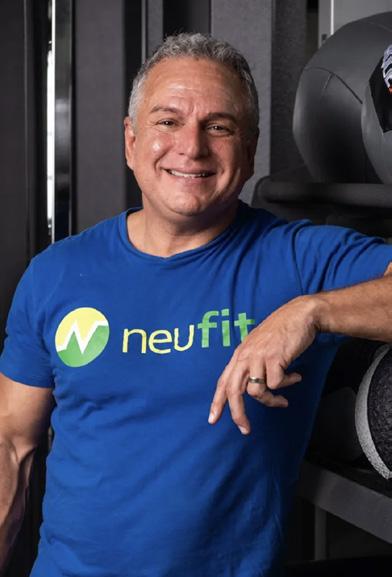
AY: How would you define functional training?
Francoeur: Technically speaking, any kind of resistance training is functional. A person in their 70s may lack the stability to safely squat and lunge if they have not maintained that ability through the years. That does not mean building leg strength should move to the back of the line. On the contrary, they should probably prioritize strengthening their legs using machines in order to reduce their fall risk. That is very functional.
In the context that most people use it, it generally refers to intense full body-oriented workouts using multijoint exercises. In my use of so-called functional training, I tell my clients that it prepares them for “random acts of fitness.” If you want to work in a garden, or say you need to push a car or change a tire or run away from a mugger or quickly climb a tree to escape a vicious animal — or whatever — life is constantly going to throw things at you, and your body should always be ready.
cros. Most don’t realize that carbs, protein and fats are three of the four. Water is a crucial macronutrient, and I’m convinced the placebo effect is scientific proof that we have the ability to heal ourselves.
AY: What advice would you give middle-aged men looking to start a training regimen?
Parker: Aging doesn’t have to mean slowing down. Your body is built to move, adapt and thrive, but it needs the right fuel — strong, resilient muscles. These aren’t just for lifting weights or looking good; they’re your ticket to staying independent, dodging injuries and keeping Father Time at bay.
Start with your core. Those deep abdominal and back muscles — like the transverse abdominis and multifidus — stabilize your spine and power every move. A strong core means better balance, fewer falls and less back pain. Planks, bird dogs or even carrying groceries with intention can keep it solid.
Your glutes are the unsung heroes. The gluteus maximus, medius and minimus drive walking, climbing stairs and standing up from a chair. Weak glutes lead to hip issues and shaky knees. Squats, lunges or glute bridges fire them up, ensuring you move with confidence.
Don’t sleep on your quads and hamstrings. These leg muscles absorb shock, keep joints happy, and let you sprint for the bus or hike a trail. Cycling, step-ups or deadlifts build them, preserving your freedom to roam.
Then there’s the heart — your most critical muscle. It’s not just about surviving; a strong heart boosts energy, sharpens your mind and fuels every other muscle. Brisk walks, swimming or dancing keep it pumping strong.
Building these muscles isn’t about vanity; it’s about vitality. You don’t need a gym, just consistency. A 20-minute daily routine of bodyweight exercises can transform how you feel at 50, 70 or beyond. Strong muscles mean you’re not just surviving; you’re thriving — moving freely, dodging ailments and telling Father Time to take a hike. Start today — your future self will thank you.
Working out using our NeuFit Neubie will help build muscle without the inherent risk to the connective tissue because it can recruit more motor units without the external load to the body.
AY: Is it harder to stay in shape than to get there?
Francoeur: I tell all of my clients (and anybody who will listen) that it is much easier to maintain a fit and healthy body than it is to attain one. Think about it as a coefficient of friction. A steam engine pulling along a row of box cars takes a long time to build up speed and a lot more fuel to get going. A jet taking off requires a lot of energy and fuel to get off the ground, but once it’s airborne and high enough, it just glides through the air much more effortlessly. If your body is healthy and strong, you could do quick 15-minute (full-body) workouts daily at moderate intensity and easily maintain a healthy physique.
If you’re not in shape right now, it is never too late to start. Strength is more than just your ability to lift heavy objects. It is literally your longevity. As we age, especially past the 50 mark, the greatest threat to our longev ity is muscle loss. When you lose muscle, you also lose bone density. It’s a double-edged blade because you also become a fall risk without sufficient muscle with which to react to gravity quickly. Additionally, bone loss coin cides with muscle loss and with brittle bones. You’re much more likely to break something if you do fall, and that is a major setback that sometimes starts the final downward spiral towards expiration. The only way to build muscle is a suffi cient amount of mechanical tension that requires you to recruit a maximum num ber of motor units. That means lift heavy things.
You don’t have to prove anything to anybody. Just take care of your body and make sure that you are covering the basics.
— Jean-Paul Francoeur, JP Fitness
There is an inherent risk-to-benefit ra tio that you should be aware of. Don’t go out and try it on your own if you have no experience. Hire a professional to teach you how to do it properly and safely so you get the benefits from it without get ting injured. It doesn’t always have to be in a gym either. You could have a set of bands or a suspension trainer and just do quick full-body workouts in your home — or for that matter, working in a garden is probably one of the healthiest things you can do for yourself. Being outside and getting some fresh air and sunshine while making your body work through multiplanar movements is a recipe for health. Start simple. Many people set out to make drastic changes with a lot of intensity and either injure themselves or quickly burn themselves out and fall back into their old habits. You don’t have to prove anything to anybody. Just take care of your body and make sure that you are covering the basics.
AY: How does one get started?
Francoeur: Three basics to get you started:

Rising Star in Men’s Health
Peptides, small chains of amino acids, are making waves in men’s health as versatile tools for optimizing wellness. Think of them as the building blocks of proteins but with a more targeted approach. Naturally occurring in the body, peptides regulate functions such as hormone production, immune response and tissue repair. In recent years, synthetic peptides have gained traction for their potential to enhance fitness, recovery
1. Eat a sufficient amount of protein, preferably clean and lean sources, whether vegetable- or animal-based. If you’re doing regular resis tance exercises, your requirement for protein will increase signifi cantly. An easy rule of thumb is to calculate your ideal body weight, and whatever that number is, eat approximately that many grams of protein daily. These are very rough numbers, but remember, this is not rocket science. If you’re even 80 percent compliant on any healthy eating plan, you are winning the game.
2. Stay hydrated. At a very minimum, you should be consuming half your body weight in ounces. Chugging gobs of water by itself does not hydrate your tissue though. You must be doing multidimensional movements which makes your tissue and fascia more permeable. Avoid soft drinks completely. That in cludes Gatorade and other sports drinks.
3. The third and probably most important pillar is sleep hygiene. If you are not getting seven to eight hours of sleep every night, you are not recovering. It is not good for you mentally, emo tionally, physically or neurologically. If you are not a good sleeper, there are several resources out there for building good habits for getting restorative sleep every night. Make it an immediate resolution — commit yourself to getting to bed at a time that leaves you enough time to get ample rest. You will not get healthy or fit at all if you are just skating by on a few hours of sleep at night. Here’s a cool factoid: Exercising daily makes your central nervous system more fatigued when it’s time to go to bed. You see? They go hand in hand.

For men, peptides are often marketed as performance boosters. Take BPC-157, a peptide derived from gastric proteins that is celebrated for speeding up muscle and tendon repair — ideal for gym-goers pushing their limits. CJC-1295 and Ipamorelin, growth hormone stimulators, are popular for promoting muscle growth, fat loss and better sleep, addressing common concerns such as declining testosterone and energy levels among men older than 30. Meanwhile, collagen peptides support joint health and skin elasticity, appealing to those chasing a youthful edge. Peptide therapy, typically administered via injections or oral supplements, is touted for its precision, offering benefits with fewer side effects than traditional drugs. However, it is not without risks. Improper use can disrupt hormonal balance or cause adverse reactions. Experts urge consulting a health care provider, since peptides are not approved by the U.S. Food and Drug Administration for all touted uses.

In the lifestyle sphere, peptides resonate with men seeking science-backed ways to stay strong, lean and resilient. As research evolves, peptides are poised to redefine men’s wellness, blending cutting-edge science with the pursuit of peak performance.
—
RYAN PARKER


The votes have been cast, the totals have been tallied and the waiting is over. As we reveal the results from another AY “Best Of” reader’s poll, we stop to ask ourselves what it means to be a winner. It is not just being the team with the most runs at the end of the ninth inning or having lottery numbers hit. For the businesses and individuals honored over the following pages, it represents leaving an impression on customers and clients through hard work and consistent excellence.
As one of the largest and most comprehensive reader’s polls in Arkansas, AY’s Best of 2025 highlights those individuals and businesses performing their jobs at the highest level across more than 300 categories — from chiropractors to cosmetologists, steak houses to swimming pools, wedding venues to weather people.
A win in the annual AY poll is a cherished accomplishment because the top vote-getters in each category are determined by the public, who devote time, effort and energy to supporting their favorite candidates. Ever since the process began in January, business owners across Arkansas have asked their loyal customers and new patrons to vote, vote, vote. All that campaigning has paid off and led them here, to the top spot on the winner’s podium.
We salute all of the individuals and companies named in the following pages, and we thank our readers for once again playing an integral role in naming the best businesses and service providers to be had in Arkansas. Now flip the page, and read on to see who made the list of this year’s big winners.

We would like to express a special thank you to this year’s sponsors:













www.pinnacle-hearing.com


AY’s Best OB/GYN Clinic
Conway Regional Renaissance Women’s Center 2025



AY’s Best Cardiology Clinic
APRN

Renew Mental Health and Wellness — Danielle Lynch, APRN
AESTHETIC NURSE
Wright Plastic Surgery & Med Spa — Paige Kelly, RN, BSN
ALLERGY CLINIC
Little Rock Asthma & Allergy Clinic
ASSISTED LIVING FACILITY
Presbyterian Village
AUDIOLOGY CLINIC
Pinnacle Hearing
BARIATRIC SURGEON
Baptist Health Bariatric Center-Little Rock — Eric M. Paul, M.D.
CARDIOLOGY CLINIC
Conway Regional Cardiovascular Clinic
CHIROPRACTOR
Pain Care Associates
COSMETIC DENTIST
Smile Dailey General & Cosmetic Dentistry
COSMETIC SURGEON
Dr. Suzanne Yee Cosmetic & Laser Surgery Center — Suzanne Yee, M.D.
DENTAL PRACTICE
Arkansas Family Dental
DENTIST
Conway Regional Interfaith Dental Clinic — Gary Jones, DDS



Stephanie Newcomb built Unleashed Health & Fitness with one mission: to help women create lasting strength, confidence, and health—without chasing extremes. At UHF, the focus is on personal training and custom health coaching, because your fitness journey should be as unique as you are.
Through 1:1 sessions and personalized programming, Stephanie designs each workout around your goals, y our body, and your lifestyle. Whether you're training i n person or working remotely through her online coaching, yo u’ll get expert guidance, accountability, and a plan that ev olves with you.
Unleashed isn’t about fitting into someone else’s r outine— it’s about creating a strong, sustainable path that fits you. Ready to unleash what’s possible?
www.unleashedhf.com
DERMATOLOGY CLINIC
Pinnacle Dermatology
DOCTOR-OWNED HOSPITAL/FACILITY
Arkansas Surgical Hospital
ESTHETICIAN
Beauty Boss Co. Aesthetics & Wellness — Olivia Geater
FAMILY DENTIST
Arkansas Family Dental
FAMILY PRACTICE
Conway Regional Health System
FOOT & ANKLE SURGEON
Foot & Ankle Associates of Central Arkansas — Dr. Megan Herring
GASTROENTEROLOGY CLINIC
GastroArkansas
HAIR SALON
Salon J'adore
HAND SURGEON
Conway Regional Health System — Bryan Head, M.D.
HEALTH COACH
Unleashed Health and Fitness — Stephanie Newcomb
HOLISTIC HEALTH CARE CLINIC
Beyond Wellness
HORMONE SPECIALIST
Beauty Boss Co. Aesthetics & Wellness — Kayla Sanders, APRN

























HORMONE THERAPY
Beyond Wellness (Little Rock) — Christa Jackson, APRN
HOSPICE
Arkansas Hospice
HOSPITAL
Conway Regional Health System
IN-HOME CARE
Elder Independence Home Care
LIFE COACH
Finish Empty — Jason Curry
LONG-TERM CARE FACILITY
Parkway Village
MASSAGE THERAPIST
Optimal with Brooke — Brooke A. Slais, LMT, MTI
MEDICAL SPA/NONSURGICAL COSMETIC CLINIC
Beauty Boss Co. Aesthetics & Wellness
MEMORY CARE FACILITY
Greenbrier Nursing & Rehabilitation
MENTAL HEALTH FACILITY
Renew Mental Health and Wellness
NEUROLOGIST
Conway Regional Health System — Keith Schluterman, M.D.
NEUROSURGEON
Conway Regional Neuroscience Center — Regan Gallaher, M.D.
NURSE INJECTOR
Wright Plastic Surgery & Med Spa — Paige Kelly, RN, BSN
NURSE PRACTITIONER
Renew Mental Health and Wellness — Danielle Lynch, APRN
NURSING HOME
Briarwood Nursing & Rehabilitation
OB-GYN CLINIC
Conway Regional Renaissance Women’s Center
ONCOLOGIST
Genesis Cancer and Blood Institute — Brad Baltz, M.D.
OPHTHALMOLOGIST
McFarland Eye Care — Evan Newbolt, M.D.
OPHTHALMOLOGY CLINIC
BoozmanHof Eye Care Center
OPTOMETRIST CLINIC
Arkansas Eye Care Group
ORAL SURGERY AND IMPLANT CLINIC
Capitol Oral Surgery & Implant Center
ORTHODONTIC CLINIC
Vondran Orthodontics
ORTHODONTIST
Daniel & Jones Orthodontics — John Daniel, DDS
ORTHOPEDIC GROUP




OrthoArkansas























Conway Regional Advanced Pain Management Center
Heath McCarver, MD, and Mikio Ranahan, MD





Gary Jones, DDS
Conway Regional Interfaith Dental Clinic
















ORTHOPEDIST
Baptist Health — Adam Norwood, D.O.
PAIN CENTER
Conway Regional Advanced Pain Management Center
PAIN SPECIALIST
Conway Regional Advanced Pain Management Center — Mikio Ranahan, M.D.
PEDIATRIC CLINIC
Pediatrics Plus
PEDIATRIC DENTIST CLINIC
Kitchens Pediatric Dentistry
PERMANENT COSMETICS
7th Street Tattoo and Piercing — Cara Colclasure
PHYSICAL THERAPY CLINIC
Pediatrics Plus
PHYSICIAN ASSISTANT
Arkansas Children’s — Eva Barlogie, PA
PLACE TO HAVE A BABY
Conway Regional Health System
PLASTIC SURGEON
Wright Plastic Surgery & Med Spa — Eric Wright, M.D.
PODIATRIST
Arkansas Surgical Hospital — Jesse Burks, DPM
PROSTHETICS CLINIC
Crown Yours Rx


RADIOLOGY CLINIC
Conway Regional Imaging Center
REHABILITATION HOSPITAL
Saline Memorial Acute Inpatient Rehabilitation
RETIREMENT COMMUNITY
Grand Village at Clear Creek
SPA
Oaklawn Hot Springs — Astral Spa
SPECIALTY HOSPITAL
Arkansas Surgical Hospital
SPORTS MEDICINE CLINIC
OrthoArkansas
SURGEON
Saline Surgery & Weight Loss Clinic — Lewis Porter, M.D., FACS
SURGEON (LOWER EXTREMITY)
Conway Regional Health System — James Head, M.D.
SURGEON (UPPER EXTREMITY)
Conway Regional Health System — Jay Howell, M.D.
TATTOO PARLOR
7th Street Tattoos and Piercing
THERAPIST
The Centers — Amanda Martin, LMSW
UROLOGY CLINIC
Arkansas Urology
WELLNESS CLINIC
Beyond Wellness
Renew Mental Health & Wellness
At Renew Mental Health & Wellness, we are dedicated to supporting our community in the fight against mental illnesses. Our clinic is staffed with a team of experts who are committed to creating individualized treatment plans tailored to each patients’ unique needs.
We strive to foster a positive provider-patient relationship by matching clients with providers who specialize in the specific areas relevant to their mental health journey.
With a diverse team of experienced Providers, Renew Mental Health delivers specialized care across every area of mental wellness. From children to adults, routine support to advanced treatments—we have a Provider to meet your unique needs:
Medication Management (all ages, in-person & telehealth)
Pre/Postpartum Psychiatry
Child & Adolescent Psychiatry
Autism & ADHD Evaluation
Sleep & Weight Support
Anxiety & Depression
Bipolar Disorder
PTSD & Trauma
OCD & Related Disorders
Addiction & Substance Use
TRD Treatment (Spravato)
Brain Mapping & Neurofeedback (ZETO EEG)
*New Service* Therapy

1150 E. Matthews Ave. Suite 101A
Jonesboro, AR 72401
870-243-0424
RenewMentalHealthandWellness.com









































CHILDREN’S CLOTHING
Simply Sweet Kids

MEN’S CLOTHING
Mr. Wicks
ASIAN FUSION
Three Fold
BAKERY
The Croissanterie
BARBECUE
Wrights Barbecue
BREAKFAST
The Buttered Biscuit
BREWPUB
Lost Forty Brewing
BRUNCH
Raduno Brick Oven Barroom
BURGER
Big Orange
CATERER
Vibrant Occasions Catering
CATFISH
Eat My Catfish
CHEESE DIP
El Porton Mexican Restaurant
CHEF
Brave New Restaurant — Peter Brave
COCKTAILS
Oaklawn Hot Springs — The OAK room & bar
COFFEE SHOP
Guillermo’s Gourmet Coffee
CREOLE/CAJUN
The Faded Rose
DESSERT
Trio’s Restaurant
DINING FOR KIDS
The Purple Cow Restaurant
WOMEN’S CLOTHING
Twisted Attitude Boutique
FINE DINING
Cache Restaurant
FOOD TRUCK The Impasta
ITALIAN Pasta Grill
MEXICAN Local Lime
PIZZA
Deluca’s Pizza
RESTAURANT (GENERAL)
Lefty’s on the Square
RESTAURANT (NEWLY OPENED) The Springhouse
SALAD
ZAZA Fine Salad & Wood Oven Pizza Co.







Briar wood Nursing and Rehab is a 120-bed skilled facility located in an urban setting within the heart of Little Rock, in the neighborhood of Briarwood. We are located just minutes from downtown Little Rock and are only one block off interstate 630.
We provide long-term care and short-term rehab care. All residents are monitored throughout the day with assistance in providing daily care as is needed: bathing, dressing, feeding and providing medications. Briarwood staff also work at ensuring the best care for residents through individual care plans of residents' needs, as well as daily activities, which allow for a variety of interests and abilities.
Nearly all - 98 percent - of our rehab residents return to the community as a result of positive, caring therapists. Briarwood's approach has provided healing to many people in the community.
At Briarwood Nursing and Rehabilitation Center, we are committed to ensuring that the best possible care is given to you or your loved one in an atmosphere that is calm, quiet and focused on healing. We endeavor to ensure that all aspects of your well-being — mental, physical and spiritual — are cared for in a peaceful and safe environment. Our staff strive to promote dignity, respect, and independence as much as possible, in a beautiful, soothing enviornment that was designed with our residents' comfort in mind. Briarwood's service-rich environment is made possible by its dedicated staff, from our nursing staff and therapists, to our operations and administrative employees. At Briarwood, our residents enjoy three generations of staff and families. That is over 30 years of service to the community!







































The Oyster Bar
SPEAKEASY
Lefty’s on the Square
SPECIAL OCCASION
Cypress Social STEAK
ART GALLERY
Central Arkansas Library System —
Butler Center for Arkansas Studies
BIKE SHOP
Spokes Giant Little Rock
CASINO
Oaklawn Hot Springs
CIGAR LOUNGE
Cigar Republic
CONCERT VENUE
Simmons Bank Arena
EVENT VENUE
Argenta Plaza
SUSHI
Rock N Roll Sushi SWEET
FAMILY ATTRACTION
Little Rock Zoo
Scoops
WINE
Zin Wine Bar
FESTIVAL/FAIR/EVENT
The World’s Shortest St. Patrick’s Day Parade
FLORIST
Norwood-Day Floral Co.
HAPPENING/ENTERTAINMENT RESTAURANT
Murry’s Dinner Playhouse
HOTEL
Oaklawn Hot Springs
LIVE THEATER
Argenta Contemporary Theatre


























Voted one of AY’s Best Hospitals
SIX YEARS IN A ROW!



Conway Regional has a vision. For more than a century, our team has brought together key service lines, providers, and technologies to create patient experiences that are highly intentional and refreshingly personal. It’s about blending access and excellence. Familiarity – and fierce commitment. Advocating for patients while providing the services our communities deserve.













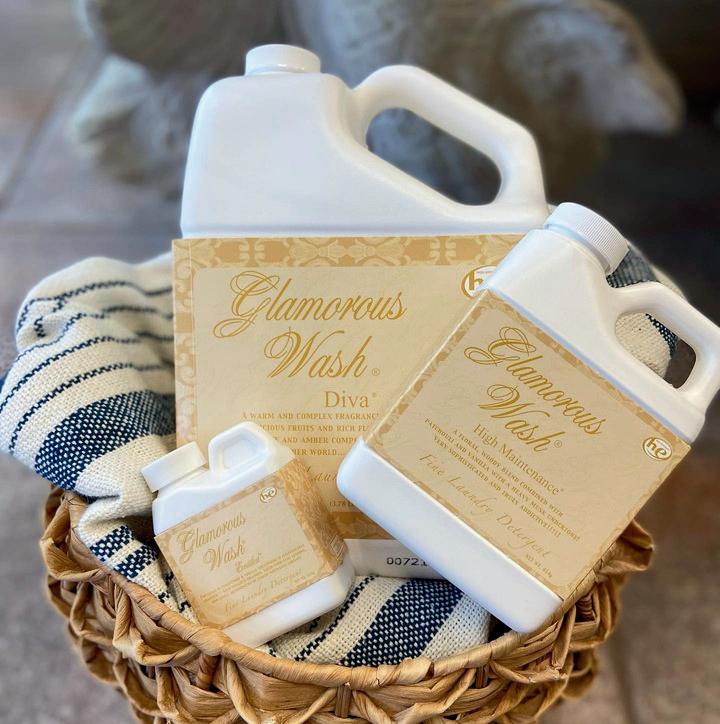

2025

LOCAL MUSICIANS
BAD HABiT
LOCAL TOURIST ATTRACTION
Museum of Discovery
MUSEUM
Crystal Bridges Museum of American Art
OUT-OF-STATE TRAVEL
Silver Dollar City
2025
RESORT
Big Cedar Lodge
SEASONAL ATTRACTION
Garvan Woodland Gardens — Holiday Lights
WHISKEY BAR
Volstead Proper
ACCOUNTING FIRM
Bell & Co.
BANK
First Arkansas Bank & Trust
CABINETRY
Southern Interiors
COUNTERTOPS
Countertop World
CREDIT UNION
Arkansas Federal Credit Union
DESIGN-BUILD TEAM
Hines Homes
DEVELOPMENT/NEIGHBORHOOD
Stonebrook
ELECTRICAL COMPANY
Gary Houston Electric Co.
FABRICS, DRAPERIES & WINDOW TREATMENTS
Made in the Shade
FIREPLACE & PATIO
Congo Fireplace & Patio
FURNITURE UPHOLSTERY
Robby Chism Upholstery
GUTTERS
MadDog Construction & Guttering
HOME ACCESSORIES
Blind Tiger Chandlery
HOME AUTOMATION
Sound Concepts
HOME CONTRACTOR
Menco Construction






















HOME GLASS
Alpine Glass & Mirror
HOME SECURITY
Triple-S Alarm Co.
HOMEBUILDER
Parkinson Building Group
INSURANCE FIRM
G&G Independent Insurance
INTERIOR DESIGNER
Sandy Sutton Design Center
INVESTMENT FIRM
Small Wealth Management

KITCHEN STORE/SUPPLY
Eggshells Kitchen Co.
LAWN CARE
A&K Quality Services
MORTGAGE LENDER
Arvest Bank — Joy Dailey
REAL ESTATE AGENT
iRealty Arkansas — Kyndle Daniels
REAL ESTATE COMPANY
Mid South Realty
REPAIR/REMODELING
Southern Interiors
SIDING/WINDOWS/ROOFING
Wilson’s Home Improvement
SOLAR POWER
Seal Solar
SWIMMING POOLS
Luxury Pool & Spa
TITLE COMPANY
Pro Land Title
COMMUNITY COLLEGE
University of Arkansas-Pulaski Technical College
PRIVATE COLLEGE
Ouachita Baptist University
PRIVATE SCHOOL
Little Rock Montessori School
PUBLIC SCHOOL
Cabot Freshman Academy
PUBLIC UNIVERSITY
University of Arkansas at Little Rock
SPECIAL EDUCATION SCHOOL
Pediatrics Plus








































Thank you for voting us as AY’s Best of Event Venues! With 18,000 square feet of open air event space, water features, covered “front porch, and permanent tie-downs; the Argenta Plaza makes for a great space to hold your events, festivals, and receptions!













The Law Offices of Katherine Blackmon is honored to be named AY’s Best of 2025 for Top Law Firm in Arkansas—an award the firm has proudly received multiple times. This continued recognition reflects nearly three decades of compassionate, highcaliber family law advocacy. Katherine Blackmon Carroll and her dedicated team are deeply grateful to their clients, peers, and community for this vote of confidence. Known for their traumainformed, client-centered approach, the firm combines legal strength with empathy, guiding clients through life’s most difficult transitions with integrity and care. This award reaffirms their commitment to excellence, service, and meaningful impact in every case.
ADVERTISING AGENCY
The Peacock Group
COLUMNIST OR REPORTER
Ya!Mule Wordsmiths — Dwain Hebda
MARKETING CONSULTANT
The Peacock Group — Madeline Roberts
MARKETING FIRM
Synergetic Social

RADIO PERSONALITY
B98.5 — Ashley King
SOCIAL MEDIA SPECIALIST
Honey Holler Marketing — Jordan Sullivan
TV PERSONALITY
THV11 Adam Bledsoe
WEATHER PERSON
THV11 — Tracy Beene
CHAMBER OF COMMERCE
Greater Hot Springs Chamber of Commerce
CONVENTION & VISITORS BUREAU
Visit Hot Springs
FUNDRAISER
Ronald McDonald House Charities of Arkansas & North Louisiana
— Chocolate Fantasy Ball



PERSON OF THE YEAR
Arkansas Razorbacks — Dave Van Horn
PLACE TO WORSHIP
First Assembly of God North Little Rock
WEDDING VENUE
Rusty Tractor Vineyards — Sunset Lodge












Cantrell Animal Clinic is honored to be named AY’s Best of 2025, providing outstanding care in small animal internal medicine, surgery, preventative services, grooming, boarding, doggy daycare and much more. Our compassionate team of veterinarians treats every pet like family— because they are.



For more than 40 years, Gary Houston Electric Company has served Central Arkansas with affordable, quality and timely Commercial and Residential electrical contracting services with a strong emphasis on customer service. We service both new construction and existing structures needing electrical repair or being remodeled.



“Gary Houston has done all the electrical work in my nearly 100 year-old house for over a decade. They’ve been able to diagnose and fix some thorny issues. The electricians are always prompt, cheerful, and happy to answer any questions. I highly recommend this company.”
— Karen Bradford









rmhcar-nla.org | @rmhcarnla Give the comfort of family to a child who is ill or injured


A campus alive with energy—where 500+ events a year mean there’s always something to experience.
Internships that get you in the game. Research that makes an impact. Clubs, traditions, championship moments—you’ll find your people and your purpose.
Here, your future starts strong—and affordably
With the Trojan Guarantee, eligible students can earn a zero-tuition bachelor’s degree.
Expect More. More opportunity. More connection. More of what matters.
Scan the QR code or go to ualr.edu for more information
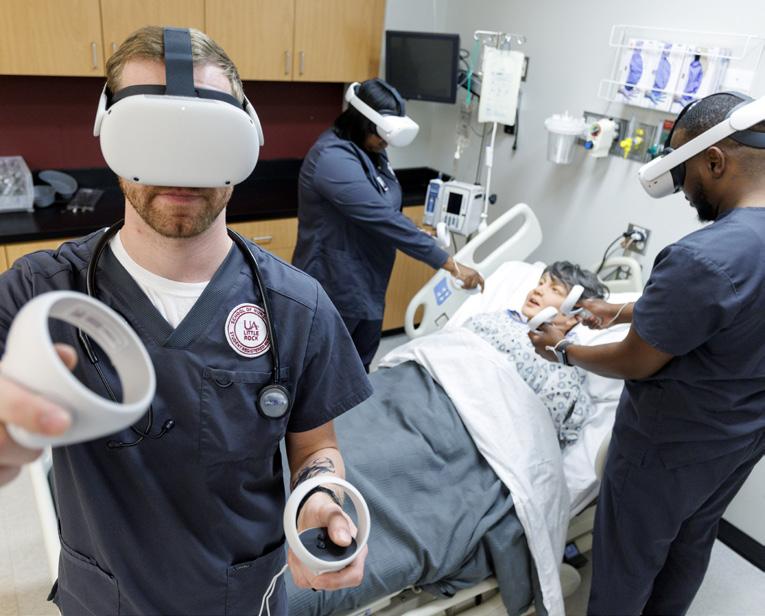

ARCHITECT
TAGGART Architects — Bram Keahey
AUCTION
Blackmon Auctions
CUSTOMER SERVICE
Arthur’s Prime Steakhouse
DOG GROOMER
Dat Pooch Mobile Dog Grooming
DOGGY DAY CARE
Hounds Lounge Pet Resort and Spa
DRY CLEANER
Hangers Cleaners
FINANCIAL ADVISOR
Small Wealth Management —
Kymberlie Reed, CRPC, APMA, CLTC, CMFA
FUNERAL HOME
Roller Funeral Homes
HVAC SERVICE
All American Heat & Air

HOUSEKEEPING
Molly Maid of Greater Little Rock
JEWELRY DESIGNER
Sissy’s Log Cabin
JEWELRY STORE
Sissy’s Log Cabin
LAW FIRM
The Law Offices of Katherine E. Blackmon
NONPROFIT
Junior Achievement of Arkansas
PARTY PLANNING/PRODUCTS/RENTALS
Party Time Rental and Events
PAYROLL COMPANY
Complete Payroll Services
PEST CONTROL
The Bug Man
PHOTOGRAPHER
Lizzy Yates Photography
PLUMBER
Victory Plumbing
PROMOTIONAL SERVICES
Arkansas Graphics
SPECIAL EVENTS PLANNER
Norwood-Day Floral Co.
STAFFING AGENCY
Arkansas Medical Staffing
TRAVEL AGENCY
Postcard Passengers Travel Agency
VETERINARIAN Cantrell Animal Clinic
VIDEO PRODUCTION iProv
WEB DESIGN Rock City Digital















































ARKANSAS HANDMADE PRODUCTS
Bathhouse Soapery
BOUTIQUE
Sage Boutique
BRIDAL STORE
Low’s Bridal
CBD STORE
Healing Hemp of Arkansas
CONSIGNMENT STORE
Yours Truly Consignment

EYEWEAR
McFarland Eye Care
FLOORING
C&F Flooring
FURNITURE
Down South
GARDEN CENTER
The Good Earth Garden Center
GIFT STORE
The Crown Shop
GROCERY STORE
Edwards Food Giant
HOME IMPROVEMENT STORE
Fuller and Son Hardware & Lumber
SEASONAL DESIGNER
Norwood-Day Floral Co.
SHOPPING CENTER
The Promenade at Chenal


























BOSS
Renew Mental Health and Wellness — Danielle Lynch, APRN
CEO
Ouachita Behavioral Health and Wellness — Susan Smith, MS, LPC-S
CHIEF FINANCIAL OFFICER
Pediatrics Plus — Chris Bell
2025
OVERALL COMPANY
Renew Mental Health and Wellness
PHILANTHROPY COMPANY
Stallion Transportation
PLACE TO WORK
Renew Mental Health and Wellness
AUTO DEALERSHIP SERVICE DEPARTMENT
Russell Chevrolet Co.
AUTO GLASS REPAIR
Capitol Glass Co.
AUTO/TRUCK ACCESSORIES
Goodsell Truck Accessories
BOAT/MARINE DEALERSHIP
Lacey’s Narrows Marina and Boating Center
CAR SALESPERSON
Mark McLarty Ford — Jason Koon
CAR WASH
Splash Car Wash & 10-Minute Oil Change
NEW CAR DEALERSHIP
Russell Chevrolet Co.
PREOWNED CAR DEALERSHIP
Russell Chevrolet Co.
RV DEALERSHIP
Moix RV Supercenter
TIRE CENTER
Vaughan Tire Co.
WINDOW TINT
Signature Window Tinting







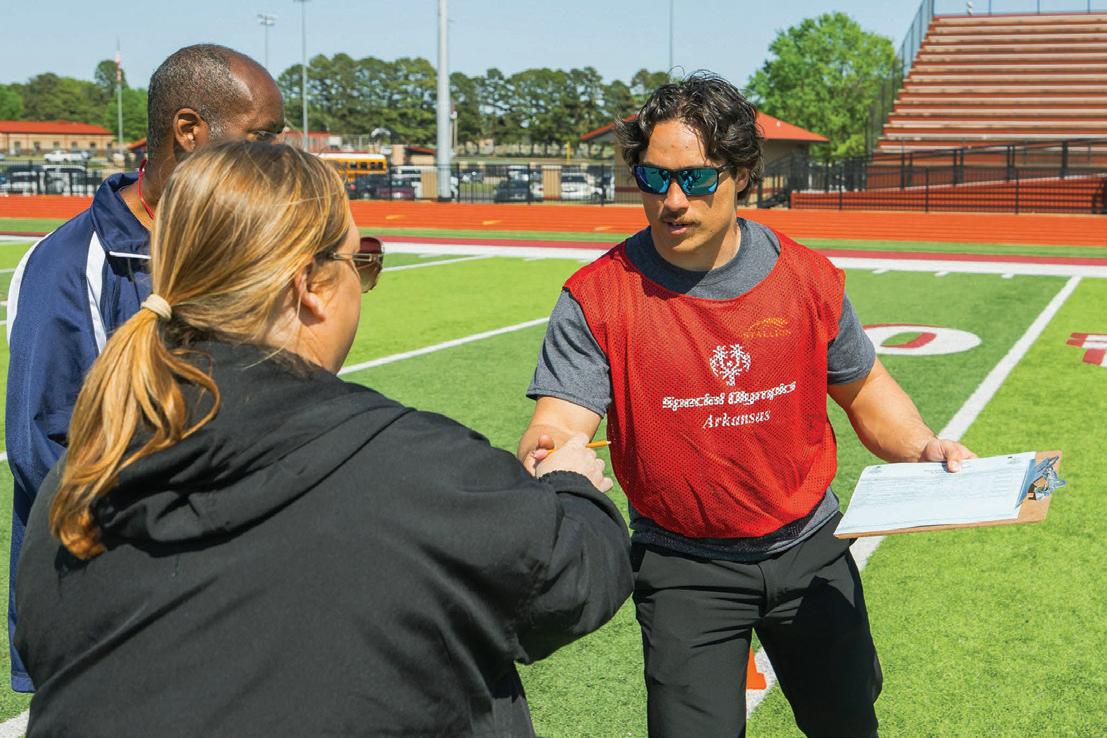












AAging — It happens. However, there are ways people can slow down visible signs of their years.
t Elevation Aesthetics in Conway, staff work to ensure all clients look and feel their best throughout their lives.
“When our patients come to us and want to achieve a more youthful, smooth complexion, we usually take a multifaceted approach,” said Carly Westerman, a licensed esthetician and leader at the spa. “It takes more than just Botox or professional skin care to achieve visible results.”
That is where biostimulators enter the picture. Everyone’s body naturally produces collagen and elastin until the mid-20s. After that, beginning a regimen of biostimulators can help slow the signs of aging.
Elevation Aesthetics is a premier destination for these biostimulators, which can be topically applied as PRX or injected as Sculptra. Another method of collagen stimulation is through treatments such as SkinPen that cause small injuries in the skin, which jumpstarts the body’s process of producing new tissue cells.

When patients go in for one of these three procedures, they are first numbed with a topical numbing compound, then products are either applied, injected or SkinPen is used.
“We aim to make sure all our patients are as comfortable as possible,” said Kassie Robertson, a nurse practitioner and leader at the spa.
At the forefront of making the experience comfortable and positive is an experienced and dedicated staff, three of whom — Hannah Pierce, Brittany Davis and Taylor Howe — are new to the team.
Westerman and Robertson said they appreciate how caring and approachable their whole team is.
“We never want anyone to walk in our doors and feel uncomfortable or judged,” Westerman said. “We quite literally have the best job there is — helping women feel like their absolute best selves. There’s no room for anything but kindness and encouragement in a job like that.”
Pierce, a licensed esthetician, said it is rewarding to help those who come to the spa leave feeling their most beautiful and authentic self.
“What sets us apart is how we care for our patients,” Pierce said. “It’s not about making the most money or providing a rushed service — it’s about working with our patients’ schedules, lives and budgets to create the best treatment plan for them and to give them our best every single appointment.”
Davis, a registered nurse, said she enjoys building relationships with her clients.
“I believe that aesthetic enhancements can positively impact a person’s self-esteem and overall well-being — a look-good, feel-good philosophy,” Davis said.
Howe, who holds a Doctor of Nursing Practice degree, said the staff’s mix of experience and individualized approaches to achieving wellness allows team members to learn from one another and grow together.
“Seeing results in the way my patients not only look but feel emotionally and physically is beyond rewarding,” Howe said.
501-697-2887
Elevation Med Spa

@elevationaestheticsconway










































































For those with a love of law and a thirst for justice, the legal system is not a juggernaut to be feared but a challenge to be embraced. The right attorney can smooth negotiations, ensure property changes hands appropriately, and generally save clients time and money in and out of court.





























We at AY About You salute these erudite men and women who translate legalese for the rest of us. That is why we are proud to highlight seven outstanding attorneys who are at the tops of their fields. In the pages that follow, those attorneys will demystify topics ranging from estate planning and family law to personal injury and real estate matters. While their time in practice and areas of expertise vary vastly, all share a common goal of helping their clients achieve a fair and just outcome.






We then dive into the careers of three very special members of the legal field. Dustin McDaniel, former Arkansas attorney general and founder of McDaniel Wolff law firm in Little Rock, provides inspiration grounded in his lifetime of service to the word of law, while two recently appointed judges provide insights about the view from their side of the bench.








Plus, we shine a spotlight on those being honored by the Arkansas Bar Association this year, as well as those handpicked by you, our readers, to be included in the “2025 AY About You Best of Lawyers.”
From all of us at AY, thank you to those who help make the legal system a little less intimidating for veryday folks. We salute you!






































By MAK MILLARD
Few look forward to the prospect of hiring a divorce attorney. When it becomes clear that it is time for a couple to go their separate ways, however, enlisting the help of an experienced family lawyer can be invaluable for navigating such a challenging situation. The last thing someone needs when dealing with a relationship split is to be blindsided by state law on top of everything else.
“The same law applies to every divorce in Arkansas, but this does not mean that every divorce has the same outcome,” said Angela Mann, attorney and partner at Mann & Kemp in Little Rock.
In Arkansas, Mann said, marital property is divided equitably — which does not always translate to “equally.” Arkansas law gives judges discretion on how to achieve an equitable division of marital property and debt, as well as significant discretion when considering alimony.
“Most people have little actual knowledge of divorce and only have their friends and family as a reference,” Mann said. “They therefore often have misconceptions about how the law is currently applied in Arkansas, especially in areas of custody, alimony and child support.”
One of the biggest surprises people come up against during a divorce is the discovery process. Completely foreign to most outside of the legal field, discovery allows attorneys to request answers to questions under oath. In many cases, individuals can be required to produce documents and other records, including financial and medical records.
“Most people have never been involved in any legal dispute, so they are surprised that divorce cases can take a year or longer to complete,” Mann said.
Recent years have also seen changes in the way divorce proceedings unfold. In 2021, the Arkansas legislature passed Act 604, which changed the way a court decides the best custody arrangement for a child. Prior to 2021, judges could award custody, joint or otherwise, based solely on their determination of the child’s best interests. Under the 2021 law, however, equal time with each parent is the default arrangement.
“The 2021 amendment modified the custody statute to now provide a presumption that joint custody is in the best interest of every child in Arkansas,” Mann said. “This presumption may be rebutted by clear and convincing evidence, which is a very high bar.”
As with any potential legal matters, it is important to find an attorney best suited to one’s needs, as well as make sure everyone is on the same page. At an introductory meeting, clients typically do not need to bring anything specific, and it is at that time that the attorney will explain the steps involved in a divorce, in addition to setting expectations. If potential clients are unsure about moving forward, Mann said, she often refers them to counseling instead.
“At the end of the first meeting, the attorney and client should both have a general understanding of the client’s goals, reasonable expectations for potential outcomes, and a plan for next steps,” she said.



By DOUG CRISE
Say this about John Collins: He has seen it from both sides. As a partner in the Little Rock law firm Collins, Collins & Ray, Collins is one of Arkansas’ leading figures in the practice of drunk-driving law. In fact, he literally wrote the book on it, co-authoring a 400-page trade book titled Arkansas DWI Defense: The Law and Practice.
It is, therefore, a bit hard to believe Collins’ origin story.
“I became a police officer,” Collins said. “I wanted to do good — and I thought I was doing good.”
Everything changed one night, when Collins made what he thought was a routine arrest. Probable cause was evident, and better still, Collins’ instinct as a cop told him an arrest was appropriate.
“Long story short, I ended up going to the hospital with him,” Collins said. “We were going to get a blood-draw, and it came back with zero alcohol and drugs. He ended up being diabetic, and that bothered me. It bothered me because my training didn’t stress enough that this could be a real issue.”
Collins was left wondering if there was a gap in his training when it came to assessing impairment, and he was concerned that his administration was too focused on producing arrest numbers.
“The more I learned, the more frustrated I got,” Collins said. Collins would eventually go to law school and work as a prosecutor before moving into criminal defense, but for all that, Collins does not consider his relationship with law enforcement to be an adversarial one. Last year alone, Collins led more than 20 training sessions with police departments across the country Collins sees imperfections in the way impaired driving is assessed, and as long as those imperfections exist, he will work with both sides.
“I’m trying to spread these scientific studies and this information as much as I can,” Collins said.
Collins said DWI arrests are typically two-faceted, being based on both an officer’s judgment and the readout of a breathalyzer test. Collins’ own experience with the diabetic suspect from his police days taught him that even the best officer’s eyeball judgment can be wrong. Meanwhile, Collins said, machines such as the breathalyzer are still not foolproof when it comes to accurate convictions.
Most judgments about impairment come down to a bloodbreath partition ratio that is used to determine the amount of alcohol in both a suspect’s blood and breath. Yet numerous factors outside of alcohol can affect a person’s BBR on a breath-tobreath basis, something that Collins said can lead to inaccurate findings.
“One of the leading scientists who studies these things said we should never rely just on breath testing,” Collins said. “There are still all these variables, and we also have to relate that back to what an officer is seeing.”
While Collins’ job is criminal defense in the traditional sense, he also sees his work as a pursuit of accuracy, wherever that may lead.
“When you start looking at these issues, you think, gosh, I sure am glad somebody’s looking out for this,” Collins said. “It’s different from most areas of law where there’s supposed to be this presumption of innocence. The way it’s treated, there’s almost a presumption of guilt when someone blows a .08 or higher.”



Attorney Charlie Cunningham at ARlaw Partners, an all-purpose law firm serving businesses and individuals, got his start practicing family law at the Department of Human Services with foster care cases. He has practiced family law ever since.
Cunningham encouraged families to take advantage of mediation before bringing issues to court.
“A lot of issues can be narrowed or even solved in their entirety without going into a courtroom and saying a bunch of mean things about each other,” he said.
Of course, if it gets to that point, there are a lot of factors to consider in divorce or custody cases. One important point is Arkansas state law still requires grounds for divorce beyond simply wanting one. Cunningham said the most common grounds lawyers in the state use is general indignities.
Cunningham said a common misconception that people have about family law is that all the cases are “grimy.”
“The vast majority of my clients are thoughtful, considerate and mature,” he said.
When looking for a family law lawyer, Cunningham advised people to look for a lawyer who is going to tell clients the truth, the whole truth and nothing but the truth.
“Most lawyers, in the first conversation, can give you a somewhat likely outcome you can expect from the court,” he said.
Cunningham said the most common issues couples face when getting divorced are property and debt decisions and differences in parenting styles. Contrary to past eras, which coined the phrase “It is always Mother’s Day in family court,” he said judges ideally want to grant parents joint custody of children.
“You have to prove by clear and convincing evidence, a very high burden, that joint custody is not in the children’ s best interest,” he said. “It can be done, especially when the court takes into account schedules that would take away from a parent’s ability to have the kid — think jobs that keep you out of town most of the time — if a parent is or is likely to be incarcerated, or if a parent suffers from drug addiction.”
By ALEX HARDGRAVE

In addition to custody disputes, family law covers alimony payments, which often come down to what one party feels it needs and what the other party is able to pay. The most common form of alimony one may see in Arkansas is called “temporary rehabilitative alimony.”
Some couples may want to have a prenuptial or postnuptial agreement to avoid issues in the future. Cunningham said people should consider the options if they have significant assets or own a business.
“If you are going to consider having either, have that conversation with your partner as early and as openly as possible,” he said.
Adoption and guardianship cases also fall under the broad umbrella of family law. Adoption requests are made to gain the child’s birth parents’ consent to the adoption unless that consent is deemed unnecessary, Cunningham said.
“For example, foster parents can adopt through foster care after the relationship between the child and his or her parents has been terminated,” he said.
Guardianship is slightly different in that adoption is permanent, while guardianships are often temporary, giving the child’s birth parents certain rights.
Needless to say, many of the issues that find their way into family court are emotionally charged. Acknowledging that, Cunningham’s best advice for any family law case is, “Be patient. Be kind. Be forthright with your lawyer.”


By MARK CARTER
ittle Rock attorney Blake Glasgow thinks people should be made aware of one important fact regarding intellectual property law.
“While some people use the terms patent and trademark interchangeably, they are different types of intellectual property,” he said. “Patents protect inventions, such as novel products or methods, while trademarks protect company brands, such as a company’s name, logo or slogan.”
Glasgow, who practices IP law at Little Rock’s Wright Lindsey Jennings law firm, added that the requirements for obtaining patent rights and trademark rights differ, as well.
“Patent rights in the United States can only be granted by applying to the U.S. Patent and Trademark Office," he said. "The USPTO examines the patent application by comparing the invention to pre-existing technology to determine whether the invention is patentable.
“Federal trademark rights are also granted by the USPTO. The trademark applicant files an application identifying the mark sought to be registered and the goods or services offered under the applied-for mark.”
Glasgow said the USPTO then examines the trademark application to determine whether registration would create a likelihood of confusion with any earlier registered trademarks. If none exists, the USPTO then issues the trademark registration.
“However, as a notable difference compared to patents, simply using a trademark in offering goods or services creates limited trademark rights even without a trademark application being filed or a trademark registration being issued,” Glasgow said.
Most patents expire 20 years from the filing date of the patent application resulting in a patent.
“The term of the patent therefore may be significantly less than 20 years depending on the pendency of the patent application,” he said. “Despite popular belief, a so-called ‘patent pending’ is merely a patent application pending, which does not grant the patent applicant any enforceable patent rights. Once the term of the patent expires, the patent owner no longer owns rights to exclude others from making and using the previously patented invention.”
Unlike patents, Glasgow noted, federal trademark registrations can be maintained forever as long as the company continues using the trademark in its business.
Glasgow said business in the IP law realm is brisk but can be painstakingly slow.
“The combination of increased patent and trademark applications and decreased number of patent examiners and trademark-examining attorneys has resulted in increased delays in the examination of patent and trademark applications at the USPTO over the past few years,” he said. “It now typically takes 12 to 18 months from filing a trademark application to registration of the trademark, and it may take two to three years for issuance of a patent.
“For companies that desire maximum protection for their new inventions or brands, it therefore is important to file patent and trademark applications as early as possible to get their place in line at the USPTO.



By MAK MILLARD
Aserious injury can have profound impacts on every aspect of one’s life and family, to say nothing of the additional stress of facing down a heavily lawyered insurance company afterward. An experienced personal injury lawyer can help one navigate legal obstacles and achieve justice that can sometimes only be found at the courthouse.
“The right to a jury trial is the cornerstone of our civil justice system,” said Taylor King, founding attorney at Taylor King Law, which has locations across the state. “Arkansas’ constitution guarantees citizens the right to a jury trial when resolving bodily injury claims. The erosion of that constitutional guarantee must not continue.”
Most people fail to realize the power dynamics at play between individuals and insurers. Receiving fair compensation following an accident, King said, is a contest between two unequal parties, and insurance companies are by far the stronger opponent. Even with decades spent dutifully paying premiums and never making a claim, people should not expect the company to be eager to return that kindness.
“Insurance companies are not going to show up on your doorstep with a checkbook and ask you, ‘How much?’” King said. “They are not going to suggest how you should manage your medical care or supply you with a list of medical providers. Claims must be made by the injured party.”
A personal injury attorney provides the necessary expertise and experience to tip the scales back into one’s favor. His own experience has shown King that parties enlisting the help of an injury lawyer receive more compensation than if they had handled the claim alone, even after factoring in attorney’s fees.
There are also developments in the law to consider. During the most recent state legislative session, Gov. Sarah Huckabee Sanders signed off on a one-sentence addition to the Arkansas Code dealing with recovery of damages by a plaintiff. Newly minted Act 28 addresses the amount of compensation an individual can receive for medical expenses.
“Act 28 affects how claims for medical bills in a tort action can be presented,” King said. “It’s now more important than ever to hire an experienced injury attorney who understands this new law.”
With no shortage of options, the challenge then comes down to picking the right representation. King suggested taking recommendations from family, friends and other trusted sources. Sometimes, he said, that “good feeling” one has about a particular lawyer or firm is the right way to go. When it comes to preparing for an initial meeting with a personal injury attorney, his advice was simple.
“Honestly, for me, I just need that person or their loved one or family member to tell me their story,” King said. “We can put the puzzle pieces together later. Gathering the accident report, photos, medical records, employment records and videos can all be collected after that initial meeting. We like to speak with our potential client, hear their story, make a connection and then map out a plan to help them seek justice for their losses.”



By MARK CARTER
Those attorneys who list real estate law as their favorite area of practice probably do not represent the majority of legal practitioners. Fortunately, real estate law is embraced wholeheartedly by a few brave souls, Beau Wilcox among them.
Wilcox, in private practice in Conway, said he has always found property law fascinating and one of the most important areas of the law, if not one of the more all encompassing.
“To call it ‘dirt law,’ as some of my colleagues do, is correct but still a bit misleading because property encompasses so much more than mere ground,” he said. “I am doing considerably more estate planning now instead of litigation, but that still entails protecting the rights of someone signing off on a trust with respect to their assets. Divorces almost always involve some measure of property division. My probate practice is lively for the same reason. If anything, property law may encompass more disciplines than any other.”
Through the ages and across cultures, real estate has been viewed as the most solid of investments. Land ownership carried with it not just potential monetary rewards but cultural ones, as well. A tract of land’s value may rise and fall over years, but barring a true act of God, land isn’t going anywhere anytime soon. The late, great American humorist and social commentator Will Rogers is alleged to have said of real estate, “Don’t wait to buy real estate — buy real estate and wait.”
Wilcox said property law tends to be more stable because of that. What can be complicated, he added, is litigating property law.
“Anything that invites emotional weight — and believe me, people are incredibly and understandably passionate about their property rights — is going to involve a juggling act concerning facts, law and that heightened sense of protectionism,” he said. “I love real estate law generally, but every now and again, we will get a case that’s a holy mess due to deeply rooted familial conflicts or lessthan-neighborly behavior.”
One of the trends Wilcox said he has seen is the tendency for property disputes to end nonamicably and in litigation. It is a trend he would love to see reversed.
“That passion people have for their property rights sometimes clouds their vision to the point that they might insist on litigating even a minor issue that could be settled,” he said. “I sign up for these things, I suppose, but I would contend that a lot of attitudes have shifted since the pandemic. Some of that probably stems from the economic uncertainty that COVID-19 brought about, but I think a personal trend for me is that with time and experience doing this, I feel like I can mediate and negotiate more assertively as a result.”
Wilcox cited a recent example in which he was involved in mediations on consecutive days over a property dispute.
“The one I thought would settle didn’t, and the one I was skeptical about did,” he said. “I guess the overall trend here is probably akin to what other lawyers are experiencing, but it seems like all of those moving targets in real estate practice are moving at a different pace now.”



By ALEX HARDGRAVE
It is a scary fact but a fact nonetheless that everyone dies. Another fact is that because of that, everyone needs estate planning.
“Life is unexpected,” said James Bornhoft, owner of Bornhoft Law in Hot Springs. “A will is a very straightforward way to prepare for the unexpected.”
He added that the document becomes even more important if a person gets married, has children or buys a home. Bornhoft said to consider family heirlooms that one would want to make sure get left with the proper parties.
“Every adult should consider having a will,” Bornhoft said. “It’s not just for older people or millionaires. If you’re 18 and you have any assets, even a car or bank account, people you care about, a will is a good idea.”
If one dies without a will in Arkansas, state laws determine who gets what property. If someone is no longer married or has children from a previous marriage, the dividing up process gets complex, and people may not end up with the assets the deceased person wished each of them to receive.
There are other types of estate planning beyond wills, including trusts. A trust is a legal agreement in which one’s assets become a separate entity to be managed by a trustee after death.
Bornhoft said the difference between a trust and a will is that a will only takes effect after one dies, while a living trust can take effect when the owner is still alive. Also, once someone with a trust dies, the trust does not have to go through the probate process like a will does, meaning beneficiaries receive the assets more quickly and those distributions stay private.
“A will is a much simpler document and a one-time thing, whereas a trust is an ongoing arrangement,” Bornhoft said.
Even though a will is simpler, individuals should still periodically reassess and update them. Bornhoft recommended doing so once a year or when a big life change happens, such as the birth of a child.
As technology becomes a larger part of life, plans for one’s social media account or crypto-assets one owns should also be taken into account in the estate planning process. A person can leave their passwords in a safe place and put someone in charge of finding those passwords and carrying out whatever the deceased may want done with their accounts.
Disclosing cryptocurrency in one’s will is important, as well, or heirs may never be able to access those resources once the owner dies, Bonhoft said.
A skilled estate planning attorney can help walk people through the steps to make sure all their assets are planned for and end up in the right places after the owner dies.
“Just don’t put it off,” Bornhoft said. “It’s a lot easier than you think, and it’s going to bring you peace of mind at the end of the day. It’s a final gift that you can leave, and it will cause fewer legal hassles during what’s already a difficult time.”


















By DWAIN HEBDA
Dustin McDaniel is a man in constant motion. Practically every week, he is in the air, headed to one state capital or another to argue cases and check in on clients from one end of the country to the other. His client list reads like a hall of fame of titan American businesses, including some of the largest and most powerful corporations based in or doing business in the U.S.
There is little that slows the ex-state legislator and former chair of the southern region of the National Association of Attorneys General, either then or now, save for the standstill traffic jam from which he conducted this interview. The irritation of being hemmed in place sparked in his voice.
“This might not be the best interview I’ve ever granted, given that I’m about ready to have a road rage incident,” he said at one point, punctuating the gallows humor with a round laugh. “We’re making news either way.”
With a highly successful stint as attorney general on his resume, McDaniel could be doing anything or nothing at all right now, but McDaniel thrives on being on the move. After leaving office, he opened his own firm, McDaniel, Richardson & Calhoun, now McDaniel Wolff, a national attorneys general practice, which placed him on the direct opposite side of the courtroom table from his AG days. It is a brand of law not found on every street corner.
“There’s a plaintiff’s side of an attorneys general practice, which are law firms out there that are being contracted to serve as outside counsel for the attorneys general themselves. That’s not what I did,” he said. “When I left office, I started representing the companies through my firm in Little Rock, McDaniel Wolff. We were a defense practice.”
join one of the most prestigious and powerful law firms in the country to carry on his work, which McDaniel did starting last summer.
“I was honored and humbled, and it was the kind of challenge I was ready for at that phase in my life,” McDaniel said. “I was excited to do it. I’m honored to do it. This has been my calling since leaving public life.”
So began the Little Rock office of Cozen O’Connor, an international

McDaniel was successful in his work, so much so that one day, Cozen O’Connor practice founder Bernie Nash called him personally to tell McDaniel he was retiring and wanted the Little Rock attorney to
powerhouse of more than 900 attorneys practicing in the U.S., U.K. and Canada. The firm specializes in a wide range of the most sophisticated legal matters, including litigation, corporate law and regulatory law. Representing a broad array of leading global corporations and middle market companies, Cozen O’Connor serves its clients through 33 offices across two continents.


McDaniel now runs with a pack that involves big companies playing for high stakes. His clients, many of whom employ rafts of inhouse counsel and fortify them with nearly unlimited resources, are nonetheless often at a disadvantage when locking horns with an AG — or, more accurately stated, AGs, plural, as is often the case.
“States have a tendency to [litigate] in conjunction with one another,” he said, “so Arkansas, Tennessee, Florida, Ohio, Indiana and Texas will band together, for example, and open what is called a multistate. They’ve signed agreements with one another. They’ve allocated tax dollars of how much they’re going to pay to fund the litigation and how many lawyers each office is going to contribute to sue Acme Inc. for whatever reason.
“When a group of state attorneys generals, even of small states — Arkansas, South Dakota, Oklahoma, Nebraska — when they come together, their legal authority and their resources can be overwhelming. Any company that is dealing with multiple state attorneys general, whether it’s in the investigation phase or the litigation phase, needs very experienced, highly sophisticated counsel. We represent companies from all over the nation when they are being investigated by or litigating against the states.”
Speaking from experience, McDaniel said state AGs have much more legal clout than people often give them credit for, and they have got the landmark legal wins to prove it.
“When we look back historically, we see that states had antitrust
authority before the U.S. federal government did,” he said. “State AGs formed the National Association of the State Attorneys General in 1907, specifically because they wanted to be more aggressive in antitrust law, meaning they wanted to work together in taking on America’s largest businesses, and that’s what they’ve done since 1907.
“The U.S. government tried to tackle big tobacco for 50 years, and they were powerless to do it, but the state attorneys general, in a multistate investigation and litigation led by, of all places, Mississippi, led to the master settlement agreement of 1998 that resulted in $7 billion a year being paid by the tobacco companies to the states. Even today, Arkansas gets $60 million a year every year from that settlement.”
Big tobacco was not the only seemingly impervious corporate giant to trip over AGs’ gossamer web. The states won an antitrust case against Microsoft over the company’s attempt to dictate its browser to be used on all new laptops and successfully took on big banks over mortgage fraud during the 2009 housing crash. More recently, state AGs have held sway in lawsuits concerning unchecked manufacture and prescription of opioids and ongoing action against Google that has resulted in two recent judgements thus far. The list goes on.
If it sounds head-dizzyingly complex, it is, which is why attorneys with the unique set of experiences and skills of McDaniel are in such high demand by the big firms that are willing and able to put extensive legal tools at their feet. Thus, while the work itself is not appreciably different than when he was under his own banner, McDaniel’s joining the legal behemoth Cozen O’Connor radically changed the number and types of resources at his disposal.
“It’s very complex, which is the reason that our group focuses exclusively on [this legal specialty,]” McDaniel said. “We also have a huge commercial litigation group. We have a huge white-collar practice group. We have Cozen Public Strategies, which is our outside lobbying company. We employ lobbyists and government relations experts that can deal with anyone from the mayor of Chicago to the White House. We all synchronize our efforts to serve the really sophisticated clients.”










The late U.S. Supreme Court Justice Antonin Scalia once said of his profession: “If you’re going to be a good and faithful judge, you have to resign yourself to the fact that you’re not always going to like the conclusions you reach. If you like them all the time, you’re probably doing something wrong.”
The theme of Scalia’s quote, the struggle to place facts and precedent before emotion and popularity, is the enduring challenge facing anyone who sits on the judicial bench. Judges are made, not born, forged in the furnace of the courtroom and hardened by bearing the weight of responsibility for a legally sound decision. There is no judge school save for that, no exam except of conscience, capability and a dose of common sense.
To be a judge is to embody the impartiality the rest of the world does not have to pretend it has, to place all trust in the law and its applications both practical and implied. Judges exist not only to ensure a fair and complete airing of the facts of a case but to create an environment in which opposing attorneys can make the best argument possible.
The role of a judge is to be admired, but the reality of living with that title can be a lonely one. Not all decisions are spelled out clearly in statute, and applying the law consistently and correctly — often with a person’s freedom or even their life on the line — is as much a skill as a teachable science.
Judges represent a consistent berm for each side of a case to scale in argument and applicable precedent, and is the most visible and impactful element of the American judicial system. In the following profiles, AY About You features two of the more recent judicial appointments on the Arkansas bench, one in his first assignment and the other a bit more seasoned. We spoke to them to glean an understanding of what the most honorable position means to them and how they live up to the expectations that come with it.

By DWAIN HEBDA

Photo by JAMIE LEE
Apracticing attorney for some 15 years with a focus on litigation and mediation, Judge Lucas Rowan did not come to his decision to pursue the law as a career until late in his undergraduate years at the University of Central Arkansas in Conway.
“I was kind of late in the game figuring that out,” he said. “The law was something totally new in my family; in fact, the first lawyer that I ever met was a guy named Tom Courtway, who was the general counsel at UCA. The only reason I even met him was because I thought I might go to law school one day, and so I just called him and said, ‘Hey, can I come meet with you?’
“I ended up getting a business degree thinking no matter what I do, it would help to know how to run a business. From there, I just made the decision to try law school, and it worked out. I was accepted and off and running.”
Rowan said he gravitated toward being a courtroom attorney over one that dealt with other matters, such as corporate law, wills or real estate.
6th Judicial Circuit
Appointed Dec. 16, 2024
“A lot of it is all the preparation work that is really needed to put on a good case. You can never overprepare; there are so many things that are out of your hands as a lawyer.”
Fortunately, Rowan came to the challenging position with a background tailor made for the rigors of his career. A scholarship athlete in college, Rowan found the same work ethic, preparation mindset and competitive drive that served him on the basketball court was cut to fit into his repertoire as a barrister.
In the same fashion, the time he spent arguing cases in the courtroom gave him a literal front-row seat to observe what separated truly skilled judges from the rest of the herd.
“We’ve had a very good slate of judges over my 15 years here,” he said. “No judge is perfect, but I found myself noticing, ‘Hey, this is something this judge did well,’ and ‘This is something I didn’t like.’ Over the years, you kind of see a pattern of the principles you’re going to adopt, as well as the ones you won’t.
“The main thing for me that has been consistent over those 15 years is the judges I liked the best were the ones who were consistent. You knew what they were going to do, even if you didn’t like it. The other thing was they were efficient; they would get people in so you could get your time in court. One of the most frustrating things for clients is having to wait a really long time just to be heard.”
“When I started in private practice 15 years ago, I absolutely did not have any real concept of what it was really like. I mean, you think you might know, but once you get there, it is not what you expect.”
“A lot of lawyers, probably most lawyers, don’t actually go to court,” he said. “I figured out pretty early I wanted to do that. I wanted to go in and help people and present cases.”
After graduating from the University of Arkansas at Little Rock William H. Bowen School Law, he worked as a law clerk in Division 6 of the Pulaski County Circuit Court. From there, he was courted by several firms, eventually joining what is now Dodds, Kidd & Ryan in Little Rock. He chose the firm for the opportunity it gave him to make partner while practicing the kind of courtroom law he envisioned. Once there, however, he quickly discovered just how much of the job law school left out.
“When I started in private practice 15 years ago, I absolutely did not have any real concept of what it was really like. I mean, you think you might know, but once you get there, it is not what you expect,” he said.
Since his appointment to the bench late last year, Rowan has tried to embody both of those qualities while running his courtroom. He has also learned how to adjust his perspective on the cases before him, forcing himself to view the facts as a judge and not as a lawyer, which he said is surprisingly different.
“As a judge, you don’t get to hear everything. You only get to hear what’s presented to you,” he said. “There have been times where you’re like you know there’s more to it that you just don’t know, but you still have to make the decision based on what’s in front of you, not what could be out there. It definitely is a different perspective.”
Recently, Rowan has entered yet more new territory in his career, that being running for reelection next March. He said while campaigning is far from his favorite part of the job, he has tackled it with characteristic gusto in order to continue his career on the bench.
“It’s a lot of work; you’ve got to go out there and do all that, and once you make the decision to run, you have to go all in," he said. "Leading up to the election, we’re going to give it everything we have and try to stay on the bench. I think it’s a really fulfilling role, and we’re doing a lot of good work for the people of Pulaski and Perry counties.”
Judge Hugh Finkelstein
Division 4
6th Judicial Circuit
Appointed Dec. 16, 2024
During his legal career as a judge and prosecutor, Judge Hugh Finkelstein has conducted himself with distinction and done so primarily in the public service realm, executing the noble cause of standing up for crime victims and ensuring offenders are held accountable for their crimes.
“My whole career has been about giving back to the community and trying to help people,” he said. “As a prosecutor, I saw a lot of different kind of crimes, a lot of sexual assault where I’m talking to an 8-year-old girl about the worst day of their life and trying to give them some hope and perspective on this. I’ve seen a guy who stole all of this money from his mother, and she’s destitute, and we’re trying to get some justice for her.”
After earning his law degree from the Bowen School of Law in 1991, he spent a short time in private practice before pursuing a 19-year tenure with the 6th Judicial District Prosecuting Attorney’s Office in Little Rock and eventually becoming a division chief.
From January 2015 to May 2017, he served as the chief deputy prosecuting attorney in the 20th Judicial District Prosecuting Attorney’s Office in Conway, where he was responsible for trying or supervising all the criminal cases filed in that jurisdiction.
His tenure as a judge included appointment as Little Rock District Judge in 2017 and 2018. He conducted himself with such distinction he was twice voted District Judge of the Year by the Pulaski County Bar Association. He was also appointed twice as a special justice on the Arkansas Supreme Court, all three appointments coming under former Gov. Asa Hutchinson.
Finkelstein’s 2020 bid for Circuit Judge District 6, Division 2, came up short, leading him to the Arkansas Department of Public Safety in 2021. There, he rose to the level of chief of staff before last December’s reappointment to the bench, an opportunity he had been waiting for.
“Honestly, I’d been talking to my wife and praying about it for a while in hopes that [a judgeship] might come up,” he said. “There wasn’t a real, ‘Gee, should I do it or not?’ when it was offered. I felt compelled to do it. It’s something I’ve wanted to do, something I felt fit my personality.”

calling balls and strikes. It’s not going to be about who’s your friend or who do you feel sorry for. It’s about making decisions that are just and based on the law.”
Finkelstein said one of the more humbling elements of the role of a judge is to know that each ruling has consequences for the parties that have come before him. Living with his decisions under the law is something that only comes with time.
“Anyone who thinks that they know all the answers is either the most secure person in the world or they’re lying,” he said. “I don’t have a crystal ball where I can say, ‘I know the best way to do this no matter what.’ I always try to say, ‘Did I do the best that I could in this situation? Was there a better decision I could have made? Was there a better order that I could have entered?’
“Helping people in the community, giving them some peace of mind or getting their cases resolved in a timely manner or just treating them respectfully and professionally, that’s a big deal.”
The manner in which Finkelstein’s courtroom runs reflects both his experience on the bench and his bone-deep belief that being a judge was something he was born to do.
“I think it benefits someone who’s a trial judge if they’ve been a trial lawyer first,” he said. “It’s something as simple as knowing when to speak and when not to speak. You don’t want to interrupt because it’s not your case. It’s the attorneys’ cases, and they know it better than I do. If there’s something that I need to know in order to make a decision and it hasn’t been asked, then I’ll ask it, but for the most part, I want to let the lawyers do their jobs and represent their clients.
“Knowing the rules of evidence, knowing the rules of procedure is a big deal because if the rules don’t apply, then it’s chaos. People need to know that when they come into a court, that the judge is going to be
“I think doing that helps me keep my mind flexible on how to resolve issues that are not necessarily straightforward, kind of how to think outside the box to get the best results so that these families and, especially, these kids can thrive.”
Finkelstein so believes in the work he is doing that he has decided to run for reelection, and in an interesting twist in which appointed judges are prohibited from running for the role in which they are appointed, both he and Rowan will run for each other’s spots. Like his counterpart, Finkelstein said campaigning is the least enviable part of life as a judge, but the opportunity to serve society makes the effort worth it.
“Helping people in the community, giving them some peace of mind or getting their cases resolved in a timely manner or just treating them respectfully and professionally, that’s a big deal,” he said. “Too many times, you have people who think they’re a judge and this is my seat, and it’s not. It’s the people’s seat. We’re just lucky enough to be sitting there for a little bit.”





Whether they are needed to help someone get out of a legal situation, set up a business or find resolutions to family issues, lawyers play a substantial role in keeping our society moving forward. According to the American Bar Association’s annual National Lawyer Population Survey, the number of attorneys in the country increased by 15.2 percent over the past decade. There are more than 1.33 million attorneys actively practicing law in the United States and more than 6,000 practicing in Arkansas. With so many to choose from, it can be difficult for a potential client to know they are getting the best representation possible. With that in mind, AY About You is highlighting the Arkansas Bar Association’s award-winning lawyers, as well as our readers’ choices for the best lawyers in the state.
Since 1898, the Arkansas Bar Association has supported lawyers who not only serve clients but serve their communities, their state and the cause of justice itself.
The law touches almost every part of life. From helping families through difficult transitions to supporting small business owners, protecting individual rights and standing up for fairness, Arkansas lawyers are working every day, often behind the scenes, to make life better for those they serve.
Lawyers may not always be in the spotlight, but their work is essential. It’s the kind of work that strengthens families, safeguards freedoms and ensures equal access to justice. When we work together through the Arkansas Bar Association, we become more than a group of professionals. We become a community, one dedicated to fostering integrity, advancing the practice of law and protecting the rule of law across our state.
Each year, it is a true honor to recognize ArkBar members who have gone above and beyond in these efforts. They lead with humility, serve with purpose and demonstrate the best of what the legal profession can be.
The Arkansas Bar Association is proud to present the following awards to members whose leadership, service and dedication reflect the highest ideals of the profession.
To each of this year’s award recipients: Thank you. Your work inspires us. Your commitment strengthens our profession, and your example reminds us of what is possible when we use our legal training not only to make a living but to make a difference.
Many of these honors will be recognized during the 127th Annual Meeting June 11 to 13 at Oaklawn in Hot Springs. The meeting brings together legal professionals from across the state for continuing education, collaboration and celebration.
Presidential Awards of Excellence:
Stuart P. Miller
G. S. Brant Perkins
Golden Gavel Awards:
Margaret King Davis
Adrienne M. Griffis
Denise R. Hoggard
Glen Hoggard

Chris Hussein
Adam Jackson
Frank LaPorte-Jenner
Meredith Lowry J. Cliff McKinney II
Anthony McMullen
William J. Ogles
Aaron Squyres
Louise E. Tausch

Other Awards:
Tyler Mlakar
Frank LaPorte-Jenner
Samuel W. Mason
Rep. Matthew Brown
Sen. Tyler Dees
Congratulations to the following members who have been admitted to the practice of law in Arkansas for 50 years:
Mr. Wayne Ball • Mr. Marc I. Baretz • Judge Kathleen Bell • Mr. Lonnie R. Beard • Mr. Bill W. Bristow • Mr. Noel F. Bryant
Mr. Carl W. Bussey • Hon. Ted C. Capeheart • Judge Susan Webber Wright Carter • Mr. Edward F. Cochran
Hon. Elizabeth Danielson • Justice Paul Danielson • Mr. Bob Estes • Mr. Bruce T. Garnett • Mr. Stephen Richmond Giles
Mr. James C. Graves • Mr. George Robert Hardin • Mr. Judson C. Kidd • Mr. James F. Lane • Mr. Stark Ligon
Hon. Mary Spencer McGowan • Mr. James Bruce McMath • Mr. Stan D. Miller • Mr. Harry Truman Moore
Mr. Michael C. O’Malley • Mr. Coy J. Rush Jr. • Judge Joe Carter Short • Judge Hamilton H. Singleton Judge (retired) Kim M. Smith • Mr. Donald M. Spears • Mr. Hugh Spinks • Mr. Thomas B. Staley • Mr. James W. Stanley Judge Samuel Turner Jr. • Dr. Jerry J. Vervack • Judge Morgan E. Welch Jr. • Mr. David H. Williams Hon. Ralph Edwin Wilson Jr. • Mr. Arlon L. Woodruff
The Arkansas Bar Foundation and the Arkansas Bar Association recently honored several persons and organizations for their outstanding contributions at the Annual Arkansas Bar Foundation Fellows’ Dinner on April 11:
William M. Griffin III • Richard Donovan • Philip C. Wilson • George R. Rhoads (posthumous) • Elaine Kneebone
Judge Cindy G. Thyer • Annie Smith • Pulaski County Bar Association • Sebastian County Bar Association

Miller,
L. Pawlik
Presidential Awards of Excellence

Stuart P. Miller; Mitchell, Williams, Selig, Gates & Woodyard, Rogers — in recognition of outstanding support and dedication to the mission and integrity of the Arkansas Bar Association.

Margaret King Davis; Taylor King Law, Little Rock — in recognition of her outstanding leadership and service as chair of the mock trial committee.

Denise R. Hoggard; Rainwater Holt & Sexton, Little Rock — in appreciation of her steady guidance and service on the personnel committee.

Chris Hussein; Taylor Law Partners, Fayetteville — in recognition of his creative vision and energetic leadership as co-chair of the 127th Annual Meeting.


Frank LaPorte-Jenner; LaPorte-Jenner Law, Little Rock — in recognition of his leadership and dedication to advancing advocacy as chair of the young lawyers section.
J. Cliff McKinney II; Quattlebaum, Grooms & Tull, Little Rock — in recognition of his contributions to the development and advancement of the 2025 ArkBar Legislative Package.

G. S. Brant Perkins; The Perkins Law Firm, Jonesboro — in appreciation of his dedicated stewardship and lasting contributions as treasurer.

Adrienne M. Griffis; Kamps & Griffis, Little Rock — in appreciation of her sustained dedication and leadership on the mock trial committee.

Glen Hoggard; Hoggard Law Firm, Little Rock — in recognition of his thoughtful leadership in advancing the association’s legislative priorities as chair of the legislation committee.

Adam Jackson; Deputy Prosecuting Attorney, 6th Judicial District, Little Rock — in recognition of his leadership and commitment as vice chair of the mock trial committee.

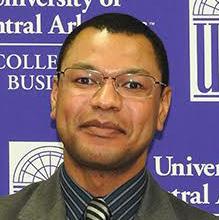
Meredith Lowry; Wright Lindsey Jennings, Rogers — in recognition of her leadership in navigating emerging technologies as chair of the AI task force.
Anthony McMullen; Associate Professor of Business Law, University of Central Arkansas, Conway — in appreciation of his continued service and meaningful contributions to the mock trial committee.
Golden Gavel Awards

William J. Ogles; Hall Booth Smith, Little Rock — in recognition of his creative energy and enthusiastic leadership as co-chair of the 127th Annual Meeting.

Louise E. Tausch; Atchley, Russell, Waldrop & Hlavinka, Texarkana — in recognition of her dedicated service and thoughtful contributions to the personnel committee.

Aaron Squyres; Wilson Law Group, Little Rock — in recognition of his thoughtful leadership and service as chair of the political speech and activities task force.

Maurice Cathey Award: Tyler Mlakar; Rose Law Firm, Rogers — in recognition of his innovative spirit and energetic contributions to The Arkansas Lawyer magazine.

Judith Ryan Gray Young Lawyer Service Award: Samuel W. Mason; Oliver Law Firm, Rogers — in appreciation of his outstanding efforts to strengthen and support the young lawyers section.

Legislative Award: Sen. Tyler Dees; Arkansas Senate, District 35, Siloam Springs — in recognition of his dedication to public service and leadership in the Arkansas Legislature.

Frank Elcan, II Young Lawyers
Leadership Award: Frank LaPorteJenner; LaPorte-Jenner Law, Little Rock — in appreciation of his leadership, commitment and service to the young lawyers section.

Legislative Award: Rep. Matthew Brown; Arkansas House of Representatives, District 55, Conway — in recognition of his dedication to public service and leadership in the Arkansas Legislature.

The Arkansas Bar Foundation was established in 1958 to support efforts at improving the administration of justice. The foundation’s mission is to promote educational, literary, scientific and charitable purposes, and it is classified as a 501(c)(3) tax-exempt organization.
Founded in 1898, the Arkansas Bar Association is the premier legal association in the state. As a voluntary organization of more than 5,000 members, the association’s primary mission is to support attorneys; advance the practice of law; advocate for the legal profession; foster professionalism, civility, and integrity; and protect the rule of law.
THE ARKANSAS BAR FOUNDATION AND THE ARKANSAS BAR ASSOCIATION have selected the following persons to honor this year because of their outstanding contributions. Those selected are:


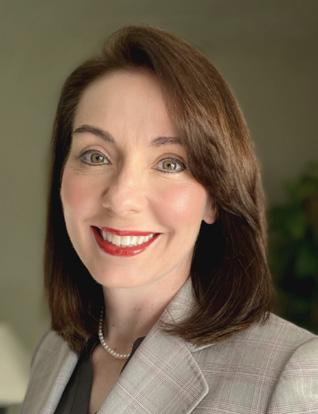

Outstanding Lawyer Award: William M. Griffin III; Friday, Eldredge & Clark, Little Rock — in recognition of excellence in the practice of law and outstanding contributions to the profession.

C. E. Ransick Award of Excellence: Philip C. Wilson; Office of the Public Defender, Malvern — in recognition of outstanding contributions to the profession.

Outstanding Lawyer-Citizen Award: Richard Donovan; Rose Law Firm, Little Rock — in recognition of outstanding participation in and for excellent performance of civic responsibilities and for demonstrating high standards of professional competence and conduct.
James McKenzie Professionalism Award: George R. Rhoads (posthumous) — in recognition of sustained excellence through integrity, character and leadership to the profession and the community.
Outstanding Lawyer-Humanitarian Award: Elaine Kneebone; Attorney at Law, Arkadelphia — in recognition of outstanding humanitarian service.

Equal Justice Distinguished Service Award: Judge Cindy G. Thyer; Mitchell, Williams, Selig, Gates & Woodyard, Little Rock — in recognition of commitment to and participation in equal justice programs, including pro bono efforts through legal services programs.
Equal Justice Distinguished Service Award: Annie Smith; Professor of Law, University of Arkansas School of Law, Fayetteville — in recognition of her commitment to and participation in equal justice programs, including pro bono efforts through legal services programs.
Outstanding Local Bar Association: Pulaski County Bar Association
Outstanding Local Bar Association: Sebastian County Bar Association



ADMINISTRATIVE/ REGULATORY LAW
Mark H. Allison
Wright Lindsey Jennings
AGRICULTURE AND FARMING
Grant Ballard Ark Ag Law
ALTERNATIVE DISPUTE RESOLUTION
John T. Adams Fuqua Campbell
Vicki Bronson Conner & Winters
E.B. “Chip” Chiles IV Quattlebaum, Grooms & Tull
Suzanne G. Clark Clark Law Firm
Tim Cullen Cullen & Co.
Adrienne M. Griffis Kamps & Griffis
Gary D. Marts Jr.
Wright Lindsey Jennings
Rodney P. Moore
Wright Lindsey Jennings
Troy A. Price
Wright Lindsey Jennings
Bo Renner RMP Law
Catherine A. Ryan Dodds, Kidd & Ryan
Tasha C. Taylor Taylor & Taylor
APPELLATE
Catherine A. Ryan Dodds, Kidd & Ryan
BANKING AND FINANCE LAW
Charles Darwin “Skip” Davidson Davidson Law Firm
Charles D. McDaniel Eichenbaum Liles & Honaker Law
BANKRUPTCY
Vanessa Cash Adams ARlaw Partners
Lyndsey D. Dilks Dilks Law Firm
Branch Fields Lax, Vaughan, Fortson, Rowe & Threet
Stephen L. Gershner Davidson Law Firm
Scott Hunter Jr. Hunter Law Firm
Jennifer M. Lancaster Lancaster Law Firm

Sydney Rasch
Turner & Rasch
Danyelle Walker Law Office of Danyelle Walker
BUSINESS
Michelle Simmons Allgood Mitchell, Williams, Selig, Gates & Woodyard
Charles Darwin “Skip” Davidson Davidson Law Firm
Ledly Jennings L. Jennings Law
Charles D. McDaniel Eichenbaum Liles & Honaker Law
Dustin McDaniel Cozen O’Connor
Abbie Decker Rucker Fuqua Campbell
Patrick L. Spivey Fuqua Campbell
BUSINESS LITIGATION
Phil Campbell Fuqua Campbell
Ryan Caststeel Hopkins Caststeel
Charles Darwin “Skip” Davidson Davidson Law Firm
Richard C. Downing
James, House, Swann & Downing
Stephen L. Gershner Davidson Law Firm
Judy Simmons Henry Wright Lindsey Jennings
Gregory M. Hopkins Hopkins Caststeel
Matthew House James, House, Swann & Downing
Patrick R. James James, House, Swann & Downing
William James James, House, Swann & Downing
Andrew King Kutak Rock
Glenn Larkin Quattlebaum, Grooms & Tull
Carla L. Miller James, House, Swann & Downing
Olivia Rottman Prestige Legal
Charley E. Swann James, House, Swann & Downing


Zachary D. Wilson Jr.
James, House, Swann & Downing
Ryan Younger
Quattlebaum, Grooms & Tull
CIVIL LITIGATION
Annie Depper
Fuqua Campbell
Jesse Gibson Gibson Law Firm
Jason Owens
Owens & Parker Law Firm
Joh n Stobaugh
Schnipper, Britton & Stobaugh
CIVIL RIGHTS
Nickolas W. Dunn
Davidson Law Firm
David Fuqua Fuqua Campbell
COMMERCIAL LAW
Randy L. Grice
Hilburn Harper
Paula Storeygard Hilburn Harper
COMMERCIAL LITIGATION
Mark H. Allison
Wright Lindsey Jennings
Adrienne L. Baker
Wright Lindsey Jennings
Betsy Baker
Rose Law Firm
Stephen Bingham
Rose Law Firm
Vicki Bronson Conner & Winters
Phil Campbell Fuqua Campbell
Robert M. Cearley Jr.
Cearley Law Firm
Annie Depper Fuqua Campbell
Richard Donovan Rose Law Firm
Richard Downing
James, House, Swann & Downing
John R. Elrod
Conner & Winters
David Fuqua Fuqua Campbell
Nicholas D. Hornung
Wright Lindsey Jennings
Colin Johnson
CJD Law Firm
Jessica Pruitt Koehler
Wright Lindsey Jennings
Kelly W. McNulty
Gill Ragon Owen
David Mitchell Jr.
Rose Law Firm
Rodney P. Moore
Wright Lindsey Jennings
Bruce E. Munson
Munson, Rowlett, Moore & Breeding
Steven W. Quattlebaum Quattlebaum, Grooms & Tull
Gordon S. Rather Jr.
Wright Lindsey Jennings
Abbie Decker Rucker Fuqua Campbell
John E. Tull III
Quattlebaum, Grooms & Tull
Ralph W. Waddell Jr. Waddell, Cole & Jones
Samuel T. Waddell
Waddell, Cole & Jones
William A. Waddell Jr. Friday, Eldredge & Clark
COMMERCIAL
REAL ESTATE
Mitch Berry Proland Title Co.
Charles Darwin “Skip”
Davidson Davidson Law Firm
Kendel Grooms
Campbell, Grooms & Spaulding
Tim Grooms
Quattlebaum, Grooms & Tull
Heartsill Ragon III
Gill Ragon Owen
Christopher Travis Gill Ragon Owen
Robbie Wilson Wilson Law Group
CONSTRUCTION LAW
Matthew B. Finch
Gill Ragon Owen
Stephen L. Gershner Davidson Law Firm
CORPORATE
FINANCE, MERGERS & ACQUISITIONS
Chad L. Cumming Jr. Gill Ragon Owen
Bryan W. Duke Friday, Eldredge & Clark
John Lessel RMP Law
CORPORATE LAW
Joe Denton Denton, Zachary & Norwood
D. Nicole Lovell
Mitchell, Williams, Selig, Gates & Woodyard
Danielle Whitehouse Owens
Gill Ragon Owen
Rufus Wolff
McDaniel Wolff






CRIMINAL DEFENSE
Patrick J. Benca
Lion Legal
James Bornhoft
Bornhoft Law
Jason Boyeskie
The Law Group of Northwest Arkansas
Toney Brasuell
Brasuell Law Firm
Greg Bryant
Greg Bryant, Attorney at Law
David R. Cannon
The Cannon Law Firm
Nickolas W. Dunn
Davidson Law Firm
Pam Epperson
Epperson Panasiuk Law
John Wesley Hall
John Wesley Hall
Josh Hurst
Hurst Law Group
William “Bill” James Jr.
James Law Firm
William James
James, House, Swann & Downing
Judson C. Kidd
Dodds, Kidd & Ryan
Mircha King
Mircha King Law
Birc Morledge
Morledge Law Firm
Jimmy C. Morris Jr.
Morris Law Firm
Doug Norwood
Norwood & Norwood
David W. Parker
Dodds, Kidd & Ryan
Kristin L. Pawlik
Miller, Butler, Schneider, Pawlik, Rozzell
John Stobaugh
Schnipper, Britton & Stobaugh
Robert E. Tellez
Tellez Law Firm
CRIMINAL DEFENSE: BLUE-COLLAR
Nickolas W. Dunn
Davidson Law Firm
David W. Parker
Dodds, Kidd & Ryan
CRIMINAL DEFENSE: GENERAL PRACTICE
David W. Parker
Dodds, Kidd & Ryan
CRIMINAL DEFENSE: WHITE-COLLAR
Sherry Bartley
Mitchell, Williams, Selig, Gates & Woodyard

Nickolas W. Dunn
Davidson Law Firm
Blake Hendrix Fuqua Campbell
Bill James
James Law Firm
David W. Parker
Dodds, Kidd & Ryan
CRIMINAL LAW: PROSECUTION
Corinne Kwapis Pulaski County Prosecutor’s Office
DUI/DWI DEFENSE
Patrick J. Benca
Lion Legal
Ralph J. Blagg Blagg Law Firm
Brandi Collins Collins, Collins & Ray
John C. Collins
Collins, Collins & Ray
Nickolas W. Dunn
Davidson Law Firm
Mi rcha King
Mircha King Law
David W. Parker Dodds, Kidd & Ryan
Brian W. Ray Collins, Collins & Ray

Brandi Collins, Brian Ray and John Collins would like to thank the public and our peers for giving us a vote of confidence in selecting us as three of the best. Our firm has had years of experience and training in representing people involved in alcohol and drug impairment cases. Call if you have been injured by a drunk driver, and we will put that experience to work for you.
Robert E. Tellez Tellez Law Firm
EDUCATION LAW
Suzanne G. Clark
Clark Law Firm
Chad L. Cumming Jr. Gill Ragon Owen
ELDER LAW
Phil Campbell Fuqua Campbell
Eric Gribble Fuqua Campbell
Ledly Jennings
L. Jennings Law
D. Kimbro Stephens Jurist Law Group
EMPLOYEE RETIREMENT INCOME SECURITY ACT
Bryant Cranford Rose Law Firm
Troy A. Price Wright Lindsey Jennings
Brian A. Vandiver Cox, Sterling, Vandiver & Botteicher
EMPLOYMENT LAW
Phil Campbell Fuqua Campbell
Charles Darwin “Skip” Davidson Davidson Law Firm



Katherine Blackmon Carroll and associate attorney
Sara K. Lingo are honored to be named 2025 Best Of Lawyers—a recognition that speaks to the heart of their mission at the Law Offices of Katherine Blackmon. With deep gratitude, they thank their clients, colleagues, and community for the trust and support that made this award possible.
This distinction reflects the firm’s unwavering commitment to providing exceptional, trauma-informed family law representation. Katherine, with nearly three decades of experience, and Sara, known for her sharp legal insight and compassionate client care, work collaboratively to guide clients through life’s most challenging transitions. Their approach blends strong legal advocacy with genuine emotional support—ensuring that every client feels heard, protected, and empowered.
Being recognized among the best is not just a professional achievement—it’s a reminder of the meaningful impact their work has on families across Arkansas. They remain deeply committed to serving with excellence, empathy, and integrity.
THANK YOU
We are grateful for the respect of our peers in the legal community and our clients’ loyalty and support. We look forward to continuing to exceed your expectations.


John D. Davis
Wright Lindsey Jennings
David Fuqua
Fuqua Campbell
Jane A. Kim
Wright Lindsey Jennings
Kristin L. Pawlik
Miller, Butler, Schneider, Pawlik, Rozzell
Abbie Decker Rucker Fuqua Campbell
Brian A. Vandiver Cox, Sterling, Vandiver & Botteicher
Paul D. Waddell Waddell, Cole & Jones
ENVIRONMENTAL LAW
Vicki Bronson Conner & Winters
John R. Elrod Conner & Winters
Tim Giattina McMath Woods
Julie DeWoody Greathouse PPGMR Law
Samuel E. Ledbetter McMath Woods
Richard H. Mays
Richard Mays Law Firm
Thomas B. Staley
Eichenbaum Liles & Honaker Law
Jordan Wimpy
Mitchell, Williams, Selig, Gates & Woodyard
Walter Wright
Mitchell, Williams, Selig, Gates & Woodyard
ESTATE PLANNING
Kayla M. Applegate The Applegate Firm
James Bornhoft Bornhoft Law
Chris Oswalt
Robertson, Oswalt, Nony & Associates
FAMILY LAW
Ka therine Blackmon
Carroll
Law Offices of Katherine E. Blackmon
Jessalynn Born Born Law Firm
Jason Boyeskie
The Law Group of Northwest Arkansas
Greg Bryant Greg Bryant, Attorney at Law
Robert M. Cossio
Law Office of Robert M. Cossio
Charlie Cunningham ARlaw Partners
J. Joshua Drake
Drake & Street
Beth Echols
Gill Ragon Owen
Katie Freeman ARlaw Partners
Jennifer Glover
Jennifer Glover
Eric Gribble Fuqua Campbell
Sam Hilburn Hilburn Harper
Scott Hilburn Hilburn Harper
Jonathan D. Jones
Jonathan D. Jones, Attorney at Law
Judson C. Kidd Dodds, Kidd & Ryan
Traci LaCerra LaCerra, Dickson, Hoover, & Rogers
Sara K. Lingo
Law Offices of Katherine E. Blackmon
Angela Mann Mann & Kemp
Brianna Spinks Nony
Robertson, Oswalt, Nony & Associates
Chris Oswalt
Robertson, Oswalt, Nony & Associates
Kristn L. Pawlik
Miller, Butler, Schneider, Pawlik, Rozzell
Sydney Rasch
Turner & Rasch Attorneys at Law
Bonnie Robertson
Robertson, Oswalt, Nony and Associates
Gary B. Rogers
Hilburn Harper
Sidney Stewart Taylor & Taylor
John Stobaugh
Schnipper, Britton & Stobaugh
Angela L. Street Drake & Street
Jalen Toms ARlaw Partners
Presley Turner Turner & Rasch
Megan Wells Hilburn Harper
Jacob I. Wickliffe
Dodds, Kidd & Ryan

Megan E. Wooster
M.W. Law
Paul A. Young Hale & Young
HEALTH CARE LAW
Mariam T. Hopkins
Anderson Murphy Hopkins
Gabriel Mallard Mallard Gardner
Jenny Holt Teeter
Gill Ragon Owen
Ralph W. Waddell Jr. Waddell, Cole & Jones
IMMIGRATION LAW
K. Drew Devenport CJD Law Firm
INSURANCE
Mark Breeding Munson, Rowlett, Moore & Breeding
Phil Campbell Fuqua Campbell
Charles B. Cliett Jr. Mitchell, Williams, Selig, Gates & Woodyard
Randy P. Murphy
Anderson Murphy Hopkins
Patrick L. Spivey Fuqua Campbell
Kevin J. Staten
Laser Law Firm
Shane Strabala Munson, Rowlett, Moore & Breeding
INTELLECTUAL PROPERTY
J. Charles Dougherty
Wright Lindsey Jennings
LABOR & EMPLOYMENT
Amber Wilson Bagley
Rose Law Firm
Kelly Carithers CJD Law Firm
J. Bruce Cross Rose Law Firm
Charles Darwin “Skip”
Davidson Davidson Law Firm
Missy McJunkins Duke Rose Law Firm
Daveante Jones
Wright Lindsey Jennings
Cindy W. Kolb
Rose Law Firm
Joseph M. Kraska
Hall Booth Smith
Amanda Orcutt
Shults Law Firm
Dylan H. Potts
Gill Ragon Owen
Jenny Holt Teeter
Gill Ragon Owen
Brian A. Vandiver
Cox, Sterling, Vandiver, & Botteicher
Carolyn B. Witherspoon Rose Law Firm
LITIGATION
Jess Askew III
Kutak Rock
Russell C. Atchley Kutak Rock
Betsy Baker
Rose Law Firm
Beau Britton Schnipper, Britton & Stobaugh
Brian Brown Laser Law Firm
Bart Calhoun McDaniel Wolff
Suzanne G. Clark Clark Law Firm
Whitney Cossio Cook & Cossio
Dustin Duke Duke Law
Nickolas W. Dunn Davidson Law Firm
David Fuqua Fuqua Campbell
Sarah Greenwood Munson, Rowlett, Moore & Breeding
Eric Gribble Fuqua Campbell
William Mell Griffin III Friday, Eldredge & Clark
Q. Byrum Hurst Hurst Law Group
Andrew King Kutak Rock
Cindy W. Kolb Rose Law Firm
Samuel E. Ledbetter McMath Woods
Tom Mars Mars Law Firm
Lauren McCauley McDaniel Wolff
Dustin McDaniel Cozen O’Connor
Kelly W. McNulty
Gill Ragon Owen
Randy P. Murphy
Anderson, Murphy Hopkins
Kevin O’Dwyer
Hope, O’Dwyer, Wilson & Arnold

Edward Oglesby
The Brad Hendricks Law Firm
Greg Payne
The Law Offices of
Gregory F. Payne
Scott Richardson
McDaniel Wolff
Catherine A. Ryan
Dodds, Kidd & Ryan
Peter Shults
Shults Law Firm
Charley Swann
James, House, Swann & Downing
Brittany Webb McDaniel Wolff
LITIGATION: BANKRUPTCY
Charles T. Coleman
Wright Lindsey Jennings
Stephen L. Gershner
Davidson Law Firm
Andrew King
Kutak Rock
Kelly W. McNulty
Gill Ragon Owen
Lance Miller
Wright Lindsey Jennings
MEDIATION
Drake Mann
Gill Ragon Owen
Bruce E. Munson
Munson, Rowlett, Moore & Breeding
James W. Tilley
Tilley Mediation Services
MEDICAL MALPRACTICE
Michelle Ator
Friday, Eldredge & Clark
Hugh Crisp Crisp Law Firm
Bob Edwards
The Edwards Law Firm
William Mell Griffin III Friday, Eldredge & Clark
Hani Hashem
Hashem Law Firm
Antwan D. Phillips
Wright Lindsey Jennings
Glenn S. Ritter
Wright Lindsey Jennings
Art Singleton
Hashem Law Firm
PERSONAL INJURY
Will Bond McMath Woods
James Bornhoft Bornhoft Law
Jason Boyeskie
The Law Group of Northwest
Arkansas
Paul Byrd
Paul Byrd Law Firm
Andy Caldwell
Caldwell Law Firm
Robert M. Cearley Jr. Cearley Law Firm
Neil Chamberlin
McMath Woods
Hugh Crisp Crisp Law Firm
Michael J. Crowe
The Crowe Firm
J. Cotten Cunningham Barber Law Firm
Craig Friedman Friedman Law Firm
David Fuqua Fuqua Campbell
Charsie Gordon
Taylor King Law
Gary Green Law Offices of Gary Green
Kayce Green
Law Offices of Gary Green
Eric Gribble Fuqua Campbell
Randy Hall
Little Rock Trial Attorneys
Matthew Hartness
The Brad Hendricks Law Firm
Christopher Heil
Taylor King Law
Brad Hendricks
The Brad Hendricks Law Firm
Justin Hurst
Hurst Law Group
Sarah C. Jewell
McMath Woods
Judson C. Kidd Dodds, Kidd & Ryan
Austin King
Taylor King Law
Taylor King
Taylor King Law
Alan LeVar LeVar Law
Bobby R. McDaniel
McDaniel Wolff
James Bruce McMath McMath Woods
Peter Miller
Miller & Mallett
Justin Minton Minton Law Firm
Bruce E. Munson
Munson, Rowlett, Moore & Breeding




By JOE DAVID RICE //
DAVID RICE
Scratch that, Eli’s already here — in Russellville, to be precise, and here in a big way.
Eli is Eli Cranor, a former professional football quarterback who is now getting widespread acclaim for an altogether different talent: his writing. Despite his youth (he is 37, young for a successful novelist), he has garnered positive reviews from coast to coast, not to mention the fact that he has won several top fiction awards in recent years. Among them is Best First Novel, presented by the prestigious Mystery Writers of America for his book Don’t Know Tough.
But first, who is this Eli Cranor? Born in Forrest City, Cranor, an only child, was raised in Russellville, where his parents were public school teachers. Sometime around the fifth grade, he struck a deal with his folks to read 20 pages a day. He could pick the books, but the 20 pages a day was nonnegotiable. Cranor became a keen fan of the Perma-Bound Abridged Classics. He enjoyed Moby-Dick and Twenty Thousand Leagues Under the Sea, but Frankenstein was his favorite. About that same period, he began keeping a daily journal, a practice that no doubt contributed to his fascination with the written word. So did the lasting encouragement he received from Debbie Franks, his high school English teacher.
Cranor did not write for the high school’s newspaper or serve on the yearbook staff, but he did play on the Cyclone football team. During his final year, he led Russellville to the state playoffs and earned all-conference honors. His quarterbacking skills caught the attention of college coaches, and he accepted an athletic scholarship from Florida Atlantic University following his senior season. After a redshirt year in Boca Raton, he transferred to Ouachita Baptist University in Arkadelphia, where he was the Tigers’ starting quarterback during the 2009-2010 season and guided the team to a winning record.
Cranor was not a typical jock, however. Hardly. Shaking his head and giving a wide grin, he fondly recalled road trips he took throughout the lengthy football season.
“I may have been the only quarterback in the country sitting in the back of the bus with a book in my hands,” he said, adding that he had ambitions of enrolling in law school once his days at Ouachita were over.
“I was absolutely mesmerized,” Cranor said.
During Introduction to Creative Writing, Wink exposed Cranor to the novels of Ernest Hemingway, William Faulkner, Eudora Welty and other writers. Wink took the unusual student-athlete under his wing, encouraging his creativity.
“Johnny Wink was so open to reading what I’d written,” Cranor said, even in the early days when he was struggling to produce worthy material.
After a couple of classes with Wink, Cranor realized he no longer wanted to be an attorney but wanted to write.
“I was writing all the time,” Cranor said of his final two years at OBU.
A decade and a half later, Cranor and Wink remain close, visiting by telephone almost every Tuesday in a ritual they know as “Tuesdays with Johnny.”
Cranor planned to get an Master of Fine Arts degree from Ole Miss following his graduation from OBU in 2010, but he received an unexpected employment offer in northern Europe. The owners of the Carlstad Crusaders, a professional football team based in Sweden, needed a quarterback.
While torn, Cranor ultimately told himself, “You can always write, but you’ll only get the one shot at professional football,” so he spent another year playing quarterback, this time getting paid for it. In addition to directing his team to the 2011 Swedish National Championship, he was recognized as the league’s most valuable player.
With hair down to his shoulders, Cranor returned to Russellville after the season ended and began seeing his future wife, Mallory, a local girl he had known much of his life. After they had been dating a while, he made a long-postponed trip to the barber.
“You got a haircut,” Mallory teased. “Now it’s time to get a real job.”
He began coaching high school football and turned down an offer for a second season of professional football in France.

One of six English majors on campus, Cranor was the sole student who made the daily trek between the English department in the mornings and the locker and weight rooms in the afternoons. It was during his junior year at Ouachita when a pivotal moment occurred in Cranor’s life. He took his first class under Johnny Wink, a widely-published poet known for being able to recall any and every line among Shakespeare’s 154 sonnets. He was also an exceptional instructor.
At the same time, he continued to refine his writing skills at every opportunity — first thing in the morning, over lunch and at breaks during coaching stints at Russellville, Arkadelphia, Morrilton and Clarksville. After spending five years teaching and motivating high school athletes, he retired from the coaching profession and devoted himself to writing. He and Mallory had married by then and would soon have a child and then another.
His first novel, Don’t Know Tough, began as a short story in 2017. Like any aspiring novelist, he contacted dozens of literary agents across the country, hoping one might be willing to represent him. More than 200 of them turned him down, having no desire to take him on as a client. However, that all changed when this submission won the Peter Lovesey First Crime Novel Contest hosted by Soho Press. Book publishers suddenly got interested in Eli Cranor.
With a publishing contract in hand, Cranor selected an agent to broker the deal. Don’t Know Tough was released on March 22, 2022. Wonderful reviews began pouring in. A New York Times critic described the book as a “top-shelf debut,” while a columnist at USA Today called it “a major work from a bright, young talent” before including the novel on its list of the year’s best books.
One basic rule many good authors follow is, “Write what you know,” and that is exactly what Cranor did with Don’t Know Tough. Set in the fictional town of Denton, Arkansas, the book tracks the complex relationship between a tormented but talented high school athlete and a

new head football coach struggling to fit into a community desperate for a championship season. With grief, rage, redemption and even murder, the novel has it all, and holds audiences’ attention to the last page.
Cranor’s second book, Ozark Dogs, was issued a year later, and the third, Broiler, came out in 2024. Like Don’t Know Tough, the novels are based in Arkansas. His characters face daunting challenges, most dealing with the circumstances and consequences of abject poverty. These are not warm and light-hearted mysteries but serious works of fiction that will leave readers thinking about them days after they have set the books aside. Should the books go to film, do not expect to see them on the Hallmark Channel.
His next novel, titled Mississippi Blue 42, will be released on Aug. 5. The first in a series, the story revolves around the experiences of a rookie FBI agent investigating a corrupt college football program. Although the action is set in Mississippi, the protagonist, Special Agent Rae Johnson, hails from Arkansas, where her father was a national-championship-winning coach. While the book takes a deep, hard look at the underbelly of collegiate athletics, it manages to have some fun on the way.
Fun is what Cranor seems to be enjoying these days.
“Being an author is like being the lowest-level rock star,” he said, noting that he is often invited to participate on panels at literary festivals around the country and gets to hobnob with authors he has idolized for years. He produces a nationallysyndicated advice column called “Athletic Support” (sort of a “Dear Abby” for amateur players and their parents) and also pens an informal weekly piece for the Arkansas Democrat-Gazette titled “Where I’m Writing From.”
To top it off, Cranor landed a great gig at Arkansas Tech University in Russellville, where he serves as writer in residence and conducts an Introduction to Creative Writing class.
“Teaching these students constantly makes me think about what I’m doing,” he said.
This past spring, he hosted a one-day writing program on the Tech campus for high school juniors and seniors. To top it off, he volunteers as a consultant for the ATU Wonder Boys’ football team, advising the quarterbacks on timing and techniques.
“This may be the only college in America where the creative writing instructor works with the football squad,” he said.
Eli, Mallory and their two children live on the north shore of Lake Dardanelle. They converted an unfinished space in their basement into a spacious writing studio/office, complete with a “secret room” hidden behind a wall of bookcases and used to store manuscripts, photos and files.
Behind his desk is the Spirit Board, an erasable board for jotting down ideas, random thoughts and reminders, and above that are photos illustrating what his fictional characters might look like. From the desk, Cranor can gaze across the patio to miles of open water, Mount Nebo towering over the distant horizon. He said it is not uncommon to spot bald eagles from their backyard, and any skepticism one might have had on that claim vanishes when an osprey flies by not more than 100 feet away.
It is an intriguing work space, one with shelves displaying his novels beside those of his go-to writers, many of whom are now close friends. A selection of his books have been translated into seven languages; a Japanese edition is particularly striking. In a corner of the room is a tidy shrine to the late Elmore Leonard, one of the best crime writers ever and Cranor’s favorite author. Above the door leading from his office is a small bell mounted on a wooden plaque. When he is finished writing for the day, Cranor slaps the bell and exits the room.
Asked about his commercial future, he is hopeful. Advance reader copies of Mississippi Blue 42 have been distributed, and reviews have been enthusiastic. John T. Edge, host of the TrueSouth television series, said of it, “Eli Cranor has written a brilliant opera buffa for the Deep South, set in red zones and blues bars and Waffle Houses. Borrowing plot lines from Tommy Tuberville and Robert Johnson, pulling characters from William Faulkner and Robert Penn Warren, his gonzo writing delivers big laughs and bigger questions about our beloved game day rites and rituals.”
Cranor, meanwhile, is busy on Florida Green 17, a sequel, and has several other manuscripts in various stages of completion. Although nothing’s yet been confirmed, rumors are Hollywood might have an interest in his novels for the big screen.



As for Cranor’s old friend and mentor, Wink looks forward to their weekly phone calls, saying. “We’ll shoot the breeze for a while, and then Eli will share his latest writing.”
Wink occasionally travels up Arkansas 7 from Arkadelphia to Russellville to see his star pupil and visit with Cranor’s students at Arkansas Tech. Now 80 years old and in his 51st year at Ouachita Baptist University, Wink is understandably proud of his protege’s accomplishments but downplays his own role, claiming to be little more than a cheerleader.
“Eli really wants it. He’s tireless,” Wink said. “He willed himself to be a writer.”
He noted that Cranor produced 10 times the amount of work expected in his initial creative writing course.
“Nobody ever wanted to be a writer more than Eli Cranor,” he said.
On the drive home following my lunch interview with Wink, I finally realized why he is not surprised by Cranor’s success — Johnny Wink knew all along that Eli was coming.

By SARAH DECLERK // Photos courtesy of LINDA HARDING PHOTOGRAPHY



phemeral, ethereal, surreal — these are the words photographer Linda Harding uses to describe her work. “Dark” and “feminine” also come up a lot. Viewing her photos is like stepping into a fairytale, one Harding lives in full-time and the rest get to visit occasionally.
“I like to take my viewers into a different world than what you live in because it’s way more fun,” she said. “I don’t want to live in this world. I want to live in another world.”
Photography is “the one solid, stable thing that’s always carried through my life since I was 18,” she said, adding that she became interested in the craft while driving around her college best friend and roommate for a photography class.
“I think I loved it way more than she did,” Harding said. “I was smitten from that day forward.”
Harding could not afford a camera at the time but bought one as soon as she graduated — a Minolta. That Minolta was lost after she married straight out of college and had children, left on top of a car to fall off into the great unknown during a family drive. After that, Harding switched to Nikons.
She toted a camera with her to basketball games, ballet recitals and her three children’s other activities, but it was not until her youngest son was nearing the end of high school that she decided to double down on photography.
“That was about the time computers came to be,” she said. “I didn’t have a computer. I didn’t know how to use a computer, and then, also, all the cameras started being digital, and I was still doing darkrooms. I’ve done darkrooms my whole life, and so that was a learning curve.”


She developed her own film at home, having converted a bathroom and then a closet for the purpose.
With the digital age upon her, she hired a family friend to teach her how to use computers and, importantly, Photoshop. She still has the notebook of instructions from those visits.
While she has embraced the endless parade of technological advancements in photography, she said the manual process offers a depth of expression digital work rarely captures. She pointed to photos by greats Ansel Adams and Sally Mann as examples.
“It’s just better. It just is,” Harding said. “It has a lot more meaning in it because you get all the nuances and stuff that just happen.”
“I love to take pictures. I love photography, but I mean, editing is really a lot of fun. I just enjoy being crazy with it.”
Although she describes herself as self-taught, it is clear she has sought out the wisdom of others throughout her journey. She spent her early days at public libraries, reading every photography book and magazine she could find. Now she is a familiar face at workshops and has made friends with photographers around the world.
“I do workshops all the time,” she said. “I still love a workshop. I have great friends and we meet up in different states and sometimes out of the country, and that’s fun because they’re spaced out all over.”
While she has progressed a lot and made plenty of mistakes during her career — her first roll of film came out completely blank due to overexposure — she said she was “always working toward a fine-art photograph.”
“Editing is my favorite thing,” she said. “I love to take pictures. I love photography, but I mean, editing is really a lot of fun. I just enjoy being crazy with it.”
Each piece tells a story, she said, and for Harding, those stories reflect the world she enjoys most, the world of make-believe.
“I do think that all of your images really are self-portraits,” she added. “They are what you are.”
Harding has found several mentors over the years. The first was Tony Sweet, a nature photographer in Maryland and a major influence on Harding’s landscape photography. Then came Brooke Shaden of Arizona, who helped Harding discover her love of composites.
Most recently, Harding has been learning from Los Angeles-based fine art photographer and journalist Susan Burnstine.
“She is pretty incredible,” Harding said. “She makes her own cameras. They’re really exciting and really ethereal and blurry images. They’re really cool, and she’s just a fabulous teacher.”
Artificial intelligence represents a new horizon for photography, one Harding intends to navigate with the same determination that saw her through the transition from manual to digital.
“I always want to keep trying to learn because being stagnant means you’re being left behind,” she said. “Like, I don’t know if I love that AI thing or not because I haven’t really done that, but I’m going to take a class in it. I think if you don’t learn it, you’re behind the game.”
She said she also plans to enter more contests and exhibitions in hopes of hanging her work in galleries outside the state this year. She shows her work at Boswell Mourot Fine Art in Little Rock, and she has also shown in New York and at the Martha Stewart Wine & Food Experience in Las Vegas.
“I always thought that I needed to stay in Arkansas and get established and feel comfortable in our own state and see how I could do,” she said. “Now I feel like I’m doing pretty good here, so it’s time to start





doing that. It just takes a little extra time to get it done, but that’s on my agenda for this year, to get out.”
Harding majored in speech pathology and special education, but she said if she could go back in time, she would choose photography as a career from the start and even pursue a master’s degree in the field.
Back then, it seemed impossible to have a career in the arts, she added.
“I didn’t even know you could do the arts as a career. I mean who knew?” she said. “We didn’t know that, so I mean, now you have so many opportunities that we didn’t even know existed and so many new things with new names that you didn’t even know was going to happen. That’s the truth.”
After more than four decades of tinkering with the art form, Harding said she is finally starting to see a definitive personal style shine through her work.
“I think I’m still kind of finding myself,” she said. “Calling yourself an artist was big. A photographer, one, that was hard because I was going, ‘I’m not a photographer,’ but then when I finally realized I really was, I went, ‘OK, I can say I’m a photographer.’ Then you go, ‘Artist, where does that come in?’ and that was the hardest one. That took me a few years to figure out.”
Photography is “the one solid, stable thing that’s always carried through my life since I was 18.”



American Idol star Madison Watkins lets music speak for itself

native Arkansan and Season 19 American Idol star Madison Watkins released a new EP, “Letting Go,” in May. The inspiration for the project, as spelled out in the title, is a lesson that kept Watkins in the music industry, even through tough times.
“I finally let go,” she said. “I finally stopped trying to control everything.”
Watkins was originally inspired to pursue music after asking for a karaoke machine for her 10th birthday. That is how she first heard Whitney Houston’s famous voice and decided she wanted to sing too.
“She was this big inspiration of mine,” Watkins said.
Not long after she was given the karaoke machine, she joined her church choir. That led to her performing anywhere that gave her an audience, including at pageants and state fairs.
“[Arkansas] was such a great place to grow up because it is a small-town feel, and everybody is so supportive of your career,” Watkins said.
She lived and sang in Arkansas until age 20, when she moved to Los Angeles. One day, she saw a video of Tori Kelly, the singer whose career launched on Season 9 of American Idol As Watkins watched the video, she thought that they looked similar, and she loved Kelly’s sound.

It was not long after seeing Kelly’s performance that Watkins dropped out of college to pursue music full time. Flash forward, and Watkins was getting to share the American Idol stage, singing a duet of Justin Bieber’s “Holy” with Kelly.
Watkins made it to the top 12 that season, and after American Idol, she continued to pursue music. In 2020, she released her first EP, “Rooted,” and then, in 2022, she released the EP “Electric.”
Then, she said, she “hit the wall” and almost quit.
“I just started to realize that I was becoming more of what the industry wanted me to become than who I was and what I wanted to become,” she said.
When she needed advice during that difficult time in her life, she reached back out to her mentor, Kelly.
“I messaged her about it, and she just had the best advice and encouragement and said she’d be praying for me,” Watkins said.
Watkins said she believes that, ultimately, God is in control, even if people try to control their own lives. Each of the five songs on her new EP represents a part of her process of recovering from her period of doubt.
“I think this whole EP came from that hard season of my life,” Watkins said. “It was the best and hardest thing I’ve ever gone through.”
With a mix of acoustic sounds, pop ear worms, raw lyrics and religious themes throughout, the EP “Letting Go” may usher a new era for Watkins while still show-
ing the audience her authenticity.Watkins has also found internet fame with her song “Curls,” which has amassed more than 1.5 billion plays on TikTok.
“I wanted to write a song for the girls who embrace their curls,” she said. “There are not really songs about curly hair.”
Along with the EP, she recently released music videos for “Goodbye” and “Spin.” Inspiring people and making them feel understood is what she hopes to achieve again with “Letting Go.”
“I just really want a lot of people to be inspired by the art that I make and feel a little less alone,” she said.
As far as other future plans, Watkins said she plans to release some more music videos and then go on a tour, which she hopes will have a stop in Arkansas. She said it would be great to have a performance at George’s Majestic Lounge in Fayetteville, where she played her first concert.
Further in the future, she said she would love to start her own record label to be able to give back to the next generation of singers. However, she said, she is “letting go” when it comes to obsessing too much over what happens in her career moving forward.
For now, she is focused on making as much of an impact on each individual listener as she can, saying she hopes her career can inspire other people in Arkansas and show them that they can pursue music professionally if they want, even if they are from a small town.
“I want to look back on my career, and I want to impact as many people as God allows me to,” she said. “My ultimate goal is for that one little girl in her room who feels alone to turn on my song and feel like somebody sees her.”






By
The statistics are all too familiar yet still shocking — according to Feeding America, Arkansas ranks first in food insecurity with more than half a million Arkansans living the reality of not knowing where their next meal is coming from. That includes more than 168,000 children spread out over 213,000 households, the U.S. Department of Agriculture states.
Such facts would be appalling anywhere in America, but in an agriculture-heavy place like the Natural State — which, coincidentally, leads the nation in rice production — the figure is unconscionable.
Because of that reality, the state has seen a proliferation of organizations formed specifically to combat the problem of hunger in the land of plenty. Good intentioned and well meaning, these entities range from closet-sized food pantries at churches and college campuses to community-wide efforts and large food banks working to get millions of pounds of sustenance into the hands of needy families annually by any means necessary. Connecting the dots for those and other entities is the Arkansas Hunger Relief Alliance, which is based in Little Rock.
“Our vision is to create a hunger-free Arkansas,” said Jennifer Owens Buie, AHRA director of development. “We were founded to bring together the food banks, the food pantries, local
nonprofits, government agencies, businesses and community partners to develop collaborative solutions to hunger and to strengthen food security for all Arkansans.”
The 21-year-old organization acts as a trade association for the state’s six regional Feeding America food banks and nearly 600 food pantries, organizations and individual members in all 75 counties across the Natural State. The alliance’s programs are particularly vital today, when demand is high and the need is great.
“I would say one of the main challenges for our food pantries is keeping up with demand,” Owens Buie said, citing as one example the food pantry operated by Highland Valley United Methodist Church in Little Rock. The food ministry operates from 3 p.m. to 6 p.m. every Wednesday and by 9 or 10 in the morning, cars are lined up to be among those who get the weekly food that they distribute.”
“Another one of the biggest concerns is transportation,” Owens Buie said. “If people don’t have transportation to a food pantry, how can they get the food? So we also advocate for mobile food pantries.”



“We have gardens all over the state of Arkansas that grow produce.”
— Jennifer Owens Buie, AHRA

More than 168,000 children spread out over 213,000 households do not know where their next meal is coming from.
— U.S. Department of Agriculture
In addition to providing expertise in getting programs off the ground, the alliance is a ready resource for its members to start, improve and expand operations.
“We offer various services to our members, one of which being grant opportunities that they can apply for,” Owens Buie said. “That helps them either with capacitybuilding of their food pantry or by being able to procure fresh protein and fresh produce for their pantry. We also have various training opportunities for our members throughout the year.
“Another one of our big things that we started and that we’re growing is our food sourcing. We have gardens all over the state of Arkansas that grow produce, which we can then give to the food banks to distribute to food pantries throughout the state. That continues to be a huge program for us.”
The alliance also provides programs that educate the populace on the skills necessary to make healthy food choices and stretch limited budgets. These include Cooking Matters and Food Smarts, as well as grocery store tours.
“Something that has been really important is our nutrition education,” Owens Buie said. “We take people into grocery stores to educate them on what is healthy, what isn’t and to help them make good choices. Then our cooking classes talk about how to prepare the groceries they buy once they get home from the store.”
The alliance serves in an advocacy role for its members, lobbying various lawmakers about issues that affect the mission of feeding the state’s hungry. Last year, the alliance earned Gov. Sarah Huckabee Sanders’ support for the first Summer EBT program, which delivers grocery benefits to nearly 300,000 Arkansas children. AHRA also was instrumental in advancing Act 123, which expanded the Universal School Breakfast program in Arkansas.
“We have been on alert with what the federal government is doing lately, especially with the Farm Bill, because that directly impacts Arkansans,” Owens Buie said. “That’s an issue that impacts not only the food insecure in Arkansas but also farmers across the state. That continues to be a challenge in how we address food insecurity.”
Potluck Food Rescue, based in North Little Rock, is a nonprofit that serves as a connector between sources of food that would otherwise go to waste and the agencies that can put that food into the hands of the hungry. The group redistributes 19,000 to 25,000 pounds of food weekly, said Chris Wyman, executive director, who added that the alliance helps the organization operate more efficiently and provides a source of networking that helps Potluck connect with and serve more organizations.
“The Hunger Relief Alliance is beneficial because they have the capacity to help organizations such as the Potluck Food Rescue,” he said. “They’re an excellent resource in so many ways — and not just the growing of the food. They also look at the logistics of moving the food or rescuing the food.”
The alliance plays a critical role in helping to bring technology to its members, Wyman said, which allows members to execute their missions faster, easier and in a more cost-efficient manner. Funding, of course, is an ever-growing concern, and, again, the alliance plays a key role in helping groups operate.
“With all of these [budget] cuts that we’re seeing and all of this federal budget slashing, the Hunger Relief Alliance acts as a foundation,” Wyman said. “As a lot of federal and state grant funding is being threatened,

alliance funding is increasingly critical. “A Hunger Relief Alliance grant might help me purchase everything from the aluminum pans that we use to get temperature-controlled foods from restaurants on up to outfitting our trucks with refrigeration units. It’s a huge, important aspect of what we do.”
Fueling the alliance’s multifaceted work is an array of fundraising sources. One of the most substantial of these is the annual Serving Up Solutions, this year set for 6 p.m. June 12 at the Albert Pike Masonic Center in downtown Little Rock.
The evening, for which AY Media Group is the presenting media sponsor, includes a dinner event offering a unique format whereby state legislators serve as waitstaff. Last year’s event featured all but one elected member of the Arkan-
sas legislature. A cocktail reception, raffle and live auction round out the event, which organizers hope this year will raise in excess of $250,000.
Now in its 18th year, Serving Up Solutions has become so popular that AHRA has the luxury of selling tables, not tickets, which quickly sell out. However, those wanting to help can still participate from afar by logging into the group’s online raffle, which opened May 27 and runs through June 12. Visit arhungeralliance.org to participate.
“It’s a fun event, and the legislators have fun with each other,” Owens Buie said. “You know, in today’s political climate, sometimes we feel like we have to pick a side. This is one night where everyone comes together for a reason, and that’s to fight hunger in our state. Everyone just has a really good time.”


6:00 p.m. — June 12
Albert Pike Masonic Center, Little Rock
arhungeralliance.org
• Sourced 2 million pounds of food equaling 1.7 million meals
• Submitted 1,900 Supplemental Nutrition Assistance Program applications, generating $3.8 billion in SNAP benefits, formerly known as food stamps
• Welcomed 1,400 Cooking Matters/grocery store tour participants plus an additional 3,400 Arkansans reached through indirect nutrition education
• Awarded $200,000 summer meal grants to 17 rural communities
• Reached 800 college students through two new Nutrition Pantry programs launched on Arkansas campuses
• In partnership with national No Kid Hungry program, distributed $120 in Summer EBT per child to nearly 300,000 Arkansas children
• Delivered $21,000 worth of fresh fruits and vegetables via the Produce Prescription Program
• Advanced Act 123 (Senate Bill 59) expanding Universal School Breakfast
Source: Arkansas Hunger Relief Alliance






When you walk into the Robinson Nursing & Rehabilitation Center you will feel a comfortable atmosphere different from any other facility you have visited. We feature tall ceilings and an open floor plan. We have a lovely dining room and a covered outdoor patio area.
When you walk into the Robinson Nursing & Rehabilitation Center you will feel a comfortable atmosphere different from any other facility you have visited. We feature tall ceilings and an open floor plan. We have a lovely dining room and a covered outdoor patio area.
We specialize in short-term rehabilitation and long-term care services. The short-term rehabilitation area has its own dining area and day room. From the moment you enter our facility, we want you to experience the difference our facility has to offer. From our light-filled day areas to our beautiful outdoor areas, we want you and your loved one to feel comfortable and safe when staying with us. You will also notice the pride we take in our facility by keeping our building sparkling clean from the inside out.
We specialize in short-term rehabilitation and long-term care services. The short-term rehabilitation area has its own dining area and day room. From the moment you enter our facility, we want you to experience the difference our facility has to offer. From our light-filled day areas to our beautiful outdoor areas, we want you and your loved one to feel comfortable and safe when staying with us. You will also notice the pride we take in our facility by keeping our building sparkling clean from the inside out.
Our team is dedicated to providing a safe and comfortable environment. Robinson Nursing and Rehab offers modern conveniences in a gracious setting. We provide daily planned activities led by certified activity directors, like social events and outings and pastoral services with spiritual care for all religions. We strongly encourage family participation in group activities, meals and celebrating family birthdays and special days.
Our team is dedicated to providing a safe and comfortable environment. Robinson Nursing and Rehab offers modern conveniences in a gracious setting. We provide daily planned activities led by Certified Activity Directors, like social events and outings and pastoral services with spiritual care for all religions. We strongly encourage family participation in group activities, meals and celebrating family birthdays and special days.
To help you plan your visits, we provide a monthly event calendar and a monthly meal planner. Robinson Nursing and Rehab does not have set visiting hours. We view this facility as the “home” of each resident.
To help you plan your visits, we provide a monthly event calendar and a monthly meal planner. Robinson Nursing and Rehab does not have set visiting hours. We view this facility as the “home” of each resident.
We try our best to communicate with patients and families to help alleviate the anxiety that accompanies this journey. Our team of nurses, therapists and support staff work closely together to develop a plan based on the individual needs of each person. We recognize that rehabilitation involves not only the patient but the entire family.
We try our best to communicate with patients and families to help alleviate the anxiety that accompanies this journey. Our team of nurses, therapists and support staff work closely together to develop a plan based on the individual needs of each person. We recognize that rehabilitation involves not only the patient, but the entire family.




Rehabilitative



By SARAH RUSSELL
The DNA test was the kickstart. The decades-old McGehee case had a lot of elements to it: multiple suspects, an ice pick, more than 100 stab wounds, two trials, one extradition — oh, and a 3-year-old who saw her mother leave in a body bag.
Julia Golden was a most unlikely victim, especially of a murder of such rage. Determined to live a life helping others, she had not even paused for summer breaks while studying at the University of Central Arkansas in Conway. After becoming a special education teacher at Dermott High School, the 30-year-old found respect far beyond the school halls.
The news of Golden’s death was a true horror story to all who knew her. On the Sunday morning of Sept. 24, 1989, her baby girl had tumbled out of bed to find her mother’s body lying in a redsoaked living room, a single bloody handprint left on the wall like a silent scream.
Officers responding to the crime scene at McGehee’s Sherwood Apartments knew immediately by the number of wounds and the rage still seething in the air that this was personal. Golden had known the person who did this to her.
One to always check before she opened her door, it appeared Golden had not been afraid initially. Sometime after midnight, angry voices punched through the quiet of the night. Perhaps that was what prompted a neighbor to call. No, no, Golden insisted, she was fine.
Once her body was found, it was clear this was no sexual assault and no robbery either. More than 100 stab wounds covered her upper body, including the one that severed her voice box. The murder did not appear to be premeditated, since the wounds were made by weapons of opportunity: a knife and an ice pick confirmed missing from her kitchen. The fact there were two weapons indicated to authorities they were looking for a duo, not one suspect.
That became bad news for Annette Thomas and Jody Matthews. A cafeteria worker at the school, Thomas was among Golden’s friends. Voluntarily, she answered questions without a lawyer present, took three polygraph tests and allowed authorities to search her vehicle. The result? An ice pick was found in the trunk of her vehicle and her polygraph test results indicated untruthfulness. By early 1991, Thomas had been arrested.
Jurors would hear Thomas had confessed to being at the apartment that night. The prosecution’s case was that Matthews, Thomas’ lover, thought Golden was a third party in their relationship. Supposedly, Thomas took Matthews over to Golden’s place so Matthews could be reassured that the friendship was simply platonic.
Hold on, the defense said, there was never any confession, and because authorities had not recorded her interviews, there was no proof of such. Instead, the defense told jurors what Thomas had said to the police: The ice pick was hers, put in her vehicle for self-protection after Golden’s murder.
Yes, luminol had found blood under the cap of the ice pick, but it could not even be determined if it was human, much less that of anyone in the apartment that night. The validity of the ice pick was questionable, as well — as evidence, it had been misplaced for almost two years before being recovered prior to the trial.
The prosecution won Round 1 with Thomas, 31, sentenced to life as an accomplice to first degree murder. Investigators said Thomas ad-

mitted to watching Matthews murder Golden, and, legally, a person can be charged as an accomplice if they are present but do not attempt to stop the crime. Doing nothing is not a pass in a court of law.
However, the defense found enough issues to win on appeal and gain their client a second trial, which saw Thomas set free.
Meanwhile, on July 4, 1991, Matthews, 21, was extradited from Saudi Arabia, where she was stationed as a member of the U.S. Armed Forces. While Thomas was going through her due process, Matthews had remained incarcerated in Dermott, but a few weeks prior to her April 1992 trial date, she, too, was freed.
The prosecuting attorney’s reason, lack of sufficient evidence, confounded a lot of people. If there was enough evidence to take supposed accomplice Thomas to trial twice, how could the alleged murderer Matthews now be freed?

Perhaps, after Thomas’ acquittal, the prosecution decided to forego a trial hoping that future evidence might be substantial enough to convict, and maybe that could still happen. When Golden’s daughter asked the authorities for Matthews’ file, she was told it was sealed. A sealed case can give the appearance the matter is closed, and its contents are not open to the public. A sealed case can be reopened with a court order, but by 1992, there were no more trials to be had. It seemed the heartbeat of the push for justice stopped just as surely as Golden’s had.
In the nicest of lives, there can be some messy edges. Wayne Harris was that for the pretty young teacher. A married Dumas insurance agent, Harris had, in 1984, sold a policy to Golden. After Harris’ death in 2004, her daughter was told the man could be her father. It was a jolt.
Vanessa Golden Howell had always believed Golden’s husband, Van, listed as the father on her birth certificate, was just that. After the couple’s separation, Van had quietly asked Julia for a paternity test. The test did not happen, Van never paid for child support, and Julia did not ask for it. In their own way, the two remained close, Van even being known to cover her financially at times.
Investigators questioned Van just as they did Harris, the latter saying any relationship he had with her was over years ago. That, the investigators knew, was not exactly true. During the weeks before her death, Golden had told a friend that Harris was supposed to give her several thousand dollars, and he had not delivered.
Authorities learned Harris had just been denied a loan due to his lack of a co-signer. His brother-in-law, Scott, was willing but could not overcome his wife’s objections. What, if anything, about the loan and/or child Harris’ wife knew has never been established.
Although Harris’ polygraph was inconclusive, both couples had alibis for that night. The Harris’ hosted company at their house, and Scott and his wife went to a Little Rock wedding. After 11 p.m., each spouse essentially became the sole alibi for the other, which was, perhaps, not an airtight alibi in everyone’s eyes. Golden was known to still be alive after midnight. The phone call from the worried neighbor confirmed that. Was one or more of them actually at the crime scene that night, as one witness claimed?
Another inconclusive polygraph was that of the man Golden had just broken up with. His jealousy was extreme, and he was always checking under her bed and in her closet for another man. Despite the fear that she now had for him, she had requested he return some of her items.
Those items were in the apartment when officers investigated, but the man said he had brought them back the previous Thursday. Golden Howell’s relatives said that, initially, she told officers the man was there
that night because she recognized his voice.
A year later, child psychologists reported Howell instead said it was the boogeyman. Howell has no recall of any of this.
It is not an easy thing to open Pandora’s box, but in 2020, Golden Howell took the DNA test that has been the kickstart to her journey to find her mother’s killer or killers. Since then, she and the team behind the Navigating Advocacy Podcast created a very comprehensive three-part series about Golden’s case. The series makes the point that Golden Howell herself has made — that there were a lot of suspects with reasonable motives. Navigating Advocacy has also set up the Facebook page Justice for Julia.
This podcast’s investigative focus is catnip for true crime sleuths due to its thought-provoking material. Did Thomas actually have an alibi at the time the phone call was made? Whose car was seen outside Golden’s apartment — that of Thomas or Harris? What about the Caucasian hair found on Golden’s body, an item most significant because Harris, his wife and his inlaws were all Caucasian? Is it gossip or fact that two white women were following Golden in the grocery store that Saturday?
And yes, the DNA test confirmed that Harris was the biological father of Golden Howell. It was the kickstart for her, and while it is certainly not evidence of any kind, perhaps it could also be a kickstart for the case itself.
The items from that night — blood, fingerprints, the strand of hair, the ice pick — could offer DNA and other advanced forensics to deliver up the truth. Maybe justice can still be delivered for the young teacher who wanted to live a life of helping others.










We are devoted to providing high quality care which celebrates the dignity and grace of every person who enters our facility.
At Sherwood Nursing and Rehab we are committed to providing the highest quality of patient care. Our qualified staff is here giving support for the tasks of day-to-day living, allowing for the enjoyment of more pleasant and carefree activities.
We specialize in Short-Term Rehabilitation and Long-Term Care services. 245 Indian Bay Drive Sherwood, AR
Phone: 501.834.9960 Fax: 501.834.5644


By Joe David Rice
William Grant Still was born in Woodville, Mississippi, on May 11, 1895. When Carrie Still’s husband died shortly after the child’s birth, the young widow and her infant son moved to Little Rock, where they lived with her mother, a former slave, who helped raise William.
The young Still was a fortunate man. His mother, who taught English in the public schools until her death in 1927, was an exceptionally creative person. She painted, wrote fiction, played the piano and even produced several of Shakespeare’s plays to raise money for the first library open to African Americans in Little Rock.
Still’s good luck continued when his mother married Charles B. Shepperson, a railway postal clerk and fan of music and the theater. Not only did his stepfather take him to traveling shows when they performed in Little Rock; he bought RCA Victor’s Red Seal recordings of classical music for Still, exposing the eager young man to legendary opera stars and other artists. Shepperson also encouraged him to study violin under William Price, an accomplished violinist who resided in Little Rock in the late 1900s.
When Still graduated as valedictorian of the M. W. Gibbs High School class of 1911 (at the age of 16), he could play the clarinet, saxophone, oboe, double bass, cello, viola and violin. Plus he had spent hours at his grandmother’s knee, listening to her sing traditional African American spirituals.
sic, but those plans were interrupted by World War I, for which he served in the U.S. Navy.
Following his military discharge, Still ended up in New York City’s Harlem and played with several bands and orchestras and also studied under George Chadwick, director of the New England Conservatory of Music, and noted French composer Edgard Varèse. His New York experiences gave Still contacts, insights, and confidence.
Throughout the 1920s Still composed a range of works, but “The Afro-American Symphony,” completed in 1930, remains his best-known composition. The first symphony written by an African American to be performed by a major orchestra, it is still heard today.

He enrolled at Wilberforce University, a traditionally Black college in southwestern Ohio, ostensibly to follow his mother’s wishes and study medicine. But Still’s heart was in music, and he dropped out of school to play in midwestern bands. In 1916, while in Memphis, Still met blues musician W. C. Handy, who invited him to work with his band. The next year found him back in Ohio at the Oberlin Conservatory of Mu -
Still got a big break in New York when Paul Whiteman, the celebrated “King of Jazz,” hired him to arrange music. In 1929 when Whiteman relocated his orchestra to Hollywood, Still went with him, completing more than 100 arrangements for his mentor. Still later produced at least half a dozen original compositions for Whiteman.
The 1930s was a good period for Still. He received the first of his three Guggenheim Fellowships. He conducted the Los Angeles Philharmonic Orchestra in 1936, the first time a major orchestra had been led by an African American. In 1937, his “Symphony in G Minor” had its world premiere courtesy of famed conductor Leopold Stokowski and the Philadelphia Symphony. He wrote the theme music for the 1939 New York World’s Fair, and several of his arrangements were featured on popular NBC radio broadcasts. Later in his distinguished career, Still wrote eight operas. He also arranged music for Pennies from Heaven , the 1936 movie starring Bing Crosby, and Lost Horizon , a 1937 film with Jane Wyatt.
Still made the most of the formative years he spent in Little Rock. With the strong foundation provided by his family, Still followed his dream and created his unique style of American music. We are all the better for it.
Joe David Rice, former tourism director of the Arkansas Department of Parks, Heritage and Tourism, wrote Arkansas Backstories, a delightful book of short stories from A through Z that introduces readers to the state’s lesser-known aspects. Rice’s goal is to help readers acknowledge that Arkansas is a unique and fascinating combination of land and people — a story to be proud of and one certainly worth sharing.
Each month, AY About You will share one of the 165 distinctive essays. We hope these stories will give readers a new appreciation for this geographically compact but delightfully complex place we call home. These Arkansas Backstories columns appear courtesy of the Butler Center for Arkansas Studies at the Central Arkansas Library System. The essays have been collected and published by Butler Center Books in a two-volume set, both of which are now available to purchase on Amazon and at the University of Arkansas Press.
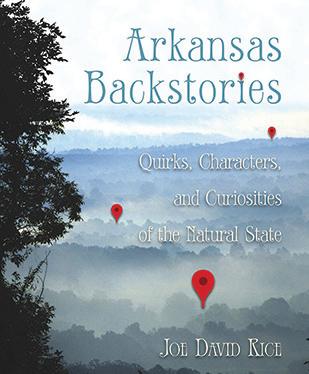



Embrace your sense of adventure and answer the call of the wild with an unforgettable journey through the breathtaking beauty of Dogwood Canyon, where fun and discovery await around every corner! Dogwood Canyon Nature Park is proudly part of the Johnny Morris Conservation Foundation.



Named “Best Place to Have a Baby ” by
AY readers for six ocnsecutive years
Nurser y alliance with Arkansas Children’s Hospital
Specialized team including a newborn speech pathologist and a neonatolog y APRN
Our Labor & Delivery team brings together innovative services and specialized care to welcome your baby into the world – with compassionate providers here for you both. This is not mass-produced health care This is your family’s health care.


